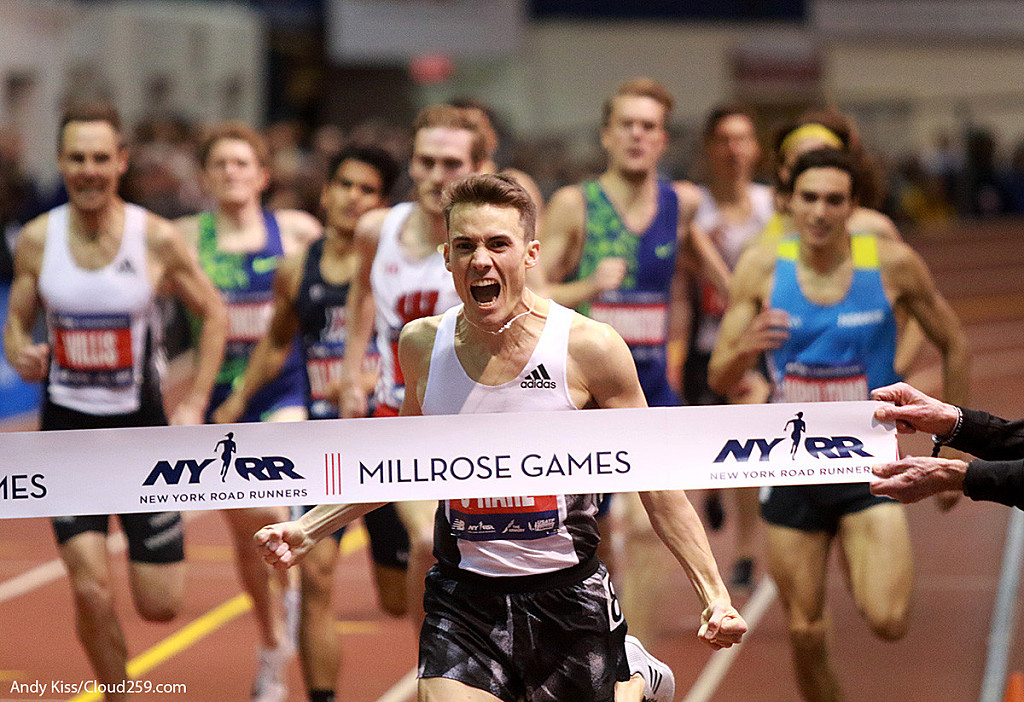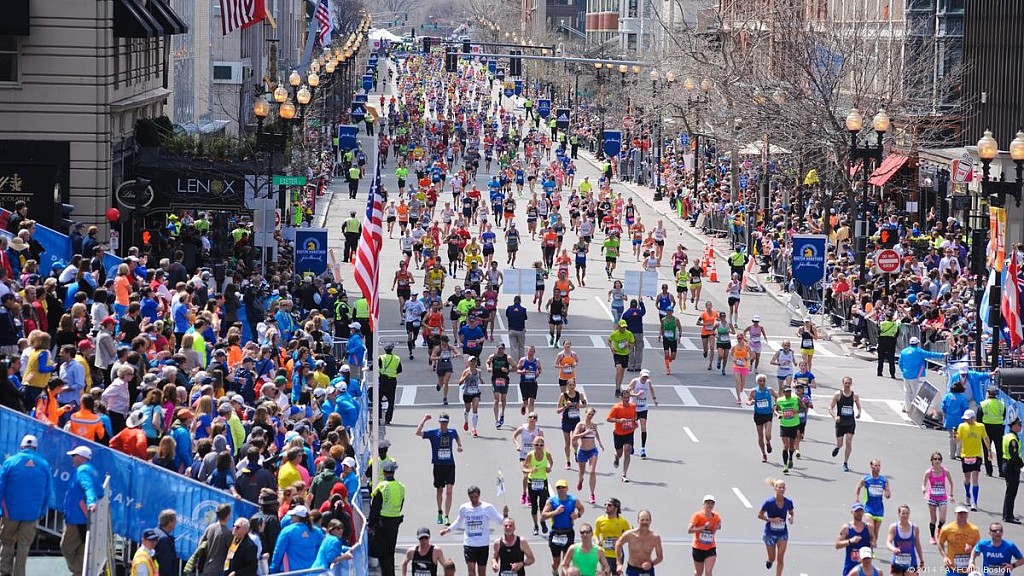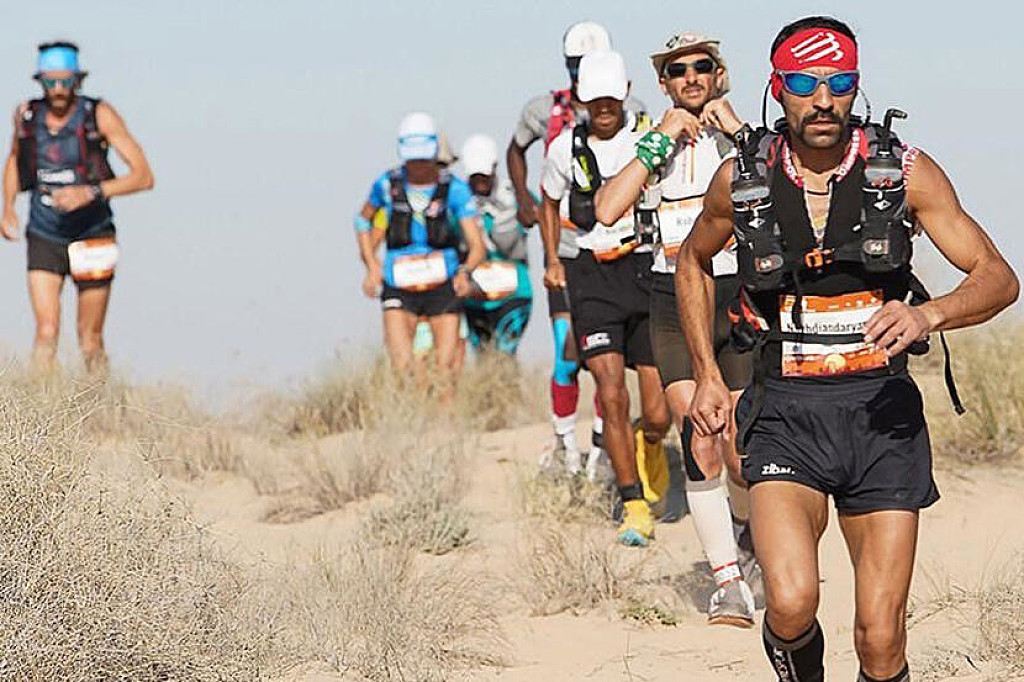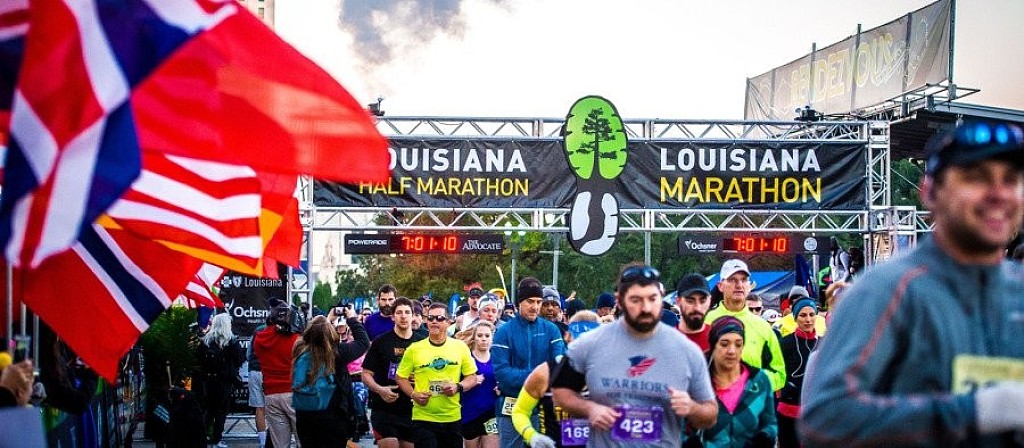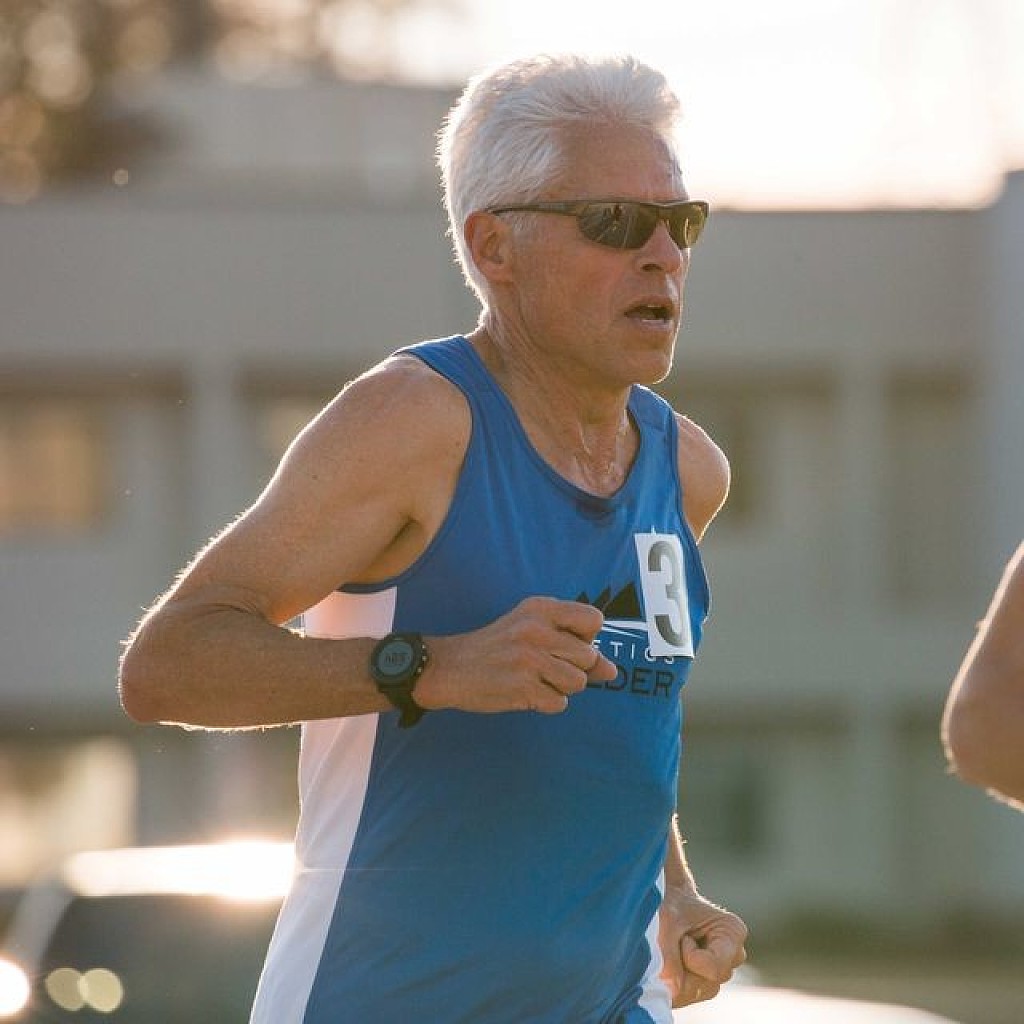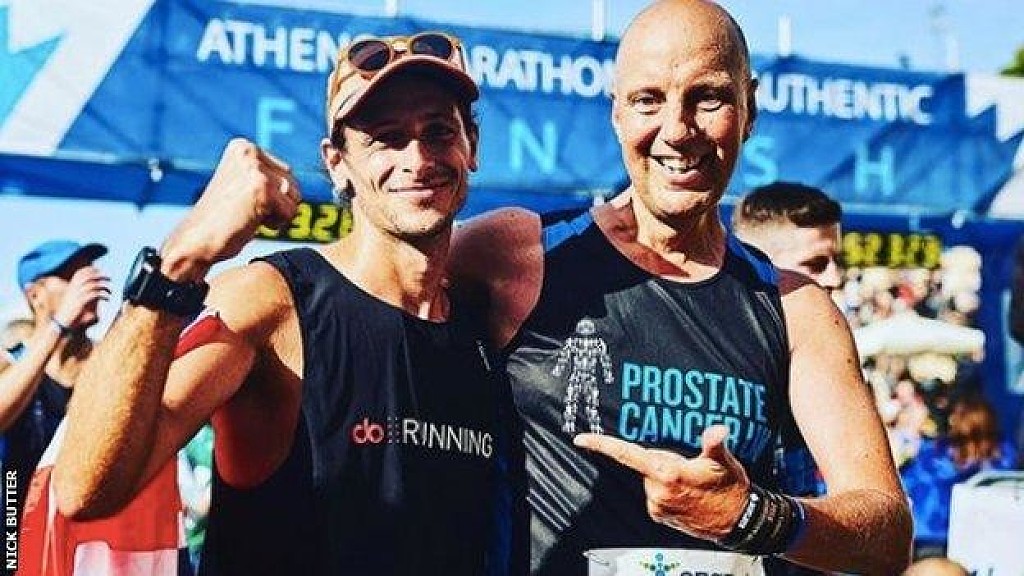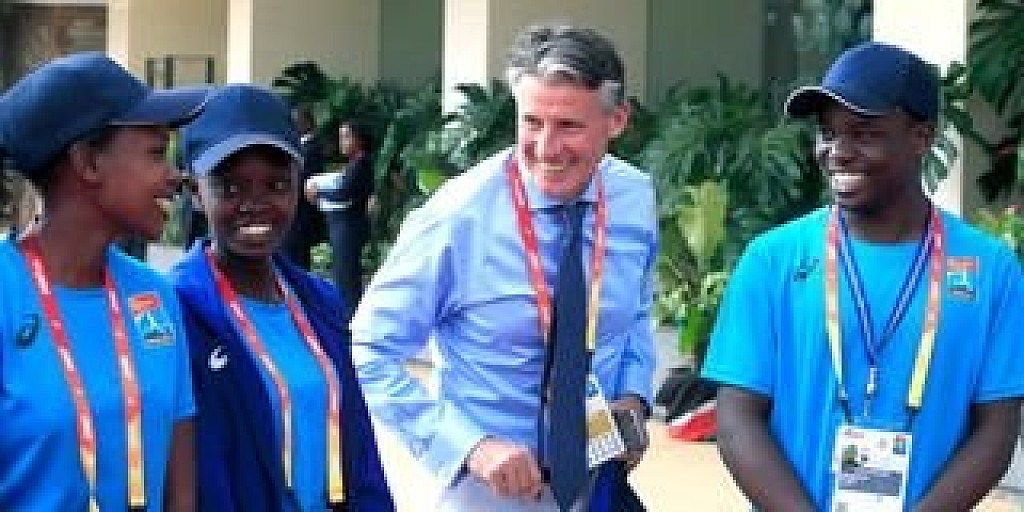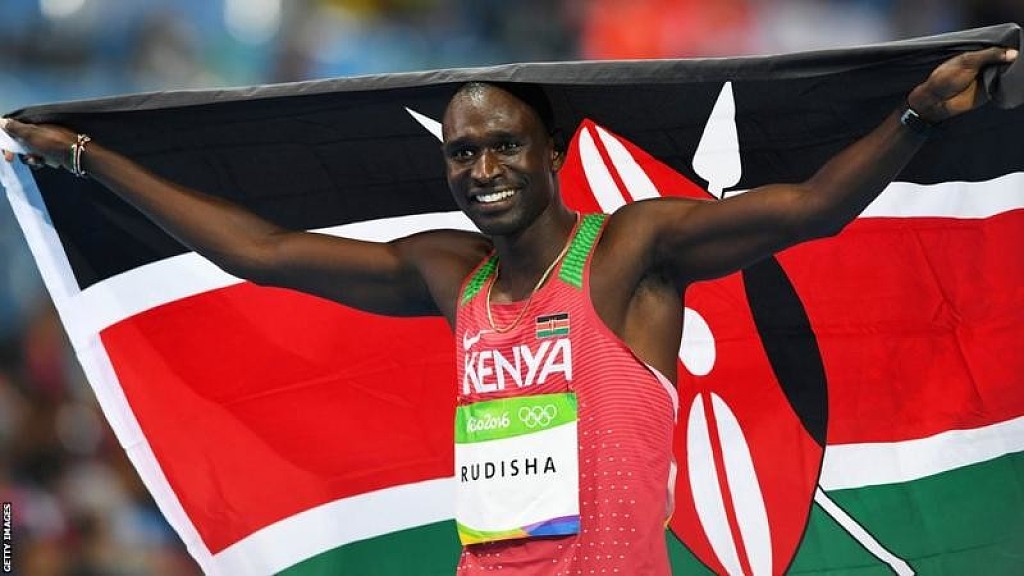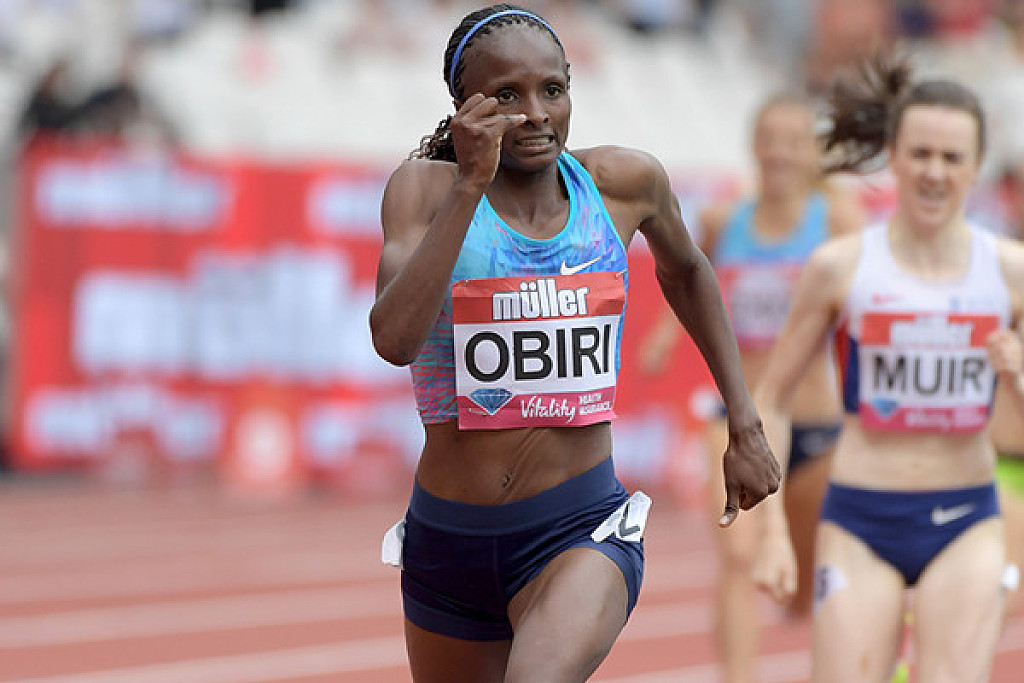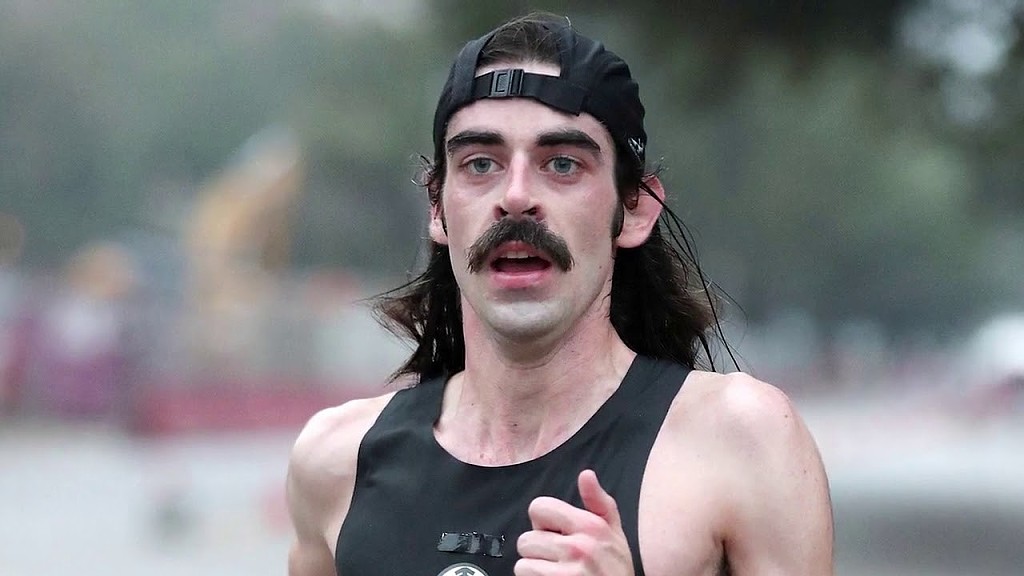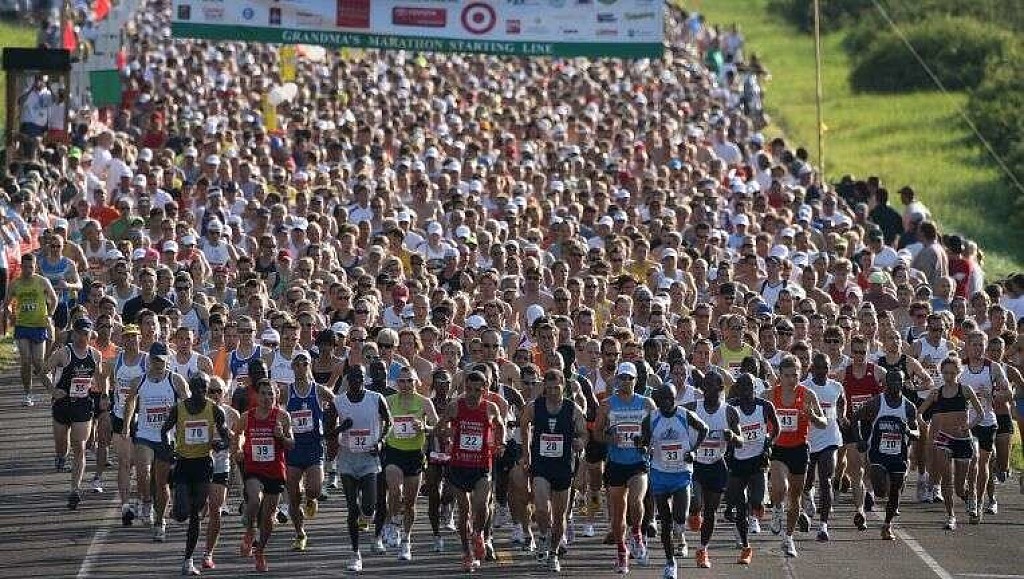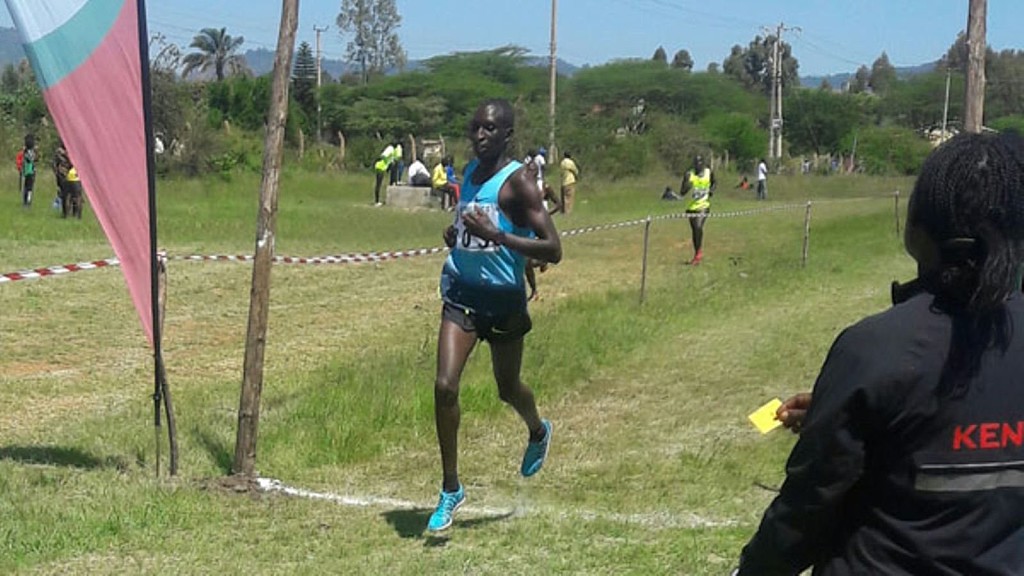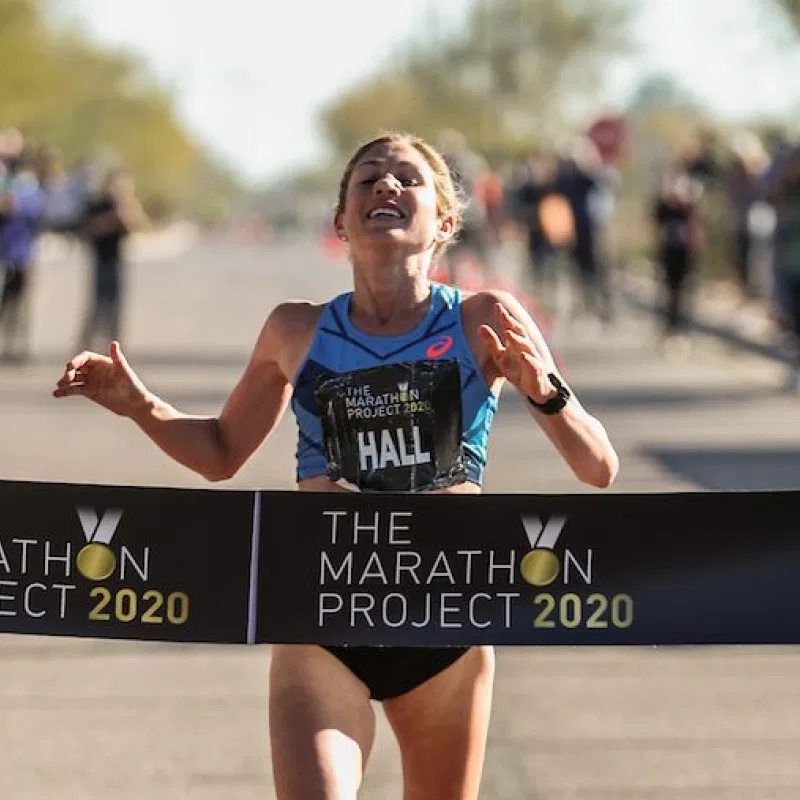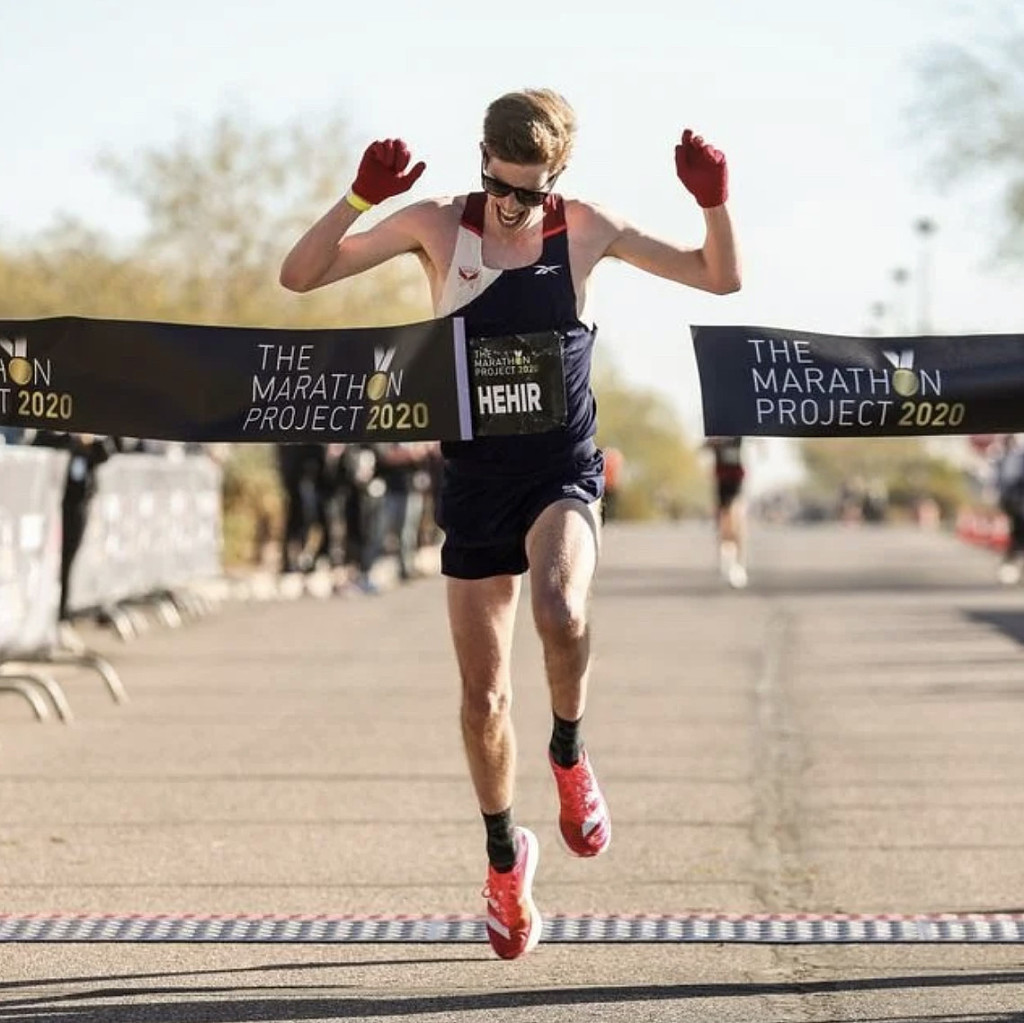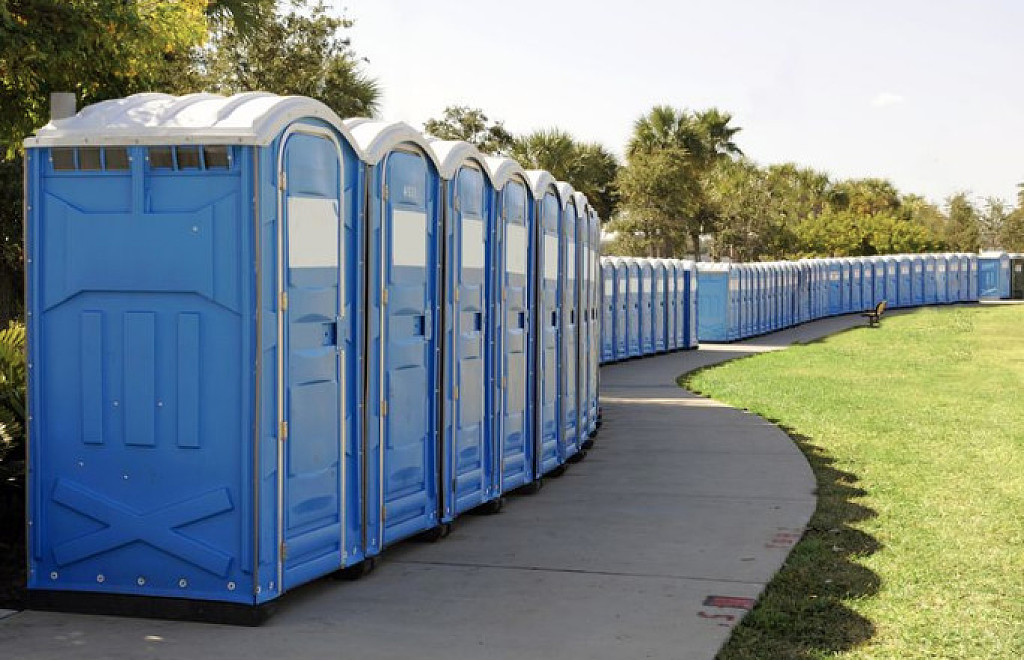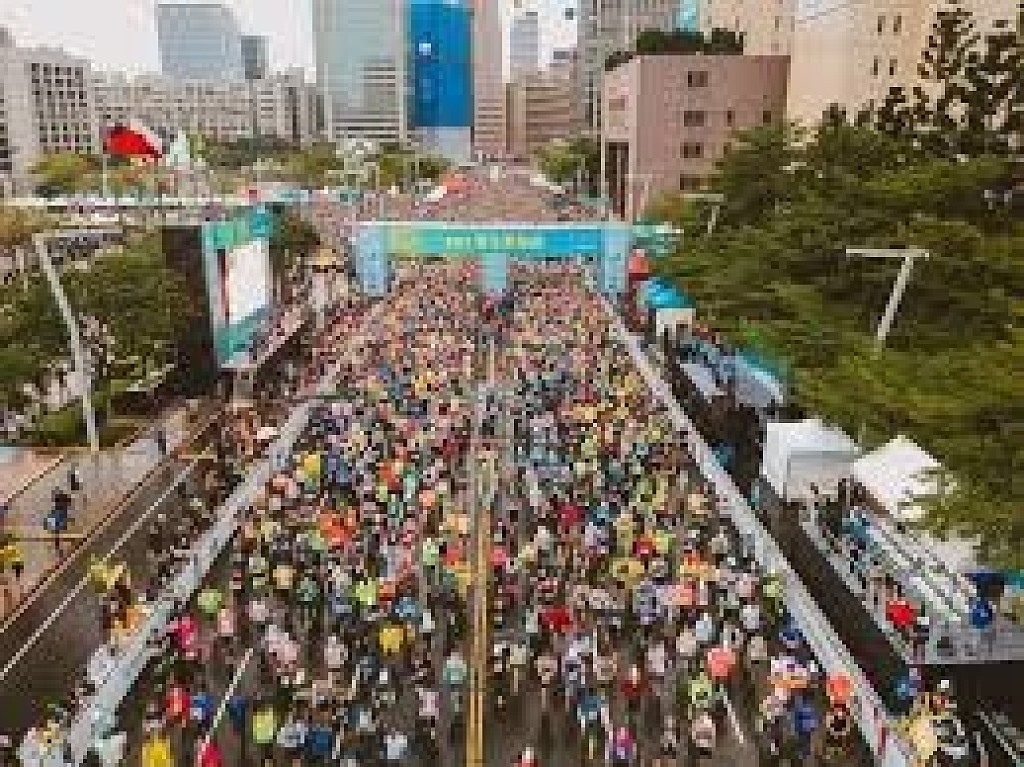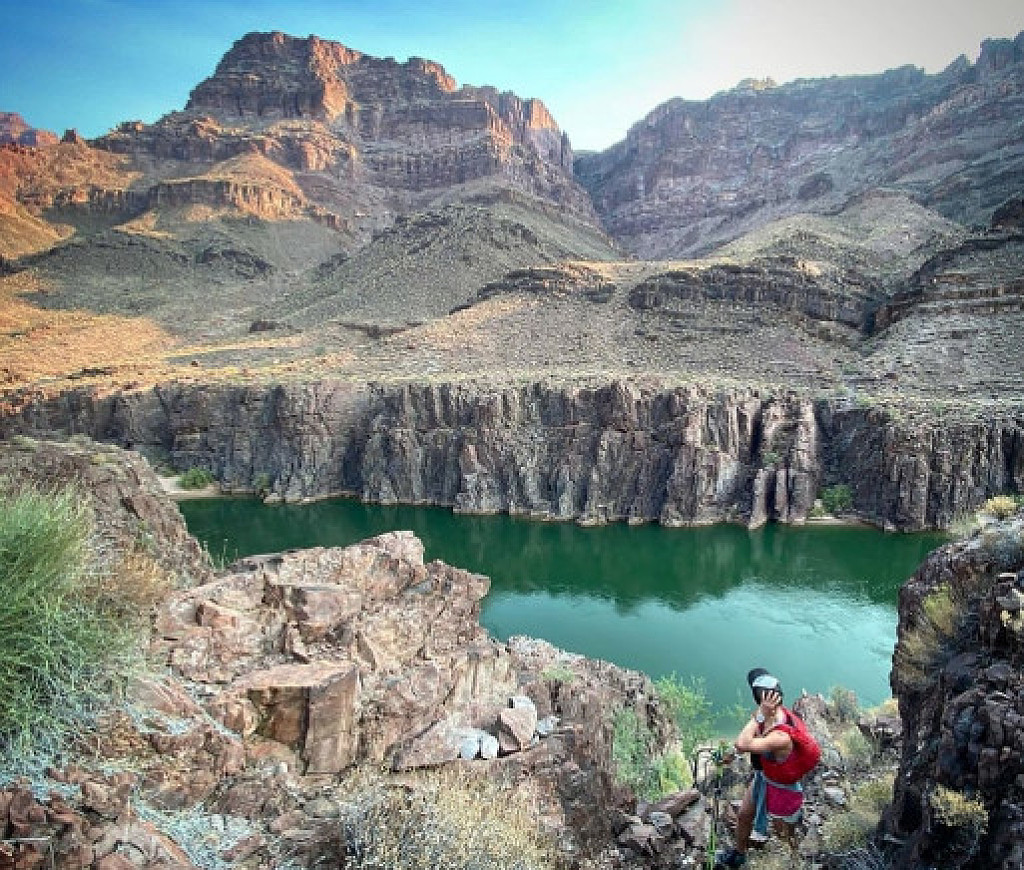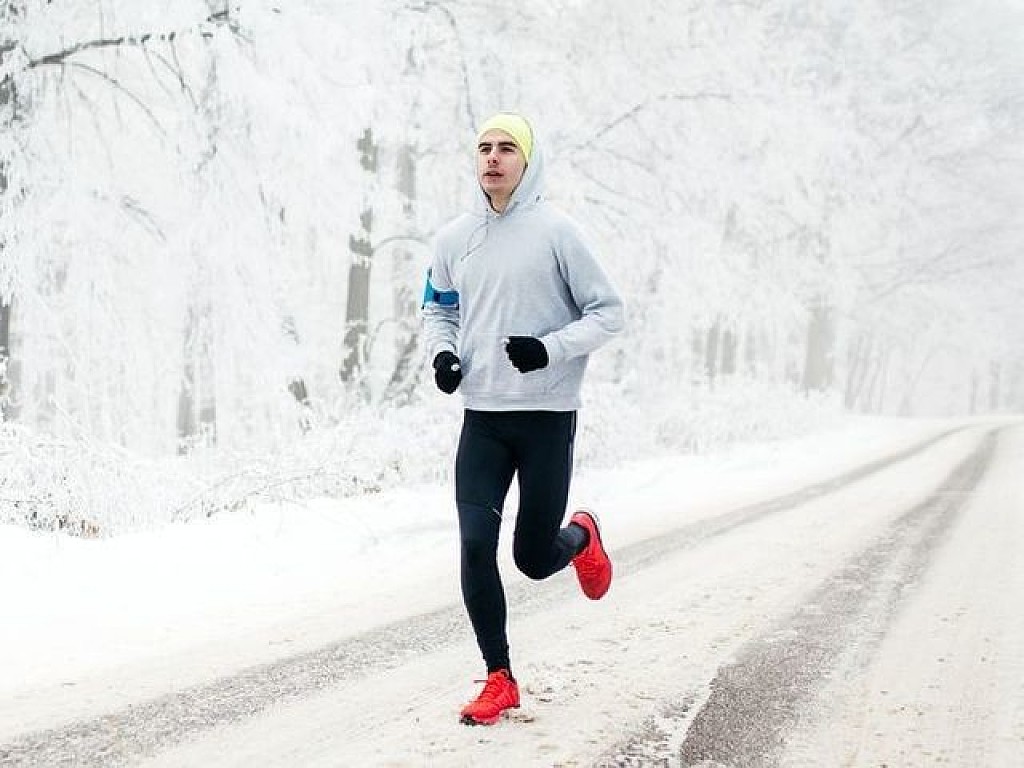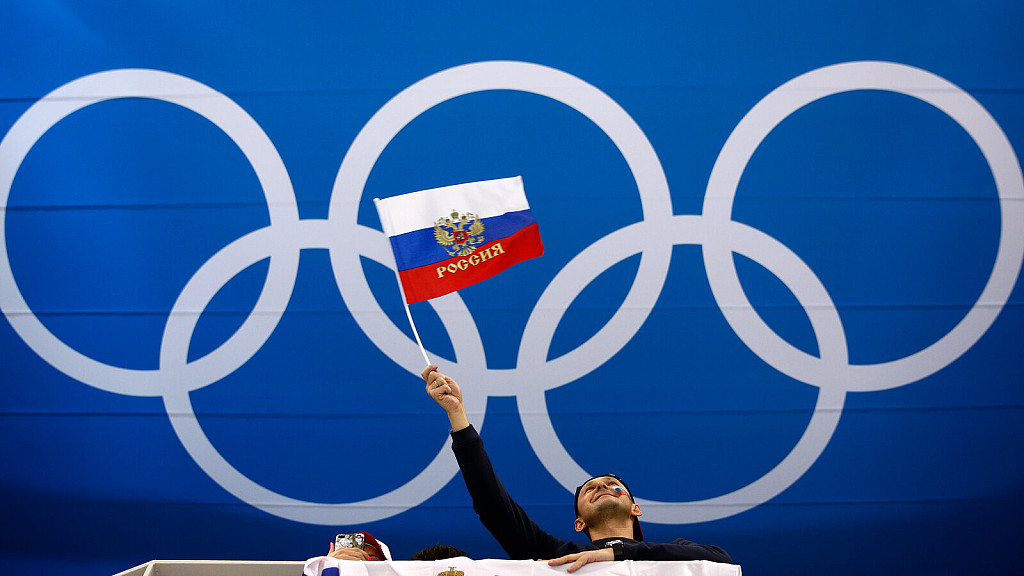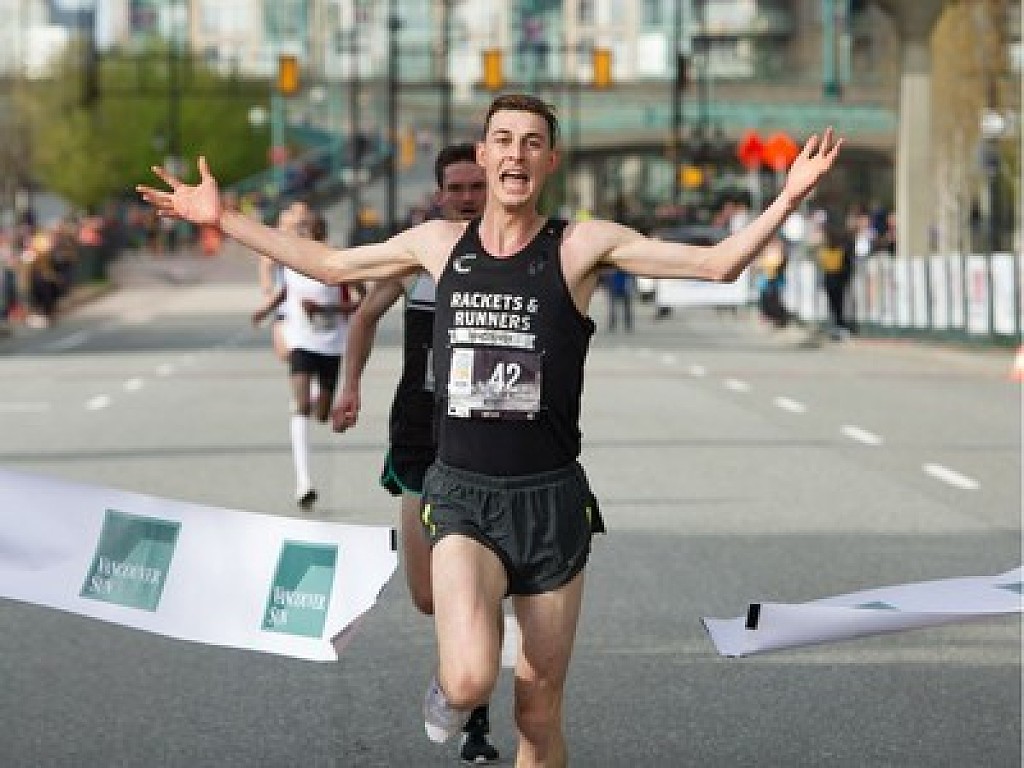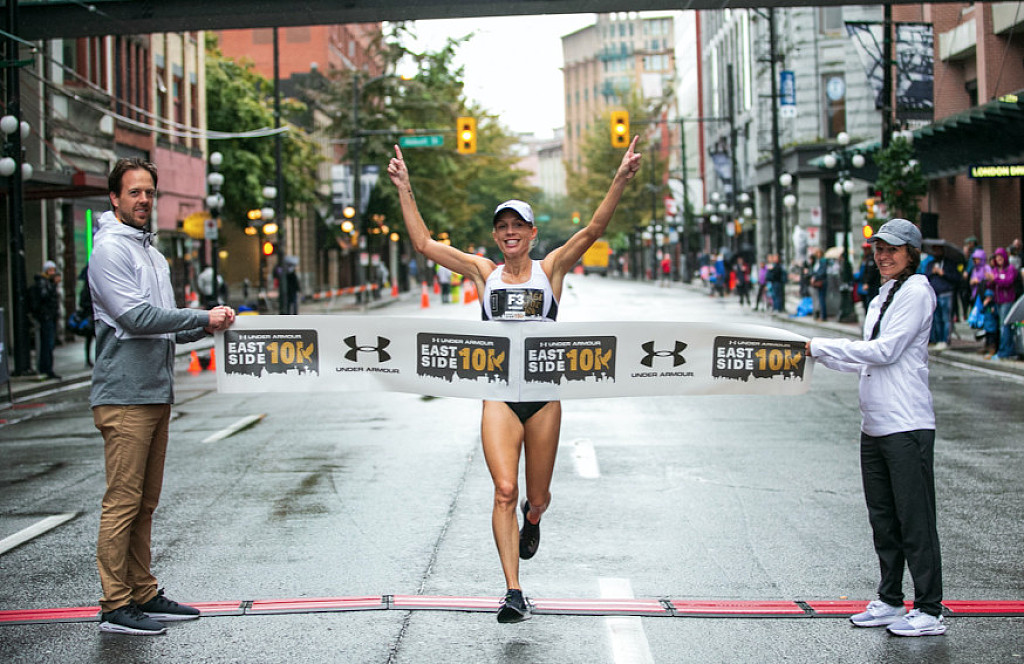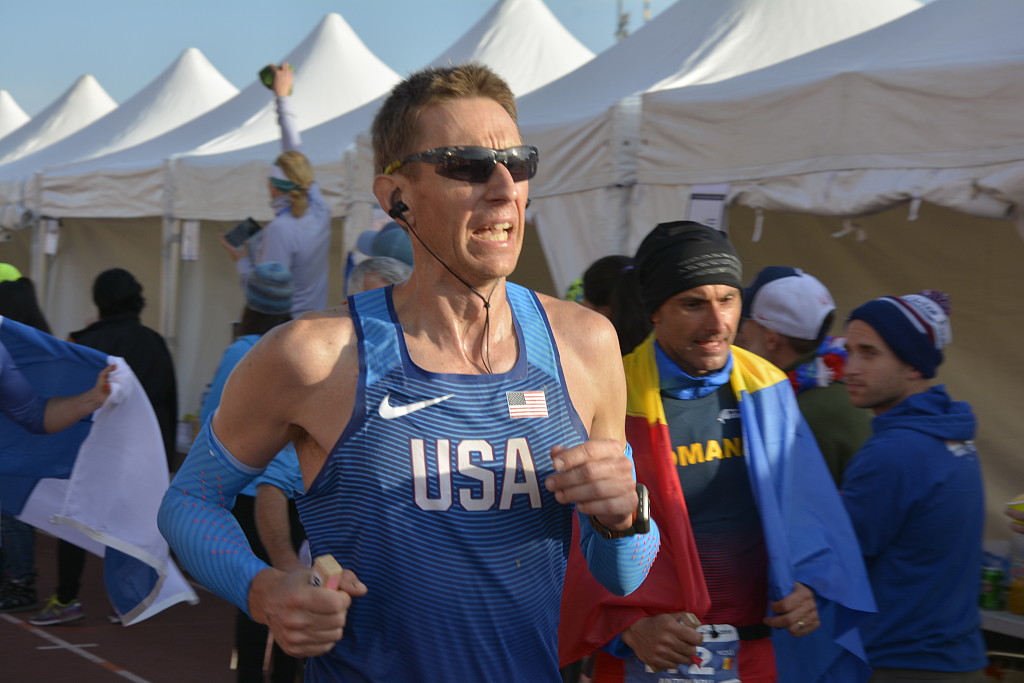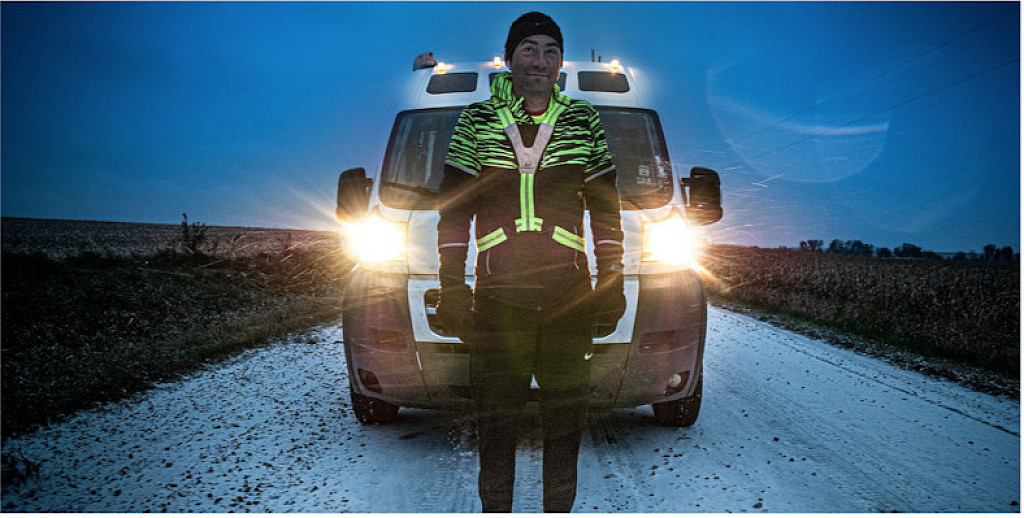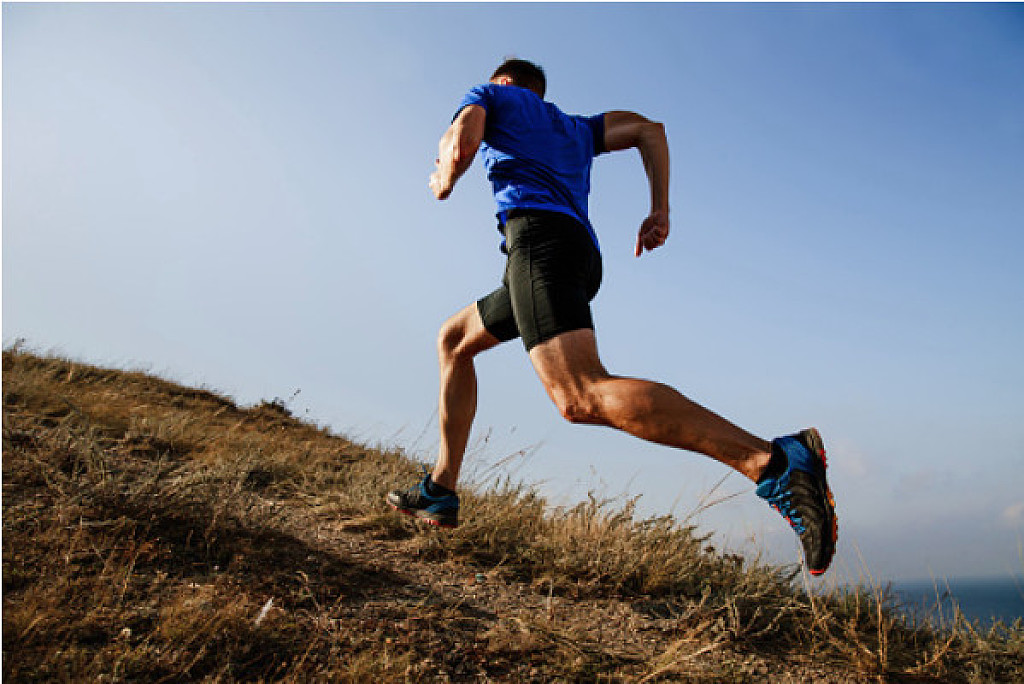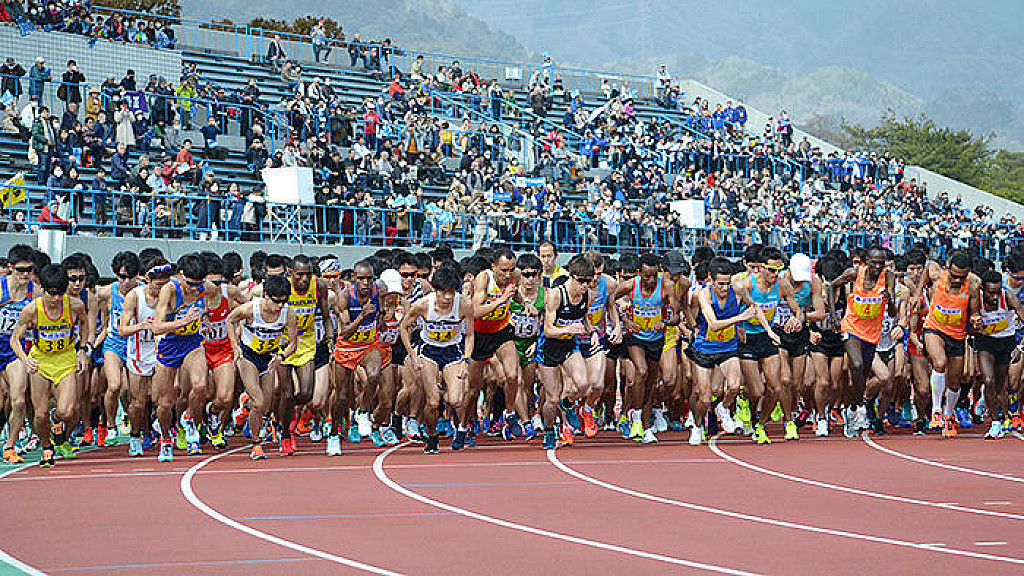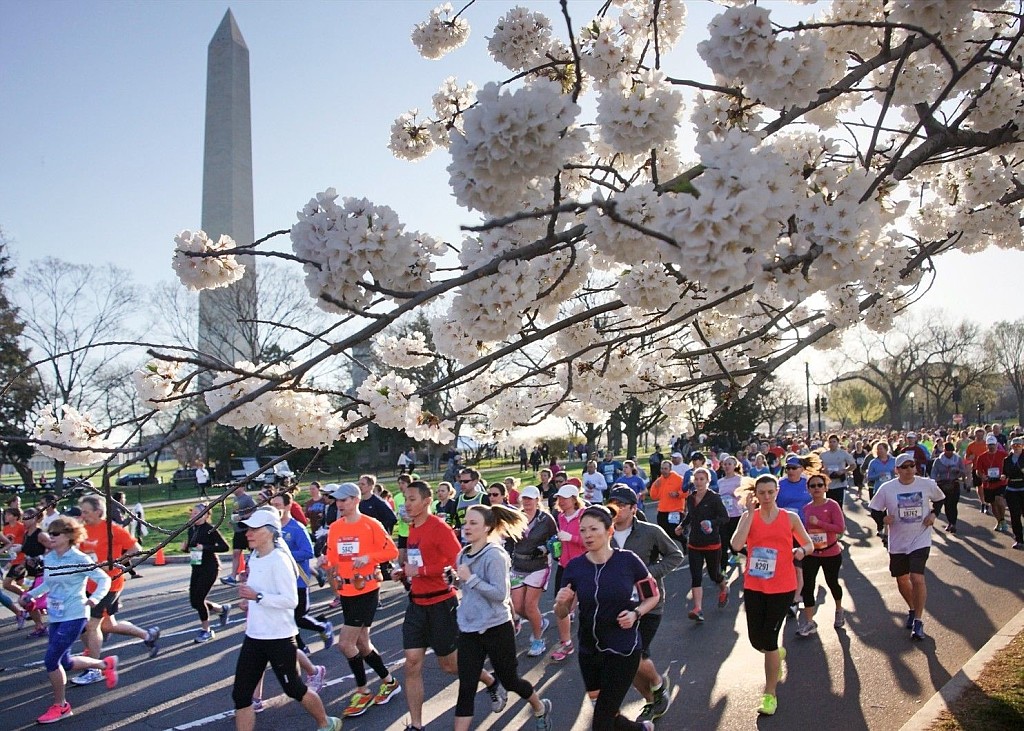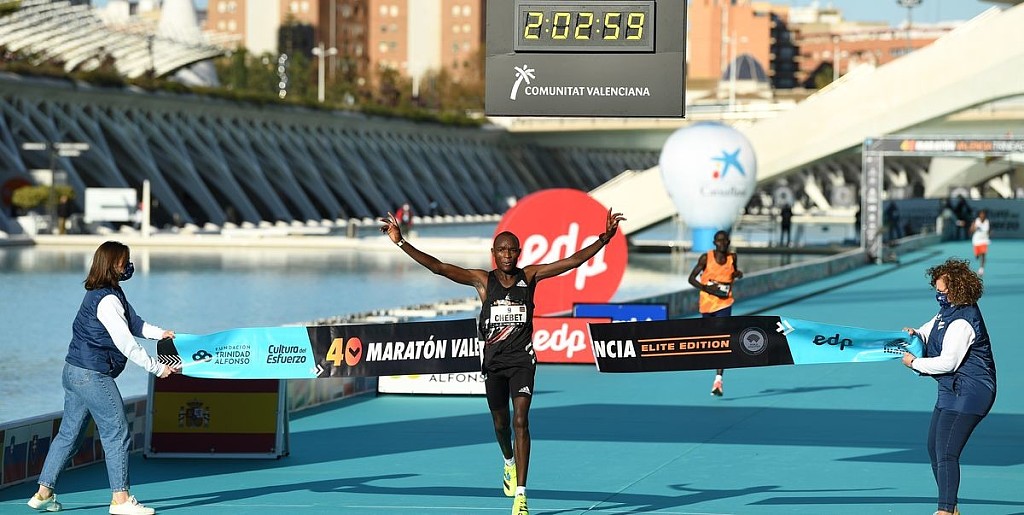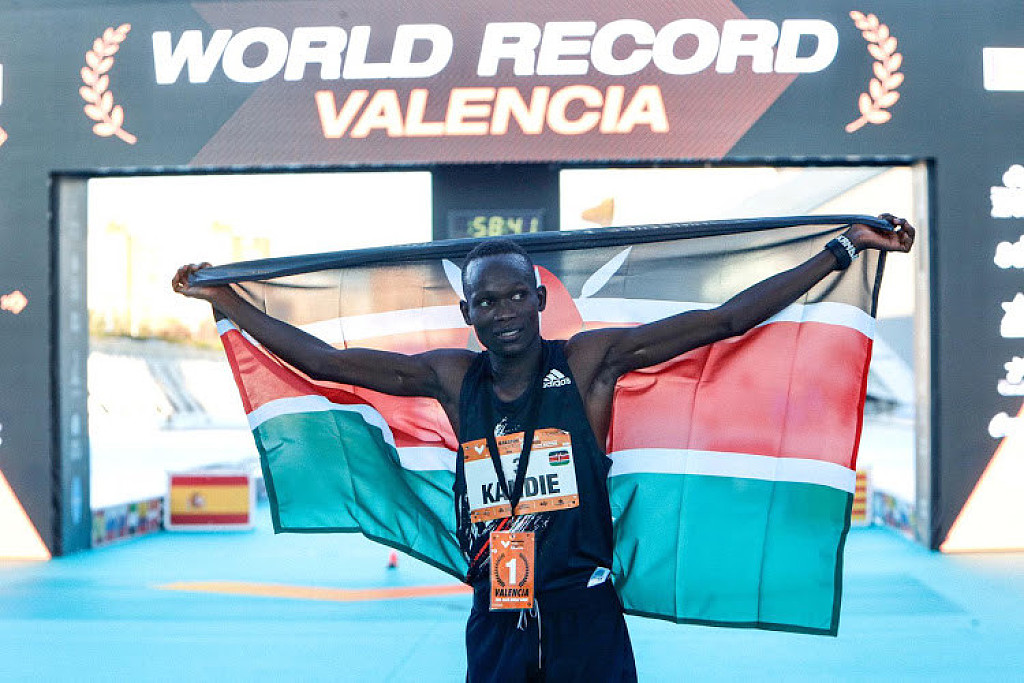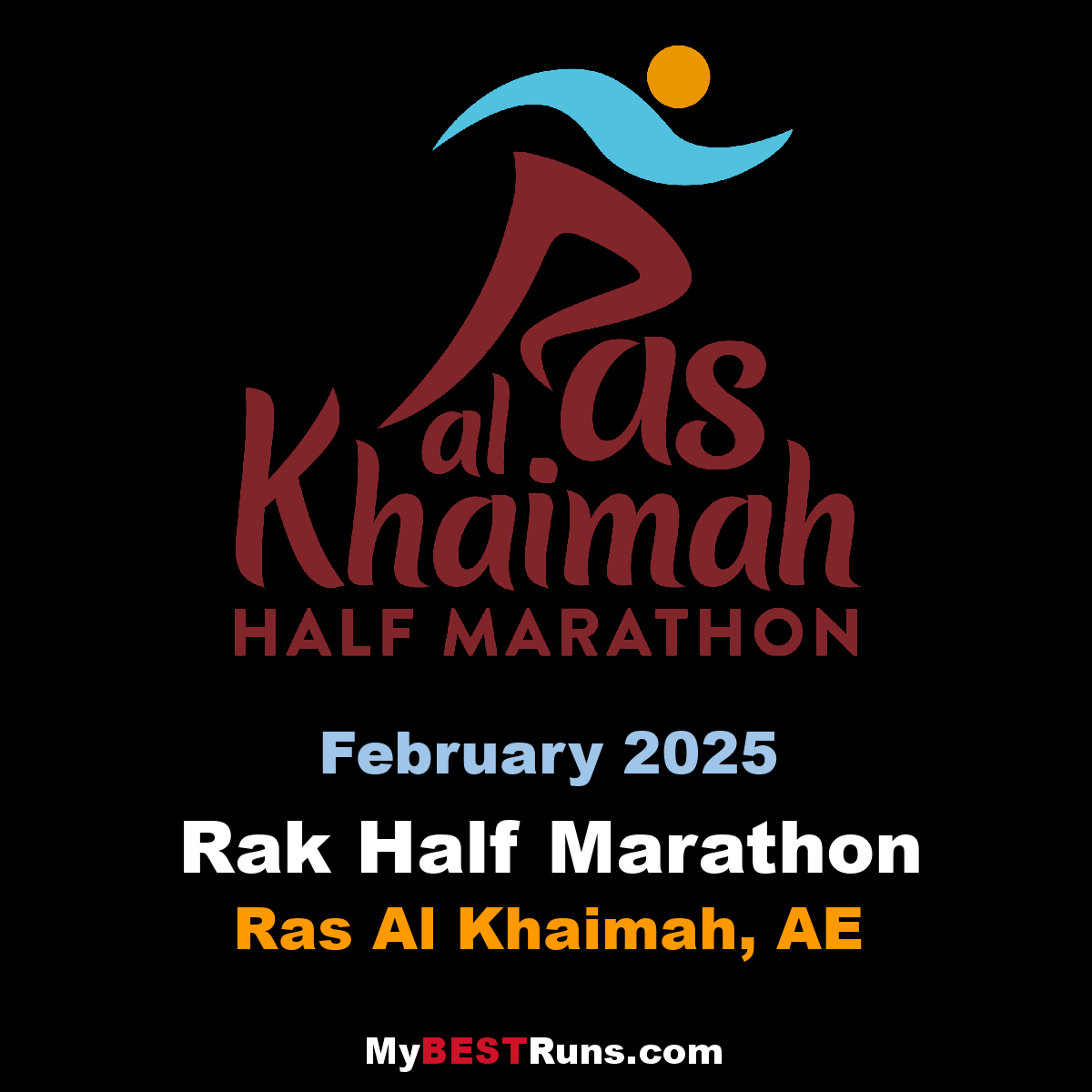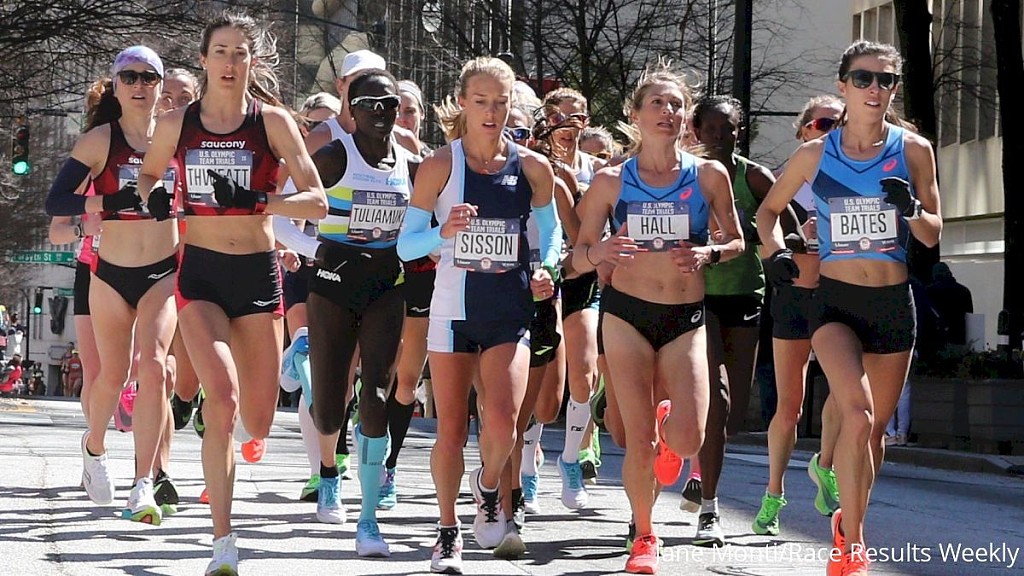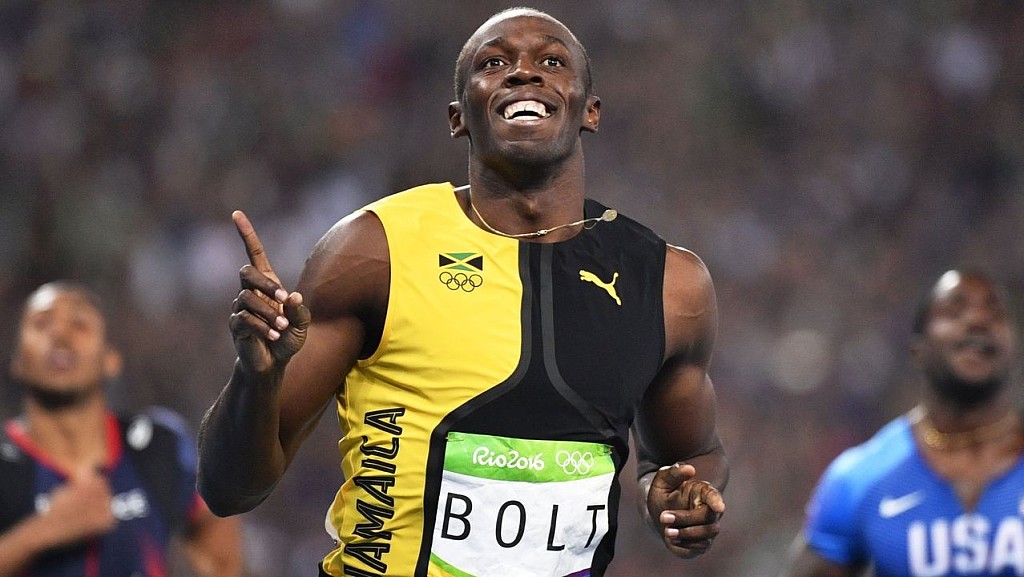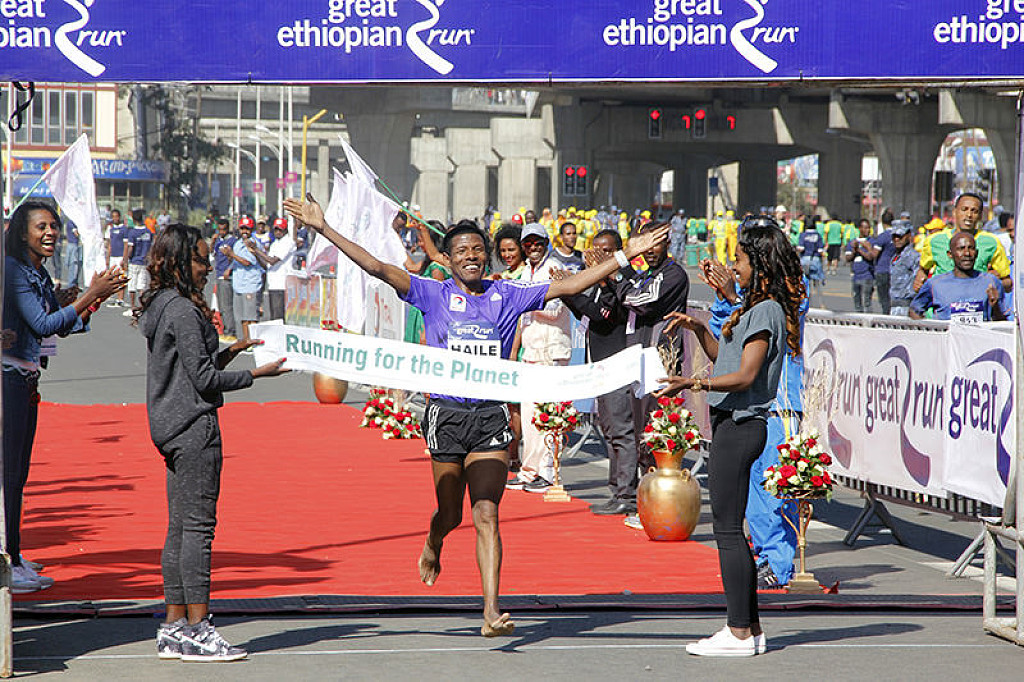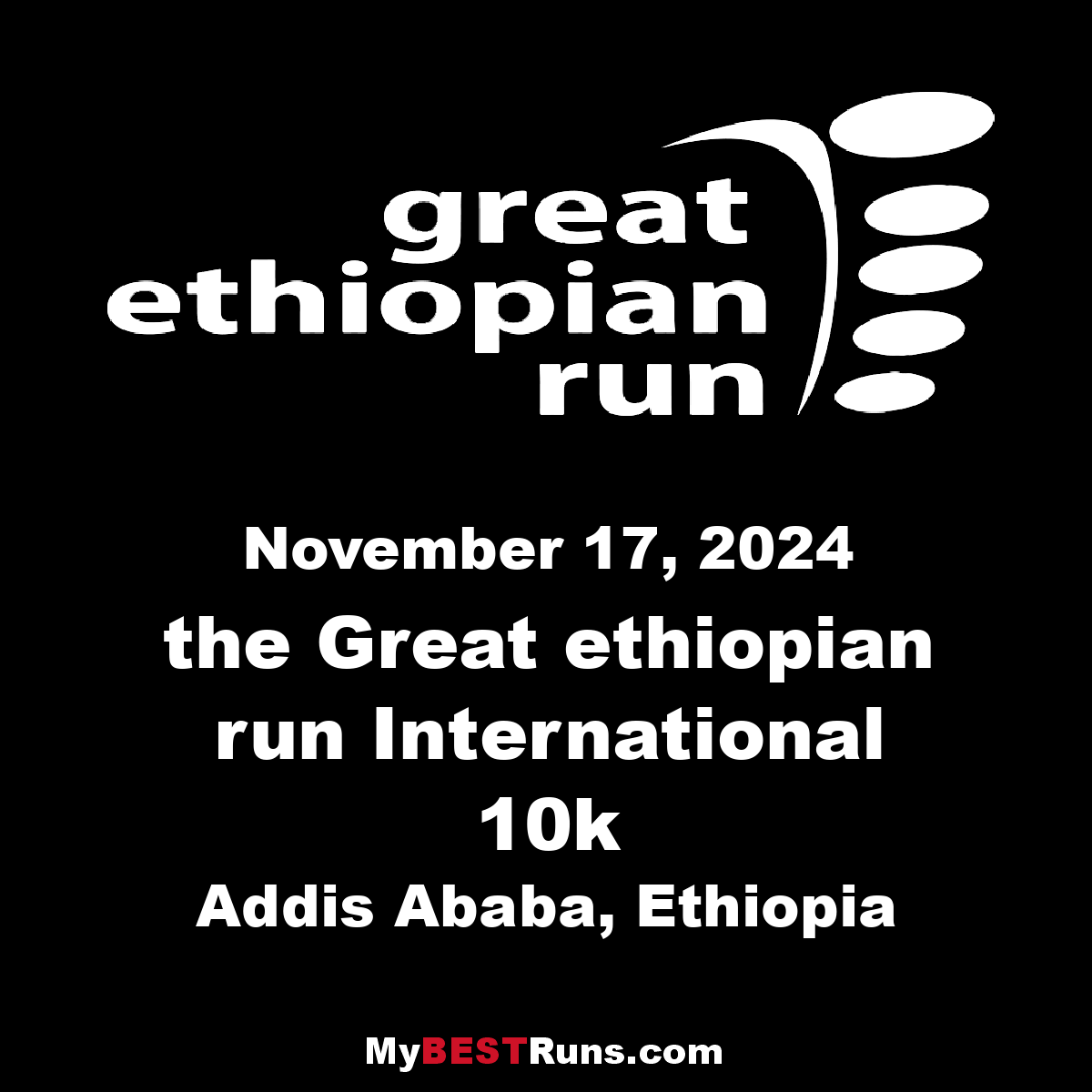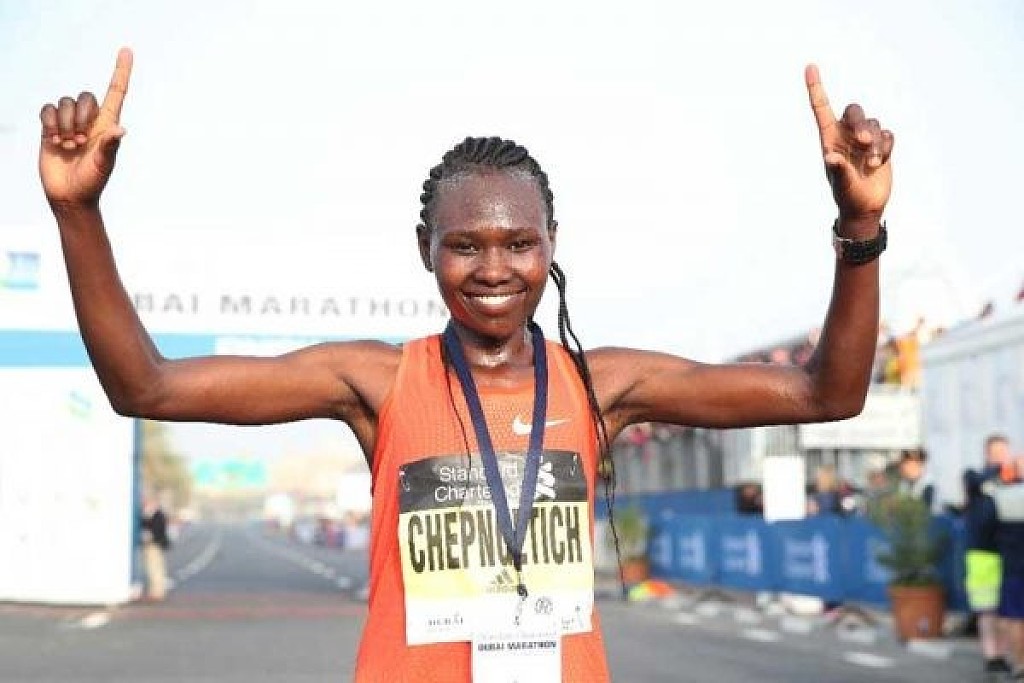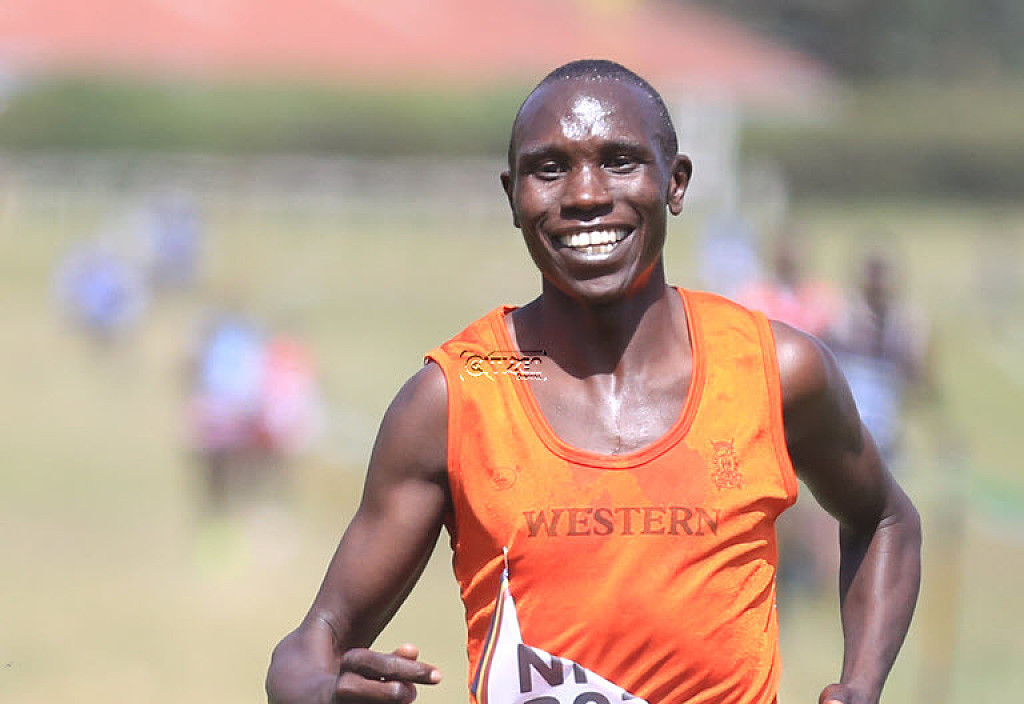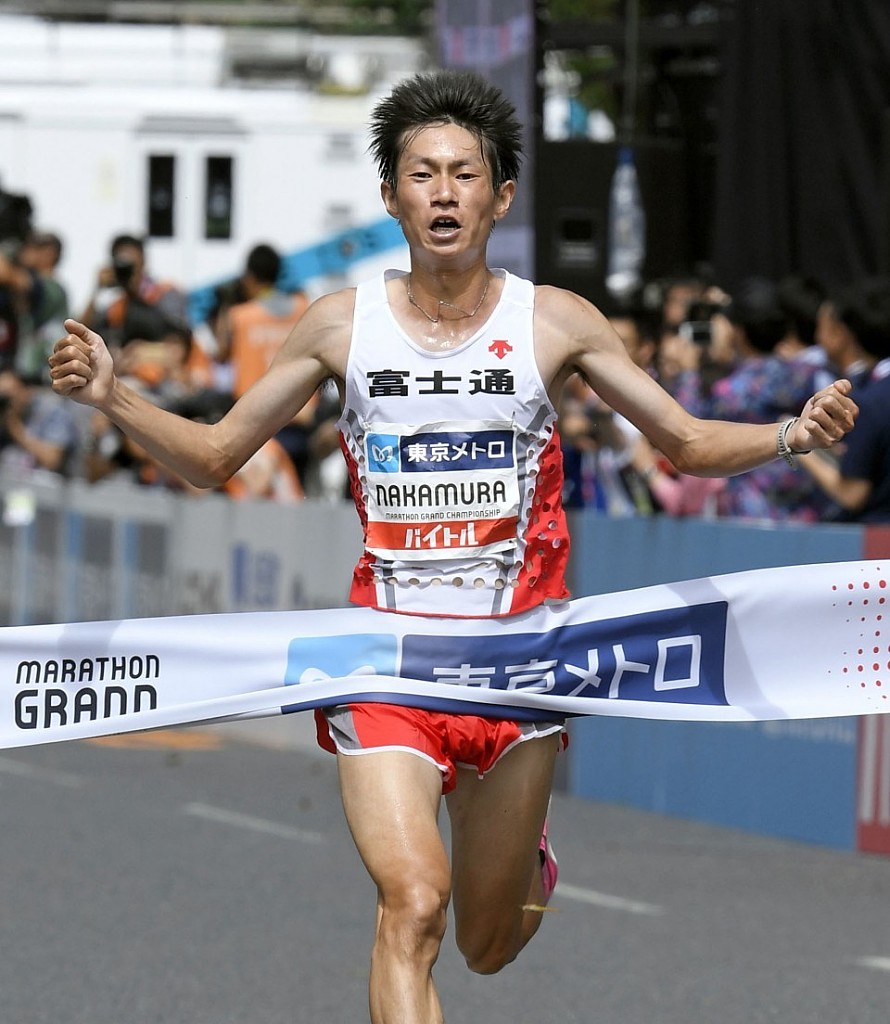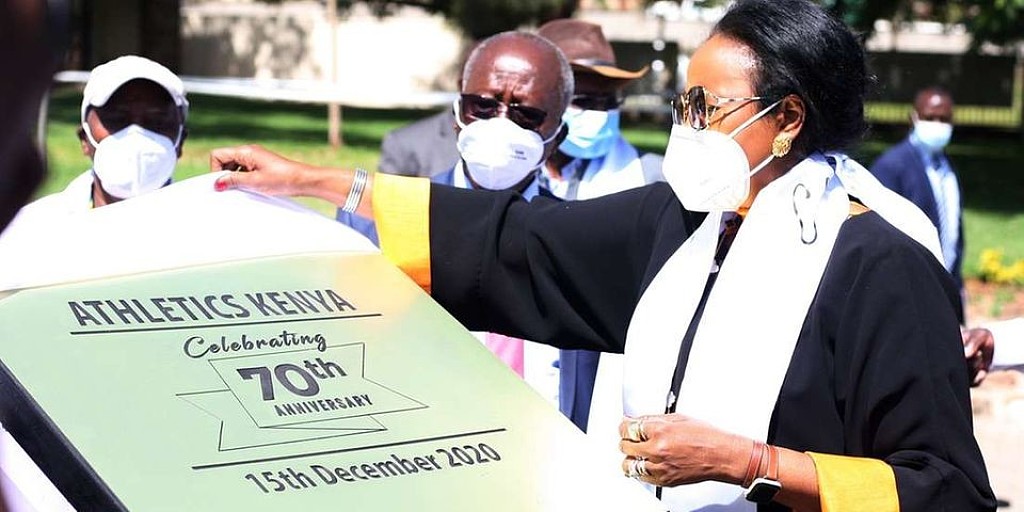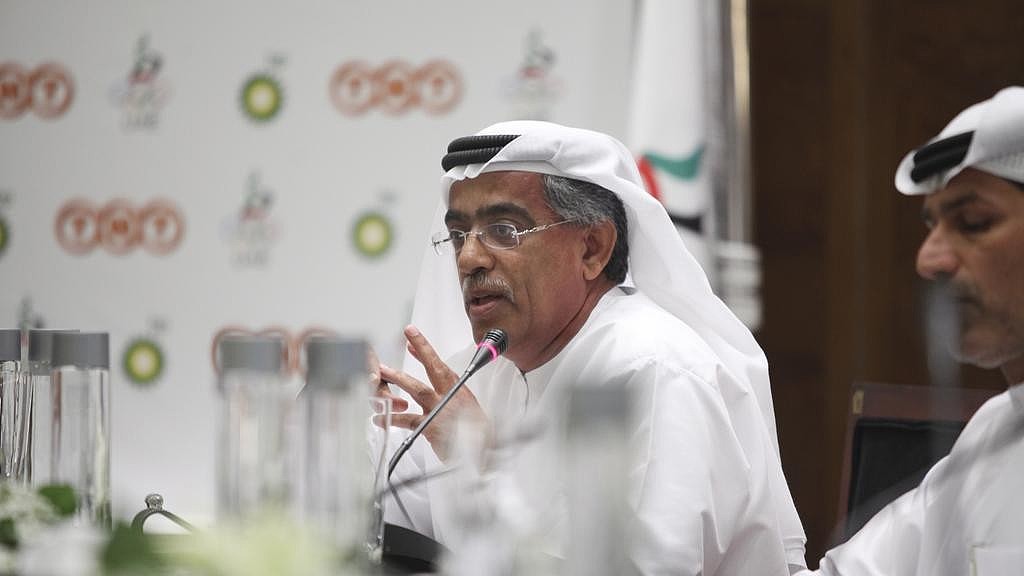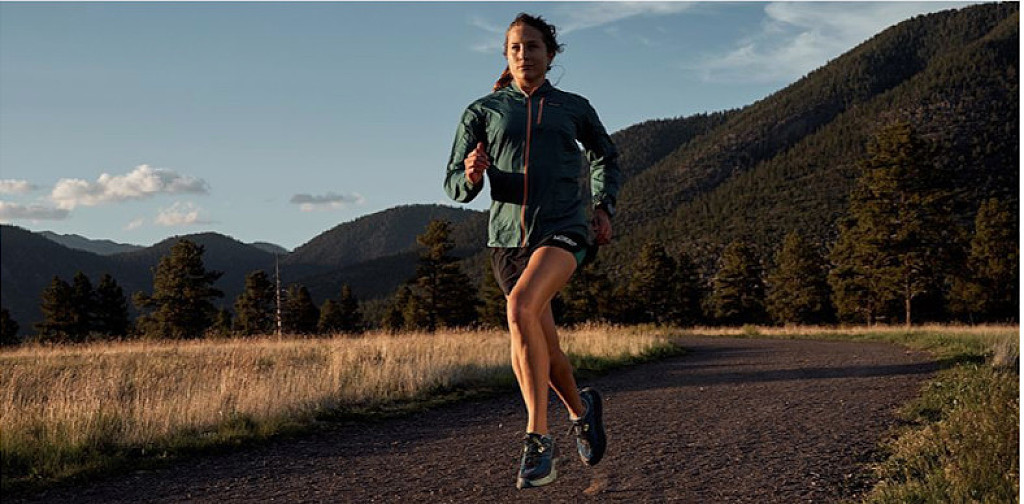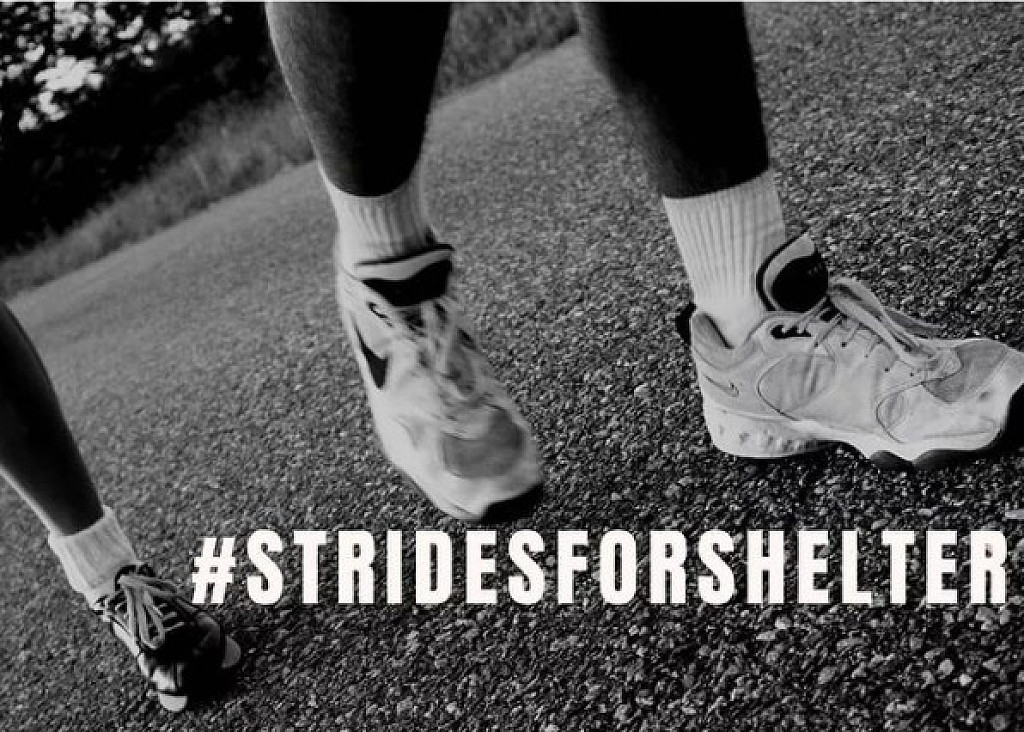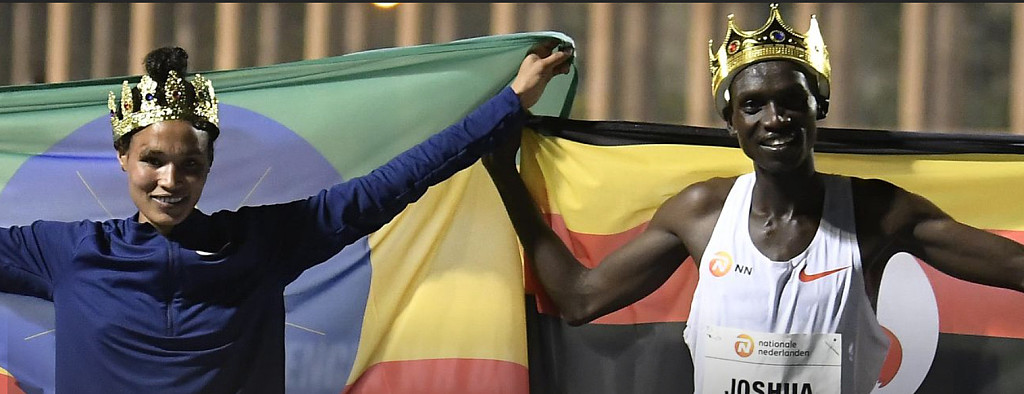Running News Daily
Running News Daily is edited by Bob Anderson in Mountain View, California USA and team in Thika Kenya, La Piedad Mexico, Bend Oregon, Chandler Arizona and Monforte da Beira Portugal. Send your news items to bob@mybestruns.com Advertising opportunities available. Over one million readers and growing. Train the Kenyan Way at KATA Running Retreat Kenya. (Kenyan Athletics Training Academy) in Thika Kenya. Opening in june 2024 KATA Running retreat Portugal. Learn more about Bob Anderson, MBR publisher and KATA director/owner, take a look at A Long Run the movie covering Bob's 50 race challenge.
Index to Daily Posts · Sign Up For Updates · Run The World Feed
No Millrose Games in 2021 due to the coronavirus pandemic
The iconic meet had been scheduled to take place on February 13.
The 2021 Millrose Games has been cancelled due to the coronavirus pandemic.
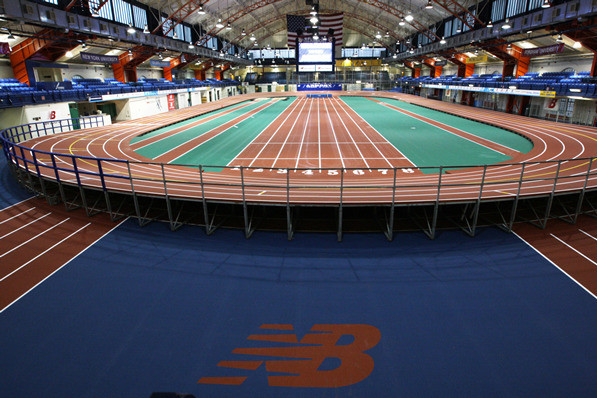
The 114th edition of the iconic meeting, which was first held in 1908, had been scheduled to take place on Saturday February 13 at The Armory in New York City.
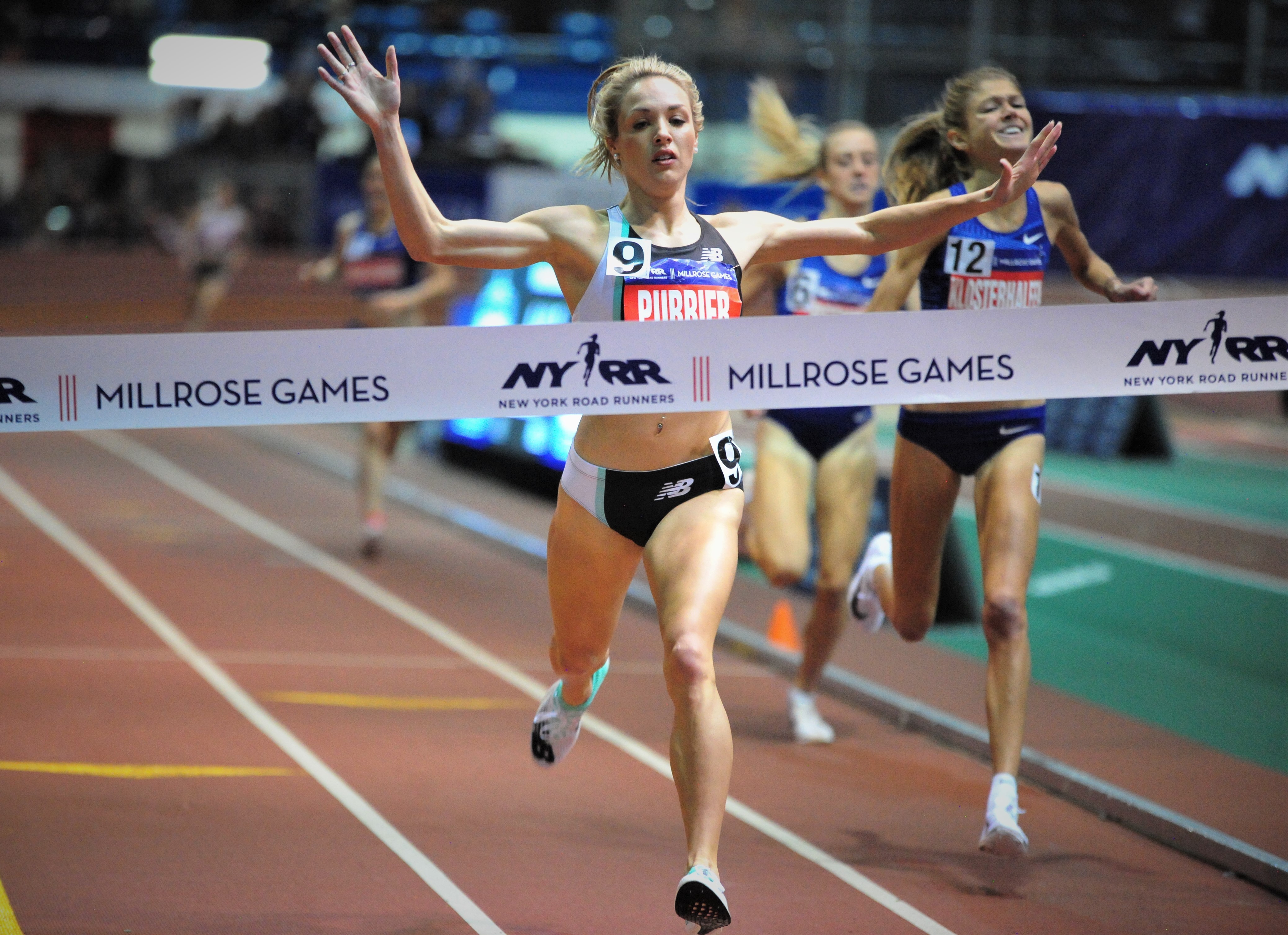
But the event will now return on February 12, 2022.
“The Armory Foundation has decided after extensive consultations with health experts that, due to rising cases nationally of Covid-19, it is advisable to cancel the 114th Millrose Games, previously scheduled for February 13, 2021 at The Armory in New York City,” reads a press release.
“First run in 1908, the Millrose Games has featured legends such as Paavo Nurmi, Eamonn Coghlan, Allyson Felix, Joetta Clark, Carl Lewis, Jackie Joyner-Kersee, Bernard Lagat and many others. However, given the health situation in New York and across the country, the prudent thing to do is to abstain this coming year.”
Britain’s Chris O’Hare (pictured) is a Millrose Games regular, with the multiple European medallist having won the famous Wanamaker Mile in both 2018, when he became the first British man to win the prestigious indoor race since John Whetton in 1965, and in 2020.
Meet director Ray Flynn said: “Canceling the iconic Millrose Games was a very difficult decision, but with all the health concerns surrounding an event of this complexity, rather than risking the athletes, officials, meet personnel, media and others, we have decided to wait until February 12, 2022, for the next edition of the Millrose Games."
(12/24/2020) ⚡AMPby Athletics Weekly
NYRR Millrose Games
The NYRR Millrose Games,which began in 1908 as a small event sponsored by a local track club, has grown to become the most prestigious indoor track and field event in the United States. The NYRR Millrose Games meet is held in Manhattan’s Washington Heights at the New Balance Track & Field Center at the Armony, which boasts a state-of-the-art six-lane,...
more...As the coronavirus pandemic has forced the Boston Athletic Association to postpone the marathon from April to the fall, the B.A.A. is launching a virtual community where runners can come together online
The B.A.A. on Tuesday announced that it’s setting up “Athletes’ Village,” a virtual community for runners of all levels.
Athletes’ Village will be an online hub for free monthly challenges as well as paid training programs, and will serve as a central location for participant and volunteer history, official race results, race updates, and race registration.
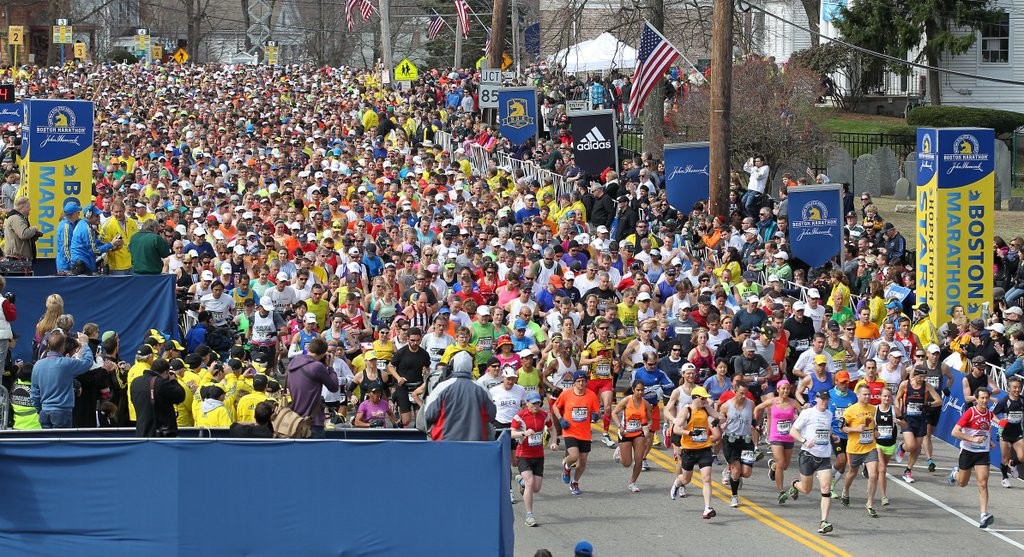
The B.A.A. is looking to engage with 125,000 athletes across the world through Athletes’ Village in the lead up to next year’s 125th Boston Marathon.

“Whether you are an accomplished marathoner, looking to increase your physical activity in the new year, or brand new to the sport of running, Athletes’ Village will provide a space for you to achieve your fitness goals and celebrate your accomplishments with a global community,” Tom Grilk, president & CEO of the B.A.A., said in a statement.
This year’s Boston Marathon was initially postponed from April to September. Then the September in-person race was canceled, and the B.A.A. held a virtual race in its place — during which runners around the country — and world — ran their own personal marathons.
Now the 2021 Boston Marathon has been postponed from April to the fall. Officials hope an in-person race will be possible by then following the coronavirus vaccine rollout.
Ahead of the fall, Athletes’ Village will formally launch on Jan. 5 with a free, six-week Winter Warm-Up training program designed for new runners, runners recovering from injury, and anyone looking to be more active in 2021.
“January is a perfect time to plan your fitness goals for the year,” said Mark Carroll, B.A.A. High Performance coach. “Whether those goals include running your first or fastest 5K, we’ve designed training plans and monthly challenges that will push you to achieve your goals.”
Athletes’ Village will also feature message boards for participants to connect with one another.
Grilk said, “Athletes’ Village will challenge the most experienced runners, introduce the sport to new runners, and be a platform for all to benefit from running and living an active lifestyle.”
(12/23/2020) ⚡AMPby Rick Sobey
Boston Marathon
Among the nation’s oldest athletic clubs, the B.A.A. was established in 1887, and, in 1896, more than half of the U.S. Olympic Team at the first modern games was composed of B.A.A. club members. The Olympic Games provided the inspiration for the first Boston Marathon, which culminated the B.A.A. Games on April 19, 1897. John J. McDermott emerged from a...
more...Al Marmoom Ultramarathon returns to Dubai in 2021
Looking for the ultimate fitness test for 2021? This one will test you – and is for experienced runners only.
Al Marmoom Ultramarathon is taking place on Friday March 5, 2021, in Dubai’s Al Marmoom Desert Conservation Reserve and it’s run over a whopping 50km.
The race will require endurance, courage and determination and will test runners to the limit.You’ll need to be fully trained and ready for it if you want to take part, but if you’re more of a casual runner, or are taking it up as a New Year’s resolution, then there are shorter 10km and 5km races too.

All three races will take runners into the desert and across both hard and soft sand, plus across the rolling dunes – so get ready for some spectacular scenery while you run. The desert reserve is also home to more than 200 species of native birds and more than 150 species of migratory birds.
There’s also 10km of lakes and it’s a protected area.
The race was launched in 2020, and this will be the second edition of the Al Marmoom Ultramarathon. All runners will get finishers medals, while the top three rankings in each category – both for male and female – will pick up a trophy. Registration is open now and runs through until March 2.
Runners in the ultramarathon must be over 18, plus have a medical certificate to show they are fit enough to compete.
(12/23/2020) ⚡AMPAl Marmoom Ultra Marathon
Launched under the initiative of UAE Vice President and Prime Minister and Ruler of DubaiHis Highness Sheikh Mohammed bin Rashid Al Maktoum, Al Marmoom Desert Conservation Reserve will host the world's longest desert ultra-run Meraas Al Marmoom Ultramarathon. Meraas Al Marmoom Ultramarathon is a 300km, 100km and 50km race across desert terrain and will be held 9th to 11th December...
more...2021 Louisiana Marathon moves event to March
The Louisiana Marathon announced Tuesday, Dec. 22 that the annual event is moving from January to March.
According to the organization’s website, the dates are now set for March 6 and 7.
“If you are currently registered, please check your email for important instructions and options you have.

“We certainly did not want to make an event change such as this, but we are energized and optimistic about what this change means for our runners, our communities and the event itself. Thank you in advance for supporting us. Like so many, we are trying to navigate these times as best we can with what we have,” states the website.
Thousands of people participate in the marathon annually. The event features a 5k, 10k, the half marathon, and the full marathon. In past years, the event has included live music, food, and additional vendors.
The Louisiana Marathon is a USAT&F Certified course and an official Boston Qualifier route. It’s a popular race because of the “fast, flat, runner-friendly path through the lakes, along the river, and around downtown, on the university campus and in historic neighborhoods.”
(12/23/2020) ⚡AMPby Samantha Morgan
Louisiana Marathon
Welcome to the Louisiana Marathon Running Festival. Rendezvous with runners from 50 states and over 30 countries who share a passion for Louisiana as they race our fast, flat and festive courses. Stick around for the best Finish Fest on the bayou and enjoy tastes of gumbo, jambalaya, étouffée, duck confit and couch du lait (to name a few dishes...
more...Dan King breaks three U.S. masters records in South Carolina
Dan King of Boulder set three (pending) U.S. Masters 60-64 records this month after competing in the Five and Dime Athletics Meeting in Columbia, South Carolina. King competed in the 1 mile and 5000m.
In the mile, King ran 4:52.68 to break the existing U.S. record of 4:53.01 (Nolan Shaheed, 2012).

In the 5,000 meter race, King ran 16:48.67 to break a 35-year-old record of 16:52.00 set in 1985 by Jim O’Neil. En route he ran 9:58.77 for 3000m breaking the existing record by 9.1 seconds (Dale Campbell, 2015).
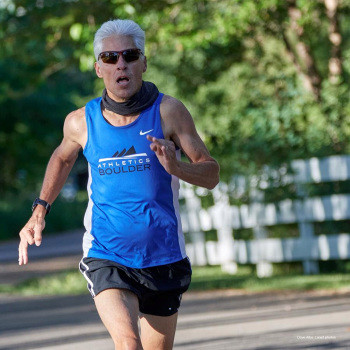
IN THEIR WORDS – DAN KING:
2020 has been an amazing running year for me, which is surprising given that my race calendar was completely shuttered last March.
Weirdly though, the cancellation of all of my targeted events allowed me really focus on the mile for the first time ever, and the improvements in my running economy led to both great results in some mile competitions in addition to an outstanding 5K to end what turned out to be a very long outdoor track season.
(12/23/2020) ⚡AMPby Colorado Runner
The man who ran a marathon in every country in the world
"All of a sudden, I had this horrendous pain in my shoulder and chest. You know what the tell-tale signs are, but when you feel it yourself, it's very certain what's going on."
Nick Butter suffered a minor heart attack two miles from the finish line of a marathon on the Polynesian island of Samoa. This was the 182nd marathon of a trip in which, over the course of 674 days, he ran one in every country in the world. He's the first person to achieve such a feat.

By this stage of the challenge, he'd already been shot at, mugged at gunpoint and attacked by dogs. It was one more obstacle to overcome. And the way it came about is quite typical of his habit of, well, taking a lot on.
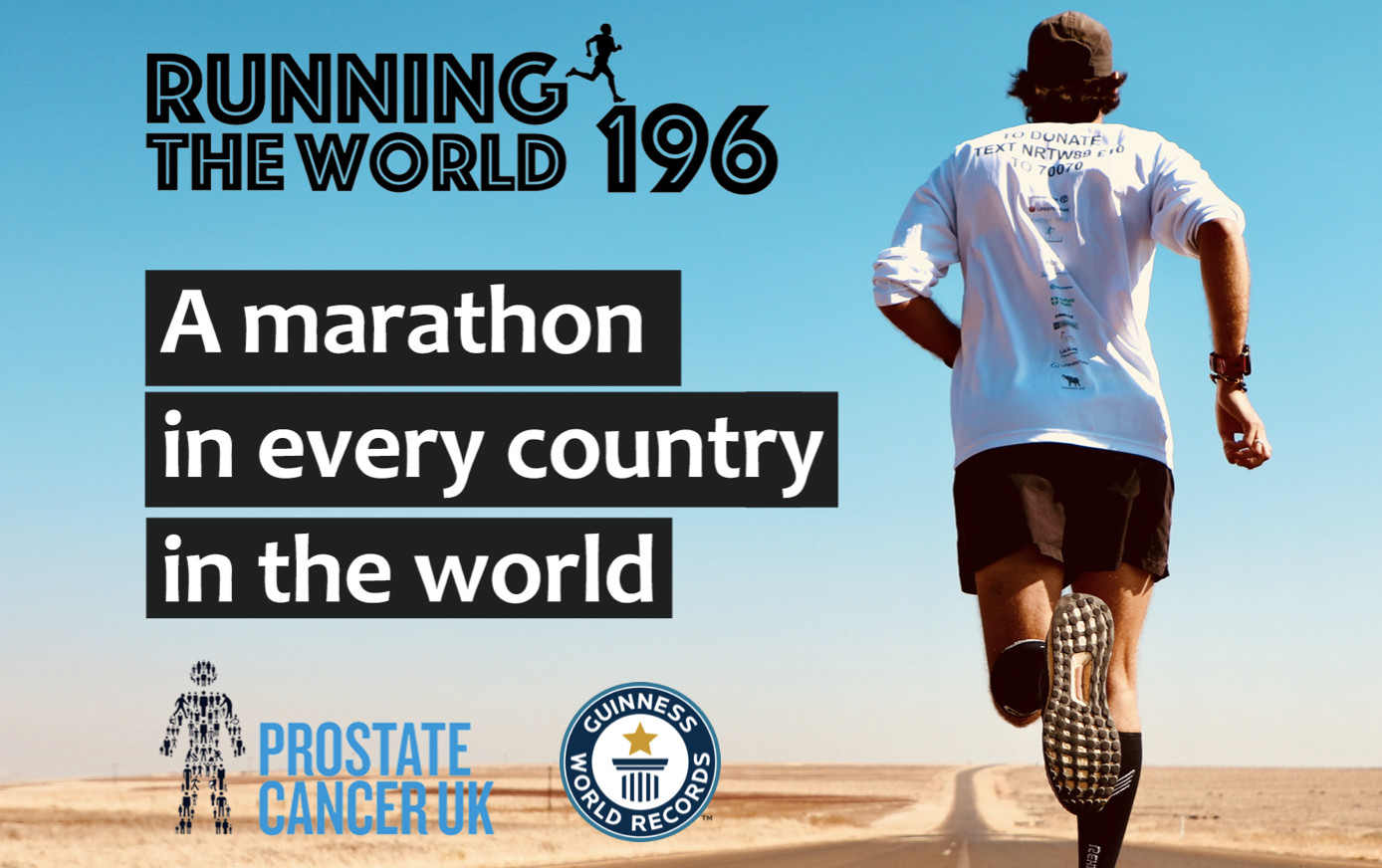
Butter often had a taxi driver, motorcyclist or cyclist with him, who would provide help with navigation, water and safety. On this occasion, a man from his hotel, Sani, had volunteered.
Unfortunately, it turned out that Sani hadn't ridden a bike for 20 years.
With eight miles left for Butter to run, Sani was in some pain and had to dismount. Rather than stop, or ask for help, Butter decided to run the rest of the marathon while pushing the bike and water himself.
"It was uphill, in 45C-plus heat, when I suddenly I had this pain," Butter says.
Without anyone around and no phone signal, he took a break by the side of the road and waited it out. Eventually, Sani caught up and took the bike back so that Butter, determined to finish, could hobble through the last section.
Afterwards he spoke to doctors and family friends who worked as medics. They all confirmed the symptoms of a heart attack. That didn't stop him flying to New Zealand to run another marathon just two days later. It's also worth mentioning he has a family history of heart problems.
"The medical answer is that I should have slowed down after that, but the actual answer is that I didn't," says Butter. He completed 211 consecutive marathons around the world - 193 in member countries of the United Nations, plus 18 more for "future-proofing".
It was in 2016 that a 26-year-old Butter had the idea. The goal was to raise money for Prostate Cancer UK.
"I wanted it to be big," Butter says. "It had to involve running and travel and it had to invoke something that Kev had said to me, which was 'don't wait for a diagnosis'."
A simple internet search for 'has anyone ever run a marathon in every country?' brought a negative answer.
"I couldn't believe it," he says. "We've put people on the moon! Of course, now I know why it's not been done before - it's very, very difficult."
After telling his family and friends, Butter started planning.
"I registered with Guinness World Records, spoke with some adventurer and runner friends and then I started to understand that I needed to contact media outlets, embassies, running clubs around the world. Hotels, people to do my safety, people to do my visas, working out a route, understanding the weather conditions, what my body would need to go through."
He says that beyond raising money, the goal was to spread awareness.
"I did something like 140 live TV appearances in different countries," Butter says. There were personal testimonies too.
"We had people come to us who previously hadn't any idea of prostate cancer, but, after speaking to us, got tested and discovered that they had it. Because they caught it early, they were fine."
Since finishing the trip, he has been doing speaking tours (lockdowns permitting), using his story to help educate. He's also published a book, Running The World.
Butter, writing in the closing chapter about his final leg of the 196-marathon trip, which began in Marathon, Greece, describes Webber turning up to run with him.
Five years on from Webber's terminal prostate cancer diagnosis, in which he was given an estimated two years to live, he and Butter crossed the finish line in Athens hand-in-hand.
The pair still talk regularly, and Butter says his friend is still running and still smiling.
(12/22/2020) ⚡AMPby Ciaran Varley
Sebastian Coe predicts bright future for athletics amid virus concerns
World Athletics (WA) has endured a turbulent year, but the global athletics governing body's president Seb Coe is confident the challenges have made his organisation, and the sport, "more resilient."
Having piloted the Monaco-based WA through the turbulence, Coe believes his international federation is on cruise control and that the prospects of 2021 are mouth-watering.
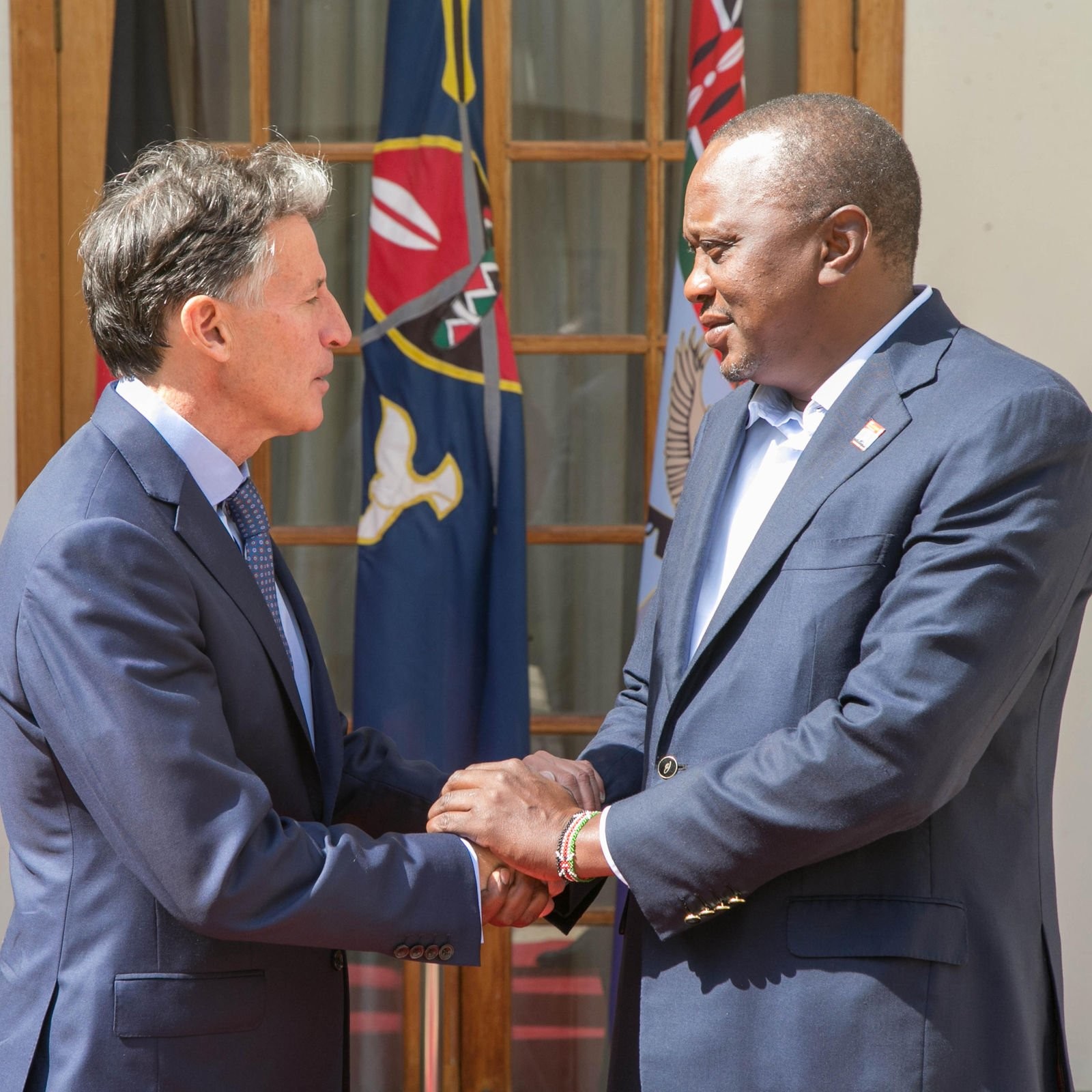
In an end-of-year interview with leading African sports desks, including Nation Sport, earlier this week, Coe reflected on a difficult, coronavirus-ravaged season that also saw WA wriggle out of negative vibe coming out of the organisation's former president Lamine Diack's trial for corruption in Paris.
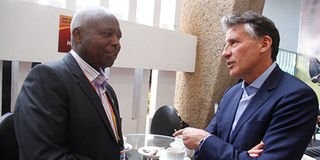
In September, Diack, 87, a former Mayor of Dakar, was found guilty by a Paris court of covering up doping cases by Russia and was handed a four-year jail sentence, two of these years suspended.
The man who had led the global track and field body for 16 years was also fined 500,000 Euros (about Sh6 million) by presiding judge Rose-Marie Hunault who ruled that Diack's actions "caused serious damage to the fight against doping."
Having been first elected at the organisation's sixth president in August, 2015, Coe set out to streamline operations in Monaco, cutting down on unnecessary expenditure and moving to shore up WA's finances.
Globalising athletics
His focus on globalising athletics saw Nairobi win the rights to host the 2017 World Under-18 Championships and also the 2020 (now 2021) World Under-20 Championships along with a leg of the World Athletics Continental Tour, what was then named the "Kip Keino Classic."
Commissions and working groups at World Athletics were whittled down from over 30 to just half a dozen and virtual conferences preferred to expensive trips to the principality for working meetings.
Diack was notorious for his extravagance that saw his friends, their spouses and girlfriends from Dakar on the global body's tab for junkets to the affluent Monte Carlo for the annual IAAF Gala, with half of the time spent on shopping sprees rather than track and field business.
Youssour N'dour and "Mama Africa" Miriam Makeba formed part of the high profile ensemble that entertained Diack's administration at the Gala, usually as the climax of a six-course, black jacket dinner ceremony, mostly at the Monte Carlo Bay Hotel whose current room price per night is up to Sh280,000, bed and breakfast!
Coe drastically cut down on this extravagance.
The Briton's administration whittled down the grandeur by organising a pocket-friendly, theatre-style gala with just cocktails and bitings in place of the sumptuous Diack dinners that notoriously sampled Monte Carlo Bay's culinary delights such as caramelized back of salmon with honey, or "Black Tiger" prawns, virgin sauce with basil, pushed down the throats of excited guests by three scoops of home made ice-creams and sorbets, with the best selection of bottomless wine from the French Riviera's wineries and vineyards to boot.
Besides the financial matters, getting athletes back into training after the coronavirus outbreak and juggling around the global athletics calendar were other priorities.
"Going back to March when, clearly, life became very much more complicated because of Covid, for all of us anywhere in the world, with sudden travel restrictions and bans and pressures on athletes, the first objective we set ourselves - which was an understandable one because we are an athlete-centred organisation - was to do everything we possibly could to get the athletes back in training and then into competition," Coe looked back.
Coe is happy that WA was not only focusing on solving problems, but also "identifying the right problems to solve."
"Look, we went through the school of hard knocks for four years from 2015 on-wards... I don't need to retrace my steps through there, that was a very global level of scrutiny for our sport."
"We came through it stronger and I think that bravery, that strength, that resilience allowed us through the pandemic year to continue to remain balanced and to continue to do all the things that we wanted to do in the sport, and to make brave decisions in our sport and that bravery has served us well in the past and I think it will serve us well next year."
(12/22/2020) ⚡AMPby Elias Makori
Kenya's David Rudisha says he is yet to decide whether he will try and win a third straight 800 meters Olympic title in Tokyo next year
Rudisha, who turned 32 on Thursday, has struggled with injuries since defending his title in Rio in 2016 and has missed the last two World Championships.
Ankle surgery meant that the world record holder would not have been able to compete if the Tokyo games had gone ahead this year, instead of being delayed until 2021 by the global Covid-19 pandemic.

"Because of this difficult time with Covid and I have been up and down with injuries, I have been off, I have not been training," he admitted to BBC Sport Africa.
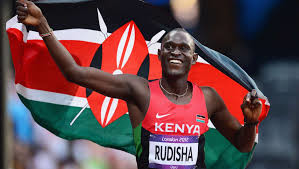
"I am hoping maybe next year I will make my decision whether I will come back and see the level of my physical fitness.
"That's when I will be able to assess my level and my standard and that will gauge if I will come back or I will make another decision but I love sports.
"Once an athlete, I will always be an athlete - so I will always be running at some level even if it is professional, or not professional or for fun but I love the sport and I enjoy running," he insisted.
David Rudisha: Olympic 800m champion on personal struggles, and Tokyo comeback
He insisted he will not be rushing to make a comeback from his latest injury.
"I had a bad injury in the beginning of the year and it is taking quite sometime and coming back you need to prepare yourself very well," he explained.
"I know that time is everything, if you do not have enough time I don't think it will be possible because running is not easy.
"It is a process and if I cannot have the period good enough for training I don't think I will be able to be there and to be at that level of professionalism, so I am just trying my best.
"Even if I come the year after next year all well and good and I will be happy because running is all about fun and would love to come back and it will depend on so many aspects."
(12/22/2020) ⚡AMPby Sport Africa
Tokyo 2020 Olympic Games
Fifty-six years after having organized the Olympic Games, the Japanese capital will be hosting a Summer edition for the second time, originally scheduled from July 24 to August 9, 2020, the games were postponed due to coronavirus outbreak, the postponed Tokyo Olympics will be held from July 23 to August 8 in 2021, according to the International Olympic Committee decision. ...
more...Tokyo Olympics' budget has been increased by 22%
The final budget for the Tokyo Olympic and Paralympic Games has been increased by 22% to 1.64 trillion yen (15.8 billion US dollars) because of the postponement of the Games.
The Tokyo 2020 organizing committee said at a news conference on Tuesday that the additional cost caused by the postponement is about 294 billion yen (about 2.83 billion US dollars), with the operational cost for the delay 198 billion yen (about 1.91 billion US dollars), and the COVID-19 countermeasures cost of 96 billion yen (about 920 million US dollars).
Of all the costs, Tokyo 2020 will cover 45%, the metropolitan government 43%, and the Japanese central government will account for 12%.

The cost for COVID-19 countermeasures will be paid by the two governments, with the central government covering 58% and the Tokyo government 42%.
The Tokyo Olympics, postponed by one year due to the outbreak of the COVID-19 pandemic, will be held from July 23 to August 8, 2021.
(12/22/2020) ⚡AMPby Xinhua News
Tokyo 2020 Olympic Games
Fifty-six years after having organized the Olympic Games, the Japanese capital will be hosting a Summer edition for the second time, originally scheduled from July 24 to August 9, 2020, the games were postponed due to coronavirus outbreak, the postponed Tokyo Olympics will be held from July 23 to August 8 in 2021, according to the International Olympic Committee decision. ...
more...Kenyan Hellen Obiri calls Wavelight technology same as doping
Two-time world 5,000m champion Hellen Obiri of Kenya recently spoke out about Wavelight technology and its use in track races, voicing her displeasure with the electronic pacing system. In an interview with BBC Sport Africa, the Olympic silver medallist said Wavelight technology gives athletes an unfair advantage, and she likened using it to doping.
“To me [Wavelight and doping] are the same,” she said. Obiri’s criticism of the innovative technology comes two months after Joshua Cheptegei and Letesenbet Gidey ran to 10,000m and 5,000m world records with the aid of the light pacing system on a track in Valencia.

In the past, athletes running record attempts were paced by other runners for a portion of the race, and this is still a common practice. Cheptegei and Gidey used pacers as well, but when those runners stepped off the track, the pace lights were still there, representing the pace they had to match. This is one of the reasons Obiri doesn’t like the technology.
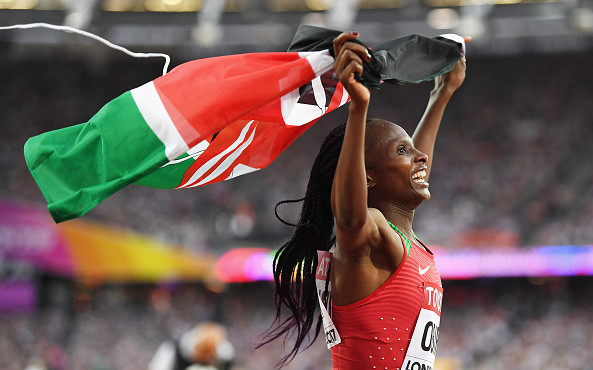
“You can just watch [and know], ‘I am inside the world record or outside [the] world record,'” Obiri told the BBC. “But when you are running alone, you can’t know whether you are inside or outside [the] world record.” Obiri notes that pacers can only take a runner so far before they themselves need to drop out of a race, but Wavelight technology “can take you … up to the finish.” Obiri isn’t the first to criticize this technology, but she could be the most prominent athlete to speak out about it so far.
Obiri also takes issue with the lack of opportunities in Wavelight racing, adding that, if this technology is here to stay, it should at least be available to all athletes. “I think it can be fair if all athletes are there, not one or two,” she said. “More like 12 athletes where anybody can break the world record.” When Cheptegei and Gidey ran in Valencia, they were the only runners on the track working toward the world records. “For me, it is better [to include multiple athletes] than to put one athlete in a race. If it’s available, let it be available to all.”
While she doesn’t agree with the use of Wavelight technology, Obiri said she understands that it is another part of development and innovation in track. “It is good to see the new things coming, but sometimes we need to work extra hard and not depend on other things. The way we used to do before.”
(12/22/2020) ⚡AMPby Ben Snider-McGrath
From nowhere to the fastest Indiana marathon runner ever
Never ran in a state track or cross-country meet. Never ran in NCAA Division I nationals.
Now, at age 30, Noah Droddy has become the fastest marathon runner ever out of Indiana.
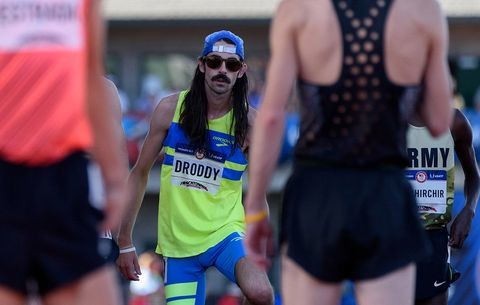
The Indianapolis native finished second Sunday in The Marathon Project at Chandler, Ariz., running six laps of a 4.3-mile loop. He covered the 26.2 miles in 2 hours, 9 minutes, 9 seconds.
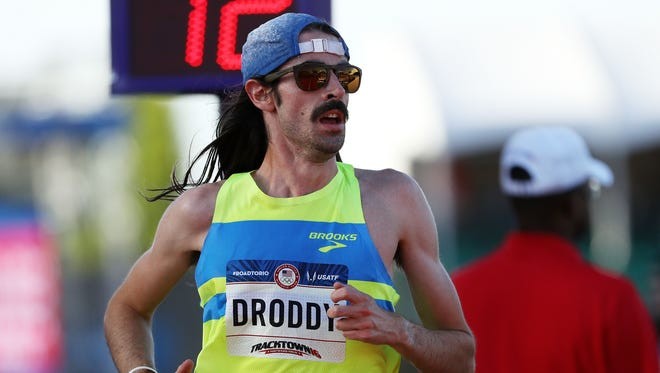
Martin Hehir, an anesthesiology student, finished first in 2:08:59. Hehir was sixth Feb. 29 in the U.S trials at Atlanta, with three qualifying for the 2021 Tokyo Olympics.
On certified courses without aiding wind, Hehir and Droddy rank Nos. 7 and 9 in U.S. history.
Droddy averaged 4:56 per mile off even pace, clocking 1:04:28 for the first half and 1:04:41 for the second. By 10-kilometer splits, he ran the first 40 kilometers in 30:44, 30:26, 30:34 and 30:34.
Previous record by a native Hoosier was 2:11:13 by Hammond’s Rudy Chapa, who was seventh at New York in 1983.
Droddy’s previous best was 2:11:42 in finishing 17th at Chicago in October 2019. He had to withdraw from the Olympic Trials because of injury.
“There were those moments where I came back, and I said, ‘Ok what is a kind of unique talent that I have?” he said in a pre-race podcast. “Like, what am I passionate about pursuing? And that thing, to me, has always been running. It’s the one thing I’m willing to work extremely hard at, give everything to, and that I’m very fulfilled by.”
(12/21/2020) ⚡AMPby David Woods
Grandma’s Marathon-Duluth, Inc. has been included on the “Top 20 Marathons of the Decade†list, as voted on by participants and published by popular running website BibRave
Already named by BibRave voters as one of the top five marathons in the country in 2018, Grandma’s Marathon this time cracks the all-decade list due to its “proven track record for excellent communication and organization.”
“It’s an honor to be included because these voters are largely people who have been to and participated in our race,” Executive Director Shane Bauer said, “but an award like this is more reflective on our community as a whole than it is just Grandma’s Marathon.
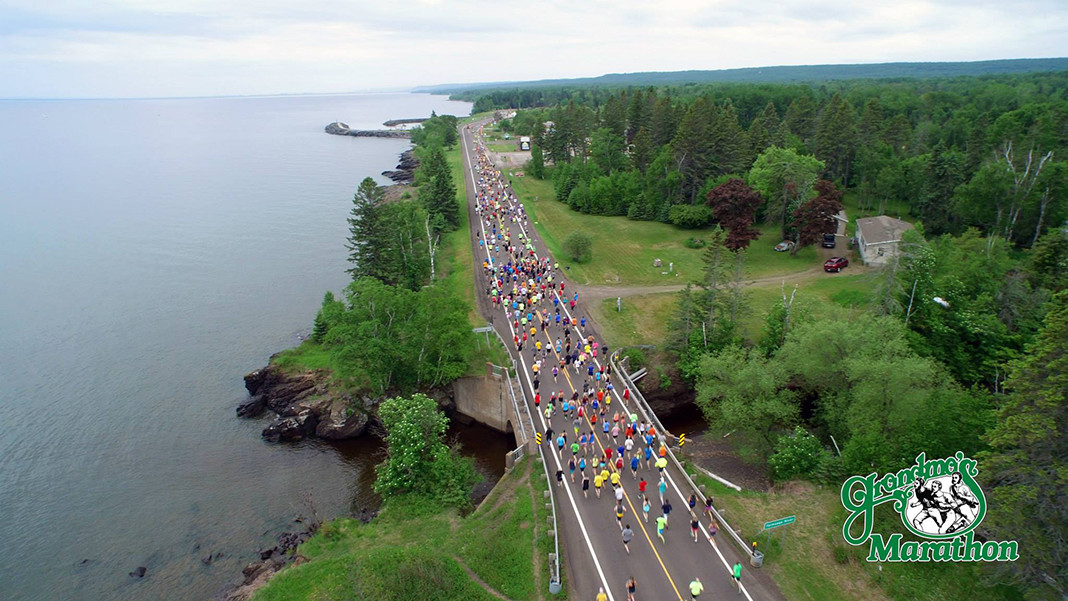
There are more than 800 marathons in the United States, and ranking near the top of all those is a testament to the overall experience our community provides to thousands of participants every June.”

BibRave is a website where participants can share their experiences and feedback following a race, and because of that it’s become a popular spot for people looking for reviews prior to signing up for a future event.
“It’s unique that people leave Duluth after race weekend so eager to spread the word about our city and our race,” Bauer continued. “That piece helps separate Grandma’s Marathon from the crowd and could never be accomplished without the amazing support and energy of our community.”
Grandma’s Marathon was also named by BibRave voters as one of the nation’s top 5 “Race-Cations,” which is described as a premier race combined with weekend experiences to make potential extra travel and logistics worth the time.
(12/21/2020) ⚡AMPGrandmas Marathon
Grandma's Marathon began in 1977 when a group of local runners planned a scenic road race from Two Harbors to Duluth, Minnesota. There were just 150 participants that year, but organizers knew they had discovered something special. The marathon received its name from the Duluth-based group of famous Grandma's restaurants, its first major sponsor. The level of sponsorship with the...
more...Charles Yosei and Sheila Chelangat are keen to run at both the World Cross Country Championships in Bathurst, Australia and Olympic Games in Tokyo next year
Charles Yosei, who is a former Africa cross country bronze medalist and Chelangat, a former Youth Commonwealth Games 3,000m champion said this after winning the second leg of Athletics Kenya Cross country meeting at the Koileel Samoe University
However, junior winners in Nandi, Agnes Jebet (women's 6km) and newcomer Felix Korir (men's 8km), said they have their eyes fixed on the World Under-20 Championships set for August next year at the Moi International Sports Center (MISC), Kasarani.

Yosei won the senior men's 10km title in 30:38.3 ahead of Phenus Kipleting (30:40.3) and Nicholas Kimeli (30:43.2), who completed the podium.
The race, which attracted over 300 athletes, saw Family Bank Half Marathon champion Daniel Simiu fail to impress despite winning the opening leg in Machakos a fortnight ago.

He placed fourth in 30:44.6 as Robert Kiprop (30:57.5) and Michael Bett (31:01.9) closed the top six positions in the race.
“I am in good shape and hopefully, I will make the team to the World Cross Country Championships in Bathurst, Australia on March 11 next year. I want to use cross country to prepare for the 2021 Olympic Games,” said Yose.
Kericho-based Chelang’at won the senior women’s 10km race in 34:25.6 while Joyce Jepleting (34:28.8) and Gladys Chepkirui (34:42.2) placed second and third respectively.
Former Africa junior 5,000m silver medallist Edina Jebitok (34:54.5), Mercy Jeptarus (34:55.7) and Eva Cherono (35:01.7) followed in that order for the top six places.
“The race was not easy. Beating 301 athletes was tough and I want to build on this as I focus on the Olympic Games,” he said.
(12/21/2020) ⚡AMPby Emmanuel Sabuni
Sarah Hall ran the second fastest time for the marathon at the Marathon Project
Sara Hall won The Marathon Project in Chandler, Arizona, on Sunday, December 20, running 2:20:32—making her the second-fastest American marathoner of all time. She took almost 90 seconds off her previous PR of 2:22:01, which she ran only 11 weeks ago at the London Marathon.
For about the first 18 miles of the race Hall, 37, flirted with the pace of Deena Kastor’s American record— 2:19:36—which has stood since 2006. But Hall, who ran behind two male pacesetters, couldn’t quite maintain the pace through the later miles.
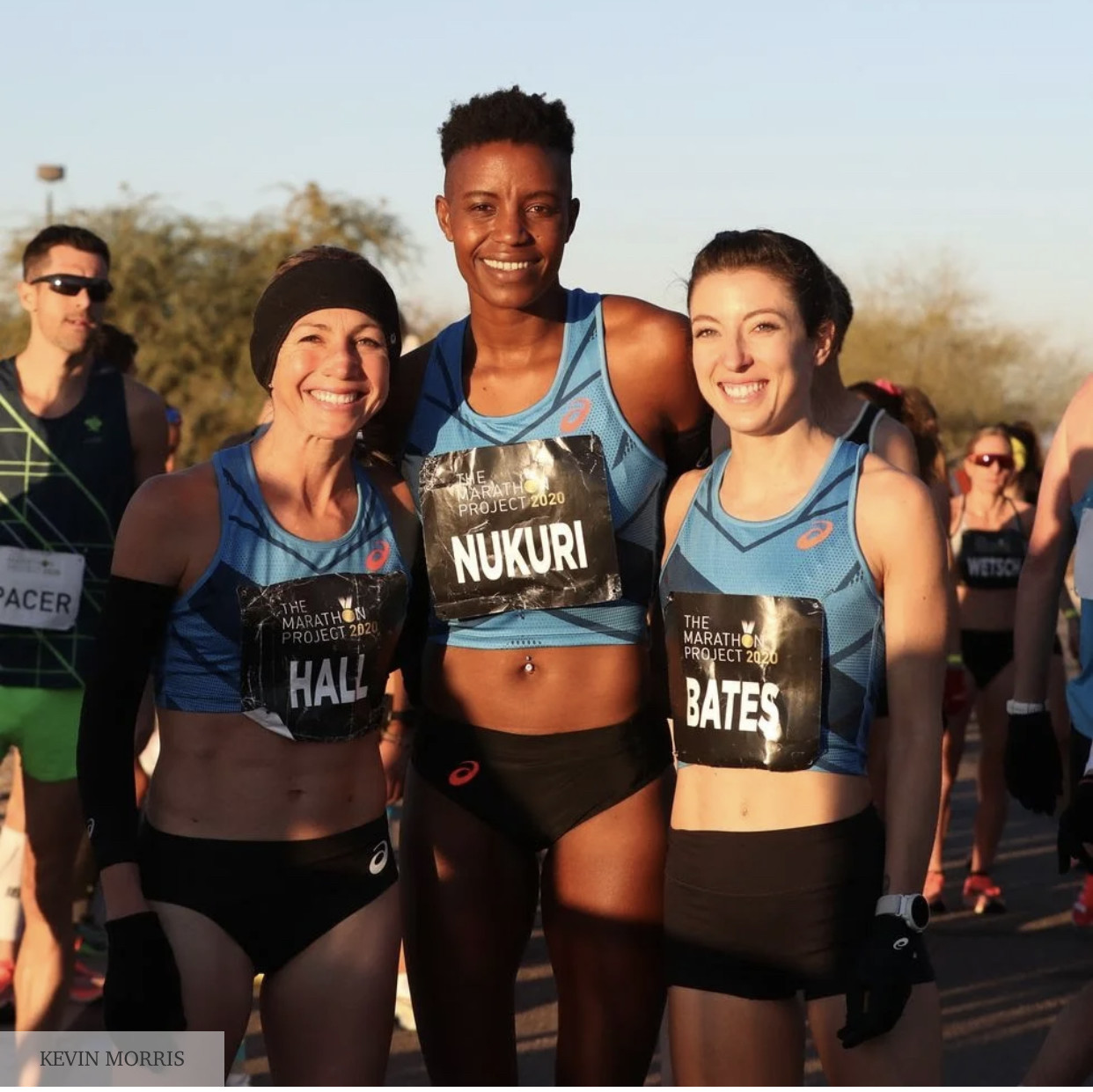
Keira D’Amato, the Virginia realtor who earlier this year ran an American record for the women’s-only 10 mile, finished second in 2:22:56, taking nearly 12 minutes off her previous marathon best.
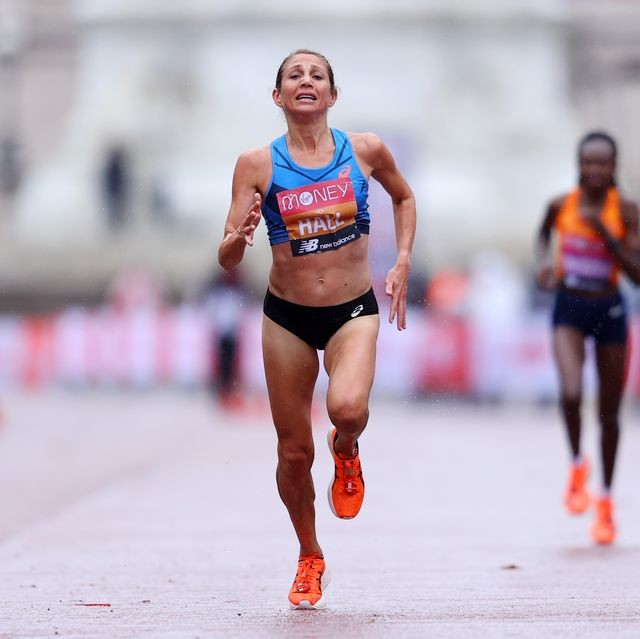
Kellyn Taylor, 34, who went with Hall for the first half of the race, fell back in the second half and finished in 2:25:22.
The 37-year-old Hall ran a personal best 2:22.01 at London on Oct. 4 and was hoping on a short turnaround to better Deena Kastor's 14-year American record of 2:19.36, set at London in 2006. She came close with another significant PR drop, improving from sixth best in U.S. history to second ahead of Jordan Hasay's 2:20.57 at Chicago in 2017.
"London was so wonderful getting to place as high as I possibly could have," Hall said. "This was more of a time trial, and that's kind of tough when it feels like training sometimes. I really look forward to when we can get back to normal races with crowds, but I feel so grateful for the guys I was able to run with. They kept me honest in the second half when I was really struggling."
She said being No. 2 on the American marathon list is "kind of surreal. I've had so much disappointment in my career (including not finishing at the U.S. Olympic Trials in February) and I would have walked from this sport 10 years ago. But my husband just relentlessly believed in me and God encouraged me there was more there. I kind of (rediscovered) my love for it. Getting rid of the fear of failure really helped me enjoy it a lot more."
Two-time Olympian Ryan Hall, third fastest all-time among American men's marathoners, now coaches his wife, whose next goal is to make the U.S. Olympic track team for Tokyo in the 10,000-meter.
Sara Hall 2:20:32
Keira D'Amato 2:22:56
Kellyn Taylor 2:25:22
Emma Bates 2:25:40
Natasha Wodak 2:26:19
(12/20/2020) ⚡AMPMarty Hehir wins The Marathon Project Running a sub 2:09
Marty Hehir is the MARATHON PROJECT winner 2:08:59. Noah Droddy in second. Both lifetime PBs!
Hehir, 28, is in his fourth year of medical school in Philadelphia and applying to residency programs in anesthesiology.
He pushed the pace between miles 22 and 23, opening up a lead of several meters over Noah Droddy. Hehir grimaced through the final stretch, but dipped under the 2:09 mark, for a two-and-a-half-minute personal best. His time puts him seventh on the list of U.S. all-time marathoners.
Droddy finished second in 2:09:09, also an enormous personal record. Colin Bennie—who, like Hehir, is part of the Reebok Boston Track Club in Charlottesville, Virginia—was third in 2:09:38.
Mens Results
Martin Hehir 2:08:59
Noah Droddy 2:09:09
Colin Bennie 2:09:38
Scott Fauble 2:09:42
Ian Butler 2:09:45
(12/20/2020) ⚡AMPYour race is in an hour, and you know you’ve gotta go. Here’s how to guarantee a timely Number 2.
On a perfect race morning (before the pandemic) or prior to a hard workout, you’d wake up, have breakfast, and use the bathroom—at least once, maybe twice—and then start your event or training run, not worrying whether you’ll have to stop along the way for an emergency Number 2.
But sometimes, your routine fails you. Maybe you’re traveling and in a different time zone, maybe your diet’s been a little off, or maybe you’ve just got a nervous stomach. Some mornings, you just can’t go, no matter how much you know it’s essential for a good run. Or, you know you have to start soon, but you’re stuck wondering how to make yourself poop.


So what do you do now? We looked at the research and talked with Felice Schnoll-Sussman, M.D., a gastroenterologist at the Weill Medical College of Cornell University and a New York City Marathon finisher, to find out. Here’s what science says about how to get yourself to go.
1. Sip and Sit
Many of us swear by our morning cup of joe to get our bowels moving—and although scientists aren’t sure exactly why coffee works this way, at least one study has found that it does seem to induce “a desire to defecate.” (It’s unlikely that caffeine is responsible, because even decaf coffee had this effect.)
But Schnoll-Sussman says that any warm beverage can help stimulate a bowel movement, including a cup of tea or even hot water. “The warm liquid acts as a vasodilator,” she says. “It widens blood vessels in the digestive system and helps increase blood flow and GI activity.”
Schnoll-Sussman advises runners to drink a hot beverage in the morning and then sit on the toilet for a while. “Just the act of sitting there for few minutes can bring on the urge to go, even if you don’t feel like you have to right away.”
2. Get Moving
Physical activity can bring on a bathroom break, which is one reason a warmup can be so important before a race. “Before you head out the door for a hard workout, I would suggest exercising lightly to help stimulate a bowel movement,” Schnoll-Sussman says.
If you’re trying to unload in the comfort of your own home or hotel room, try jogging up and down the stairs or doing some jumping jacks or dynamic stretches. Already at the race start? Warm up with some strides while you’re still near the porta-potties.
3. Wake Up Earlier
“Make sure you’re getting up early enough on race morning to go through your whole morning routine, including time for the bathroom,” Schnoll-Sussman says. People racing in a different time zone, she adds, should try to stay as close to their body’s natural schedule as they can.
If you’re from New York and you’re racing in Portland, that might mean getting up and having your breakfast on East-Coast time—even if it’s a few hours before your race. On the other hand, if you’re a Californian racing Boston, you’ll already be waking up several hours earlier than you’re used to. “That’s a little bit trickier,” Schnoll-Sussman says, “but in this case it’s also important to wake up with plenty of time to spare, so that your body has extra time to digest your breakfast and feel the urge to go.”
4. Try a Massage
A UCLA study suggests that putting gentle pressure on the perineum—the area between your genitals and anus—may help break up and soften stools for people who have been suffering from constipation.
While it’s not yet a common treatment prescribed by doctors (and it wouldn’t be her first line of advice for runners who don’t typically have pooping problems), Schnoll-Sussman says that it may be helpful for people with specific types of blockages or medical conditions. “It might be worth a try if you’re in a bind,” she says—and while it will probably be a bit awkward, it certainly can’t hurt.
5. Or Glycerin Suppositories
Some runners confess to using glycerin suppositories on particularly desperate race mornings. But Schnoll-Sussman would not recommend this, especially if you have never tried one before.
“The time it takes for a suppository to take effect is very variable from person to person,” she says. “It could work in 15 or 20 minutes, or it could take several hours—so if you do it race morning, you risk having to start the race before it works.” If a runner did want to use one, Schnoll-Sussman would suggest using it the night before a race, or at least not trying it for the very first time on race morning.
6. Focus on Food
If you’re worried about taking a quick-fix supplement, or other methods just aren’t doing the trick, turn to foods like raspberries which have 8 grams of fiber per cup. Grab a handful of almonds on the go. The powerhouse nuts contain magnesium—which researchers found may help relieve constipation. Or, reach for the age-old cure of prunes. Packed with fiber, they’ve been proven to help you go. One study found that eating about 10 prunes every day for three weeks improved stool frequency, so adding them to your diet well before race day might help avert a crisis.
What to Know for Next Time
Getting enough fiber is important in the days and weeks before a race for keeping digestion regular and preventing constipation. But on race day, consuming more fiber than usual can cause diarrhea, so don’t eat (or drink) large amounts the morning of, especially if you’re not used to it.
Staying hydrated is also key—especially if you’re flying on a plane or otherwise traveling. “Constipation occurs when the stool is too dry to move through the body easily, so drinking plenty of water can always help move things along,” Schnoll-Sussman says. Filling up on H2O the days before your race, and drinking that warm beverage first thing in the morning, is the best way to make sure you’re able to go when you need to.
(12/20/2020) ⚡AMP
by Runner’s World
Foreign runners take gold at Taipei Marathon
Paul K. Lonyangata won NT$1.8 million ($63,880US) for his first-place finish and record-breaking achievement
Kenyan runner Paul K. Lonyangata won the 2020 Taipei Marathon men's division on Sunday (Dec. 20) with a time of 2 hours, 9 minutes and 18 seconds; while the female champion, Ethiopian Askale M. Wegi, came in at 2 hours, 28 minutes and 31 seconds, according to a China Times report.
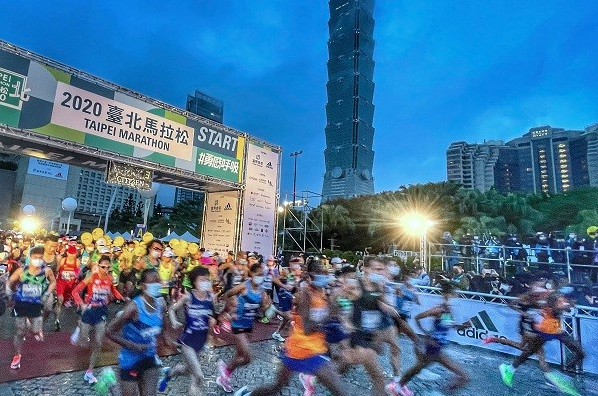
Lonyangata was awarded prize money of NT$1.8 million (US$62,000) for his first-place finish and record-breaking achievement.
The Kenyan champion said this was not the first time to win a road race, but it was the highest prize money he had ever received from a single race. He added that his prize money would help many people in his hometown who have contracted COVID-19, as well as fund schools.
Taipei City Mayor Ko Wen-je (柯文哲) said during an address before the start of the race that about 37,000 runners had registered for the event, but only 28,000 runners were selected by drawing lots, in order to maintain the quality of the event, CNA reported. In the future, 28,000 will become the limit for the number of people participating in the running event, the mayor said.
In order to obtain an IAAF Platinum Label for the event, which has been held every year since 1986, the city government invited 12 elite international athletes to participate in the event, the mayor said. He added that during the quarantine period, they were provided with running machines in their rooms so they could keep training.
The mayor went on to say the Taipei Marathon is likely the only large-scale city marathon to take place this year without a hitch, due to the pandemic, per CNA.
(12/20/2020) ⚡AMPNew Taipei City WJS Marathon
The best thing about Wan Jin Shi Marathon Race, is the chance to take in the enchanting view along the North Shore. The breathtaking view of the mountains and the seaside is the centerpiece of the race. The Queen's Head Rock is set against the backdrop of the North Shore, complemented by the area's many scenic landmarks. This is the...
more...Why distance doesn’t matter when it comes to FKTs
Regardless of its length, your favourite running route could deserve its own official FKT
With countless event cancellations this year, fastest known times (FKTs) have blown up and replaced races for so many runners around the world. As the founders of fastestknowntime.com (the official website of FKTs) told FiveThiryEight in the summer, they have seen a massive increase in FKT submissions in 2020 compared to 2019, and that hasn’t slowed down in recent months. It’s easy to look at some of these routes, many of which take days to complete, and think, “I could never do that.” The thing is, FKTs aren’t just for ultrarunners or elite athletes. Anyone can submit a run to be considered by the crew at fastestknowntime.com, and the routes can be as short or as long as you want. So really, there’s nothing stopping you from owning an FKT.
The short
A quick scan of the FKT website will show you that these routes are not all ultra-distance runs. Yes, there are some ridiculously long runs, but there are also routes that you don’t have to dedicate days (or, in some cases, weeks) to in order to complete them. You can even run a few kilometres and, if the route is noteworthy enough, you can get it certified as an official FKT.
For example, look at the Mt. Sanitas route in Boulder, Colo. This is a 1.4-mile (2.25K) run, although it gains almost 400m in that short period of time. This is by no means an easy route to run, and you’ll be gassed by the end of the intense climb, but it’s just a little over 2K. You probably won’t beat the current FKT (it belongs to Kilian Jornet, who completed the run in just over 14 minutes), but if you’re in Boulder and feel like punishing yourself, give it a shot.
The long
On the other end of the spectrum, there are the long FKTs. And when we say long, we mean long. A great example of this is the Appalachian Trail. This 3,500K trail stretches from Maine all the way down to Georgia, and the current route records belong to Belgian Karel Sabbe, who ran farther than anyone else at the 2019 Barkley Marathons (although he still finished with a DNF), and American Liz Anjos. Sabbe set his FKT in 2018, completing the route in just over 41 days, and Anjos ran hers earlier this year, finishing in 51 days.
Try your own
As you can see, you can go super short or extremely long for FKTs. The key to getting your route certified, as listed on the FKT website, is to make sure it is “distinct enough so that others will be interested in repeating it.” It is also noted that, while routes can be any length, “anything less than five miles long or with less than 500 feet of climbing would have to be special.” If you think you’ve got a route that could attract other runners, send it in to the team at fastestknowntime.com. If they like it, run it yourself as the first official record attempt on the route. Once you’re finished, you’ll own an FKT. It might not stay under your name forever (especially if someone like Jornet decides to run it), but you’ll always be the original record holder.
(12/20/2020) ⚡AMPby Running Magazine
Five ways to use running to survive the festive season
Season’s Greetings! The holiday season is fast approaching… whether you will be celebrating Christmas, the arrival of a new year, or the end of 2020, the opportunity to rest and down tools will be welcome for all of us.
Throughout this pandemic, I have always tried to look for the positives. But let’s be honest – it has been a year like no other, and not in a good way! Thankfully, there is a lot to look forward to in the coming year – vaccines, seeing our friends and families more, travel… and the Olympics!
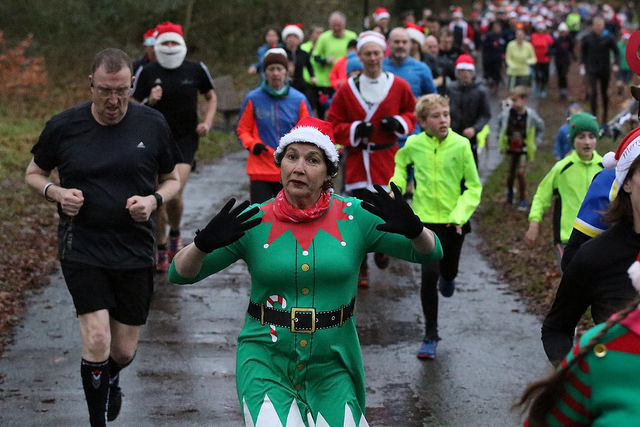
The festive season is truly special in many ways, but it can also be a little stressful. Christmas in the UK is famous for family arguments, excessive drinking, and cold, wintry weather. By the time early January arrives, the return to a normal routine often feels very welcome.
So how best to survive the festive season with a positive mindset? The answer, for me, is definitely… running!
Training out in the fresh air provides the perfect antidote to Christmas excesses of all kinds, and brings a welcome boost to your physical and mental health. But how do you fit it in, on top of all the holiday traditions and celebrations? Decathlon legend Daley Thompson famously trained even on Christmas day – what further inspiration do we need? If you’re not entirely convinced by running during the festive season, here are my five top tips on how to use running to keep your spirits up during the holidays.
Run early!
Even without work to do, somehow the days can fly by during the holiday season, with meals to prepare, gifts to wrap, and relatives to help. Therefore, I always try to run early in the morning, making it the first activity I do for the day. Enjoying some quiet time to yourself by running in early morning light, before the day gets going, sets you up nicely for the day ahead.
Consume in moderation.
Eating and drinking feature heavily in holiday season activities. Enjoying special festive foods at this time of year is great – unless you’re trying to keep your weight down for your next marathon! Being surrounded by delicious food can be, well, torment! I adopted the rule of moderation – to enjoy special treats but in modest amounts, so that I could enjoy seasonal delicacies but without any waistline damage!
Let’s race!
The end or start of a year is the perfect time to set down a milestone of your progress by doing a race. Because of the pandemic, races are hard to come by this year, so why not run a time trial instead? A distance like 5km is ideal since it does not take too much out of you, and you can repeat it reasonably often. If you haven’t yet tried parkrun, why not give it a try, even if it’s a (not) parkrun where suspensions are still in place. World Athletics and parkrun announced a new partnership this year.
Wrap up warm.
In the northern hemisphere, winter is well and truly here. But despite the cold, running in winter can be delightful – frosty crisp mornings, misty sunrises, and silhouetted leafless trees make a run in your local park feel like you’ve been transported to a magical, imaginary wonderland. There’s no escaping those first few minutes which are very chilly, but once you get going and warmed up, winter running feels invigorating!
Plan ahead.
At this time of year, it’s easy to focus entirely on the festivities… and forget that time keeps marching relentlessly on. January will arrive in no time, so why not use the holiday season to plan some running goals, for example a training plan for the next few weeks, a race to look forward to, or a revamp of your nutrition using some process goals. Then you can avoid any sadness when the festivities are over, and press on with your new goals.
(12/20/2020) ⚡AMPby World Athletics
Many Protests as Russia doping ban cut to two years
Russia's ban from international sport was halved to two years on Thursday and its athletes were cleared to compete as neutrals, drawing condemnation from athletes and anti-doping advocates.
The Swiss-based Court of Arbitration for Sport cut the initial four-year ban imposed by the World Anti-Doping Agency, citing "matters of proportionality" and the "need to effect cultural change and encourage the next generation of Russian athletes".

"The consequences which the Panel has decided to impose are not as extensive as those sought by WADA," a CAS statement said.
"This should not, however, be read as any validation of the conduct of RUSADA (Russia's anti-doping watchdog) or the Russian authorities."

The CAS judgement comes after WADA hit Russia with the four-year ban last year for doping non-compliance after finding data handed over from its tainted Moscow laboratory had been manipulated.
The saga first erupted in 2016 when Grigory Rodchenkov, the laboratory's former head, blew the whistle over state-backed doping at the 2014 Winter Olympics in the Russian resort of Sochi.
The shortened ban imposed by CAS runs until December 16, 2022, encompassing the Tokyo Olympics, Beijing Winter Games and the 2022 World Cup in Qatar, which ends two days later.
Russia's flag is forbidden, but its athletes will be allowed to compete in a uniform bearing the word "Russia", as long as it also says "neutral athlete", the court said.
Government representatives including President Vladimir Putin are barred, but they may still attend if invited by the host country's head of state, CAS added.
WADA president Witold Banka said he was "disappointed" that the four-year ban was cut, but still called the ruling "an important moment for clean sport".
"WADA is pleased to have won this landmark case," Banka said, adding that the verdict "clearly upheld our findings that the Russian authorities brazenly and illegally manipulated the Moscow laboratory data in an effort to cover up an institutionalised doping scheme".
'Devastating decision'
But there was strong condemnation elsewhere. US Anti-Doping Agency chief executive officer Travis Tygart, who played a key role in exposing cycling's Lance Armstrong doping scandal, called it a "devastating decision".
"At this stage in this sordid Russian state-sponsored doping affair, now spanning close to a decade, there is no consolation in this weak, watered-down outcome," Tygart said.
He called it "a catastrophic blow to clean athletes, the integrity of sport, and the rule of law" and, in an interview with AFP, said the ruling was a "tragedy" for the global fight against drug cheats.
British Olympic gold medal-winning cyclist Callum Skinner tweeted, "The biggest doping scandal in history goes unpunished," and Global Athlete, which advocates for sportspeople, called the ruling "farcical".
"The fact that Russian Athletes can compete as 'Neutral Athletes from Russia' is another farcical facade that makes a mockery of the system."
(12/19/2020) ⚡AMPby AFP
Canadian 20,000m record holder Justin Kent is set to make his debut in the marathon on Sunday at The Marathon Project
Justin Kent is set to make his debut in the marathon on Sunday at The Marathon Project in Chandler, Ariz. Kent, who also works as a coach with Mile2Marathon, is no stranger to road racing, having won the virtual Canadian 10K Championships in July (he ran 28:52) and having run an unofficial half-marathon PB of 1:02:34 in October. The marathon is a completely different beast, though, and Kent says he knows there’s a steep learning curve when it comes to running 42.2K well.
Below is his favorite type of workout from his marathon build, and while he admits it “isn’t the most glamorous” of sessions, he says it is an important one that all prospective marathoners should include in their training schedules.

Kent says he respects the distance and his fellow athletes too much to try to forecast what time he will run on Sunday. “Obviously I want to run really fast, but if I made some crazy prediction saying I would go and run a certain time, I think it’d be a disservice to people who have run those times in the past.” He has put in the work, though, giving himself the best chance to run a great time. One of his favourite workouts in this build to The Marathon Project has been the progression run.
“I’ve grown to love the long, sustained efforts,” Kent says. “A few years back when I was training for the 1,500m, I always enjoyed the long run, and over the years, it’s become even more enjoyable.” He recently completed a 38K progression run that featured “a pretty solid chunk at marathon pace.” These runs are so important and effective, he says, because they help “your body get used to the effort that you need to maintain that marathon goal pace.”

Kent says he believes that the experience he has gained from these long efforts will help him at The Marathon Project. He adds that he has already seen the benefits of his progression runs in a race setting when he ran the national 20,000m record of 1:01:01 in November. “These kinds of workouts aren’t as exciting to talk about as big runs on the track,” he says, “but the sessions that aren’t as glamorous are the best bang for your buck.”
If you’re planning on running a marathon, adding some progression runs to your schedule could really help you out. Kent says to warm up as you would for a track session with drills to get your body ready for the effort. Then, start your run with 5K to 8K of easy running. “Just go through the motions,” Kent says. “It’s just normal running for a while, and then you start picking it up. The key is to not hammer it right off the bat.”
After your warmup, your run can vary in distance. No matter how far you’re planning to run, you should reach marathon pace at some point. For example, if you warm up with an easy 8K, you can spend the next 8K slowly building. After that, close with 8K at marathon pace. By the time you reach the marathon pace section, you will probably already be at least a little tired, which is why this type of workout can be so effective.
There’s no chance that you won’t feel tired in your marathon, and getting used to running while tired will only help you on race day.
Try it out yourself, and play with the distances. Progression runs can also be used in training for other distances. The key is to reach race pace and maintain it for a solid period of time.
(12/19/2020) ⚡AMPby Ben Snider-McGrath
5 reasons why The Marathon Project will be the race of the year
With just over 100 of the top athletes in North America (and several athletes representing other nations) prepared to race on Sunday on a flat and fast course in Chandler, Ariz., The Marathon Project has the potential to be the best race of 2020. Records could be broken, Canadians could hit Olympic standard and drama could unfold, all of which makes the event mandatory viewing for all fans of the sport. There are many reasons why The Marathon Project could be a top event, but here are just a few if you needed any more convincing.
It’s one of the only races of the year

The Marathon Project could be one of the best races of the year because, well, it’s one of the only races of the year. So far this year, the biggest races we’ve seen have been the U.S. Marathon Trials in February, the Tokyo Marathon in March, the London Marathon in October and the Valencia Marathon in December. Based on its stacked lineup, The Marathon Project will likely join this list as one of the top events of 2020, and if the contenders are firing on all cylinders on Sunday, it could beat out those other events as the top race of this strange year.
Canadians are racing
Six Canadians are set to race in Arizona on Sunday, and we can’t wait to see any of them run. On the men’s side, Cam Levins will look to better his Canadian marathon record of 2:09:25, and he’ll be joined by Rory Linkletter, who has a marathon PB of 2:16:42, and Ben Preisner and Justin Kent, who will be running their debut marathons. (Preisner ran a solo marathon earlier this year, but this will be his first official race over 42.2K.) While Levins is the only one to have ever run under the Olympic qualifying standard of 2:11:30 (although he has yet to do it in the current qualifying window for Tokyo 2021), they’re all certainly capable of hitting this time, and it will be exciting to see how they fare on Sunday.
Natasha Wodak and Kinsey Middleton will represent Canada in the women’s race, and like the runners on the men’s team, they’re both threats to beat the Olympic standard, which is 2:29:30 for women. Wodak has run one marathon before, but that was all the way back in 2013. She ran a 2:35:16 back then, and now, seven years later, she’ll be looking to take a significant chunk off that result. Middleton won the Canadian Marathon Championships in 2018, when she ran her PB of 2:32:09. Two years removed from that result, she’s likely hungry to run even quicker in Arizona.
Records could fall
Sara Hall is the top-seeded runner in the women’s field, and she’s coming off a spectacular PB at the London Marathon, where she ran 2:22:01. If she has a good run, she could be in the hunt for the American record of 2:19:36, which belongs to Deena Kastor. On the men’s side, Levins could challenge his own Canadian record, which he set at the 2018 STWM.
It’s a chance to race
Not being able to race in 2020 has been hard on all runners, but for these elites, this is how they pay their bills. Racing brings prize money and sponsorships, and with so few chances to race this year, it has been extremely tough on these athletes. The Marathon Project is giving runners the opportunity to earn some cash, which is a great gift in time for the winter holidays.
Olympic spots are up for grabs
The Olympic qualifying window was closed for runners throughout the summer, and even if it had been open, there were next to no chances for athletes to run standard at official races. The American Olympic marathon team was decided at the trials in February, but for athletes from other countries, this presents an opportunity to potentially book their tickets to Tokyo next summer. With so much at stake, there will definitely be some thrilling racing on Sunday.
(12/19/2020) ⚡AMPby Running Magazine
Olivier Leblond Broke the American Age-Group Record in the 100-Mile Track Event
He ran 403 laps around the track in fewer than 13 hours!
Despite the COVID-19 pandemic canceling all kinds of races this year, ultrarunner Olivier Leblond was hoping for an opportunity to put his training to good use before the end of 2020. After running one 100-mile race on two-weeks notice in July, he decided to target an age-group record in the 100-mile track event at the site of his 2013 win in the 24-hour race: Desert Solstice.
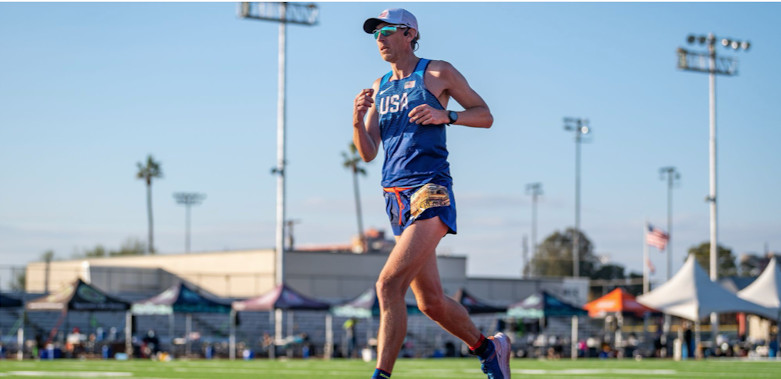
And close out the year, he did. In Phoenix, Arizona, Leblond set a new American men’s 45-49 age-group record in the 100-mile track event on December 12.
Leblond ran 403 laps around the track in 12 hours, 41 minutes, and 57 seconds, making him the fourth fastest ever in his age group globally. The 48-year-old French-American beat the previous record—13:56:59, set by Rich Riopel in May 2019—by more than an hour.
“I was going crazy this year because training takes a lot of time, and when you stop feeling good because races are canceled, you think, Oh no, this was my last chance,” Leblond told Runner’s World. “It’s been a crappy year for everybody, but I wanted to at least try to get one good result.”
Leblond had a solid five-week training block in which he had put in 110-, 115-, and 120-mile weeks, sandwiched between two easier weeks. Before he knew it, he and his crew chief/girlfriend, Sarah Smith, were on their way to Phoenix.
The race featured a stellar cast of runners, like eventual men’s and women’s 24-hour race winners Nick Coury, who finished with 155.41 miles, and Marisa Lizak, the now two-time champ who finished fourth overall with 142.64 miles.
While all of the runners raced around the oval, Leblond focused on his own 7:40 pace, which had him going about 1:54 per lap. Even with bathroom breaks, this would comfortably get him past Riopel’s record .
However, Leblond had another goal he wanted to hit: breaking 13 hours.
“All of the 100 milers I’ve done were on trails or had big climbs or were hot or something,” he said. “You don’t go run hours around a track just to have fun. Your focus is a PR, and that’s what I was looking to do.”
(12/19/2020) ⚡AMPby Runner’s World
When This Runner Lost His Job, He Took the Opportunity to Achieve a Lifelong Dream
Shan Riggs ran more than 3,100 miles and raised more than $45,000
The beginning of Shan Riggs’s story is an all-too familiar tale from 2020. When the pandemic hit, he lost his job as a sponsorship consultant for races and events, leaving him without work for the year as races were postponed or canceled by COVID-19.
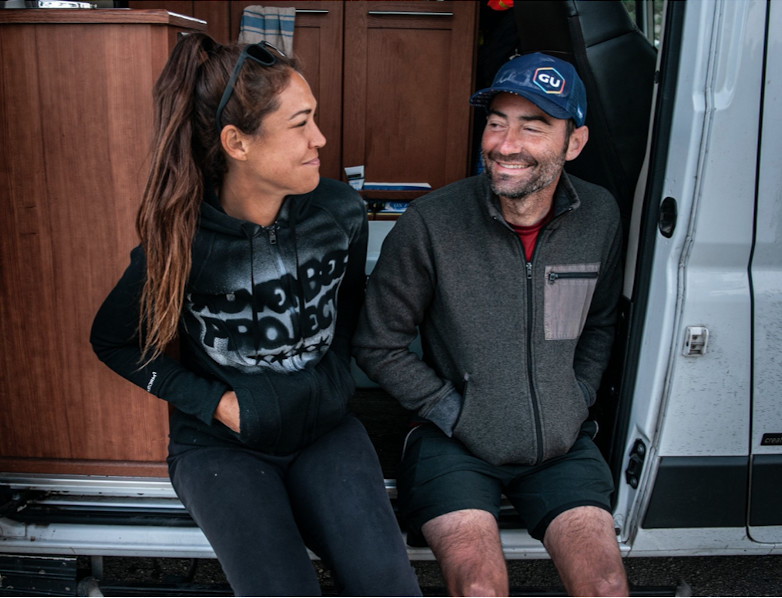
For months, Riggs was left with almost too much free time as he waited to see what would happen with the pandemic. He hoped he could return to his main client, the Hartford Marathon Foundation, near where he was living in Connecticut. However, by August, he realized he’d be without work for the remainder of the year.
While it was tough to accept in the moment, Riggs then realized that this might be the ideal time to achieve his dream of running across the country. Plus, he could use the 3,200-mile journey to raise money for Foodshare, a member of Feeding America that serves Connecticut’s Hartford and Tolland counties.
“I had done runs from Chicago to Indianapolis before, but never any multi-day runs that went on for months,” Riggs told Runner’s World. “Now that I suddenly didn’t have work, I realized that I could do something more, and I’d worked with Foodshare through the Hartford Marathon. When I’d see a football field with rows and rows of cars of tons of people who never needed help before, I knew I wanted to get as much visibility to them as possible.”
Riggs pulled together his plans in about three weeks. He parted ways with most of his belongings, trying to limit the overhead cost of rent and attempting to live solely out of the camper van he owned with his partner, Callie Vinson, who had been living in Chicago.
Once that was done, Riggs made his way across the country, picking up Vinson in Chicago on their way to San Francisco. On September 1, he started his long journey across the country.
Riggs wasn’t attempting a record-breaking run, so he was able to settle into a comfortable pace each day to complete his daily mileage in his Altras.
“I talked to a few people beforehand like Pete Kostelnick and Jason Romrero [who had previously run across the country] and they warned me about going out too fast,” Riggs said. “You can’t win day one, but you can lose on day one, so we started a little over 30 miles on day one and kept that up throughout, doing between 30 to 40 a day.”
With the pandemic going on, Vinson and Riggs took precautions as they made their way through America’s various terrains and climates, small towns and cities, and downhills and painfully long uphills (one day he had to climb 6,000 feet!). They camped on the side of the road and at campgrounds.
Riggs’s daily eating routine consisted of a morning GU stroopwafel before starting the day’s run, a bigger breakfast 10 miles later, a simple sandwich at lunch, and third stop for a snack. Dinner included things like steak with veggies on the side or a Thai rice bowl, which they cooked themselves. 
​
“I expected more disasters to come up, but the worst that happened was I got food poisoning in Indiana, which derailed us for a day before I was back doing 30 miles a day later,” Riggs said. “We did have close calls with dogs, and I almost stepped on a rattlesnake, but really nothing major happened.”
Some stops were familiar for Riggs, like Chicago, where he once lived, and Indiana, where he grew up. He also stopped in towns he might have never visited.
Then, after months on the road and on his feet, he neared the finish line where Connecticut touched the Atlantic Ocean. After some big mileage days, he had the help of friends and strangers who came out to support him and run with him over those final miles.
Finally, the last day arrived on December 1. It would be his biggest mileage day, requiring a tough 47 miles to reach the balloon arches his coworker from the Hartford Marathon Foundation had set up for him.
Knowing he wouldn’t have to run the next day for the first time in three months, he gave it everything he had. He had to move quickly because the beach where he’d finish closed early because of the pandemic, so he averaged a 10:04 mile after more than 3,100 miles.
“Shan went through the arches, looked at me, grabbed my hand, and we went right into the water,” Vinson told Runner’s World. “It was so cold. Luckily, I had towels and blankets in the van waiting. We washed up quickly and had cake that was made for us and then we took off for the hotel before making the long drive to Chicago the next day.”
Not only did Riggs complete 3,154 miles, but he raised more than $45,000 for Foodshare, which doesn’t include all of the matching made by companies who supported the cause. (You can still donate to Riggs’s fundraiser here).
A few weeks after, Riggs is recovering well in Chicago alongside Vinson while he looks for work. Riggs is taking some time off of running; however, he did have to pay Vinson back by crewing her on December 11 for her attempt to run the 200-mile route around the boundaries of Chicago.
Riggs said it was the least he could do.
(12/19/2020) ⚡AMPby Runner’s World
Why genetics is a poor predictor of athletic talent
You've probably heard people say some athletes have "the right genes" for running, but it turns out that's not very accurate
When describing the best runners in the world, a lot of people might say the top athletes are simply built for the sport or that they have the right genes for running. It’s a fair assumption that an athlete’s prowess is mostly due to winning the genetic lottery, but new research out of the Human Kinetics Journal suggests otherwise. Through case studies of five elite athletes, researchers found that genetic testing couldn’t distinguish between an elite athlete and a non-elite participant.

The study looked at five elite track runners (including one Olympic champion) and compared their scores to 503 non-athletes. Each runner’s genotype score (essentially an assessment of DNA) was observed and used as the basis of comparison. The results were surprising, indicating that genotype has very little to do with predicting international medallists. Researchers found that elite speed-power athletes scored higher than endurance athletes when looking at the speed-power genotype score. This makes sense.
What doesn’t make sense is that using this same score, 68 non-athletic participants scored higher than the elite athletes. That’s 14 per cent of the non-athletic population in the study who, based on their speed-power genotype alone, should be better athletes than the elite participants. Another surprising finding was that when the endurance genotype was assessed, the speed-power athletes scored higher than the endurance runners.
Study authors noted that there is “considerable interest in understanding whether [genetic] information can be utilized to identify future elite athletes.” From what they found in their research, it would be incredibly difficult to predict who would grow up to become an elite athlete based on genetics alone. It can’t be denied that genetics play a role in an individual’s success in sport. If that were all that mattered, though, those 68 non-athlete participants who scored higher than the five elite athletes in this study would likely be elite athletes themselves.
With all this in mind, the next time someone suggests that an athlete won the genetic lottery, kindly point to this study and note that genetics may not be entirely responsible for one’s success. There are many more factors that make an athlete, and this sample strongly suggests that it takes much more to become a world-class runner than just a good pair of lungs and some fast-twitch muscle fibres.
(12/19/2020) ⚡AMPby Running Magazine
Lake Biwa Mainichi Marathon, Japan's first World Athletics gold label race will be discontinued after 2021 Race
In an interview with a source involved in the decision, it was learned on Dec. 17 that the Lake Biwa Mainichi Marathon will be discontinued after next year's 76th edition on Feb. 28, 2021. One of Japan's three major men's marathons, Lake Biwa's position on the calendar as the last chance to qualify for Olympic and World Championships teams meant it has had a long history of being the place where Japan's best marathoners earned to right to compete against the best in the world. But in recent years Lake Biwa has felt increasing pressure from the rise of the Tokyo Marathon, where national records and other fast times have been run almost every year, and Lake Biwa's relevance and value began to come into question. The Osaka Marathon is likely to replace Lake Biwa as a national team selection race in the future.
Having begun in 1946, Lake Biwa is the oldest existing marathon in Japan. Along with the Fukuoka International Marathon and the Tokyo Marathon it is counted as one of Japan's three major men's marathons. But now its long, colorful history is set to come to an end next year when Olympic marathon trials winner Shogo Nakamura (28, Fujitsu) and others stand on its starting line one final time.
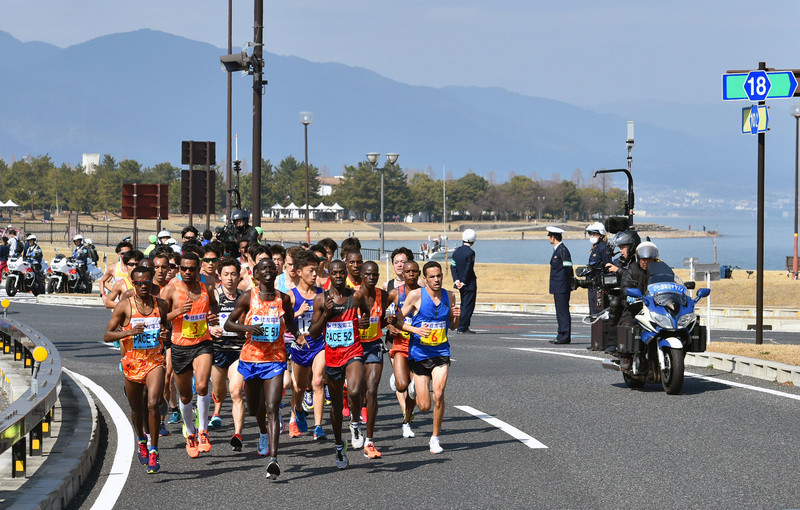
Starting and finishing on the track at Ojiyama Field, Lake Biwa has long been the final selection race for Olympic and World Championships teams. At both the 2012 London Olympics and 2016 Rio de Janeiru Olympics two of the three men's team members earned their places at Lake Biwa. At both the 1964 and 1968 Olympics all three members were chosen there. Its position on the calendar relative to Fukuoka and Tokyo meant the battles were always furious, and those who emerged victorious went on to take on the world.

There's no question that Lake Biwa has been the site of countless classic races and a vital part of Japan's marathon tradition, but in recent years its relevance has faded. One of the major factors in this was the Tokyo Marathon's change to a faster course in 2017. In 2018 Yuta Shitara (29, Honda) broke the Japanese national record in Tokyo, and two years later Suguru Osako (29, Nike) followed Shitara's lead and did the same. With that record of success, Tokyo has become the first choice for Japanese men targeting fast times.
The outcome of that change for Lake Biwa, an elite-only marathon, was that the athletes who could have provided the fireworks started staying away. With the Tokyo Marathon having moved to Lake Biwa's traditional date the first Sunday in March two years ago, Lake Biwa's shift a week later meant it was now the same day as the Nagoya Women's Marathon, hiding it in the shadows even further. The race's viability, financial and otherwise, came into question.
According to those involved, the Osaka Marathon is the most likely candidate to replace Lake Biwa as a national team selection event. With 35,000 people running on a downtown urban course it is the second-largest marathon in Japan after only Tokyo. With that kind of modern prestige to it, Osaka is highly likely to pick up the selection race label.
Modernity has a way of burying history. The MGC Race, a one-shot selection race for the Tokyo Olympics, was a major success. Those in power are leaning toward using the same kind of single trials race for the 2024 Paris Olympics. With the coronavirus crisis an ongoing issue, this is a period of transition. The Japanese marathon world isn't immune to those transitional forces, and we can only hope that its reorganization and reformation produce even more exciting races.
(12/18/2020) ⚡AMPby Brett Larner
Osaka Marathon
In 2022 the Lake Biwa Mainichi Marathon and Osaka Marathon were held together. For 2023 the name of the marathon will be Osaka and both men and women can run the race. The original male-only competition was first held in 1946 and, having taken place every year since then, it is Japan's oldest annual marathon race. The early editions of...
more...2021 Credit Union Cherry Blossom Ten Mile and 5K Run-Walk Rescheduled for September 12
Credit Union Cherry Blossom Run organizers announced today that their 2021 in-person events have been moved from the previously scheduled dates of April 9-11, to September 10-12, 2021.
The Health & Fitness Expo will take place at the National Building Museum on September 10 and 11; the Credit Union Cherry Blossom Kids’ Run will be held on September 11, on a course adjacent to the National Building Museum; and the Credit Union Cherry Blossom Ten Mile and 5K Run-Walk will take place on September 12 at their traditional start/finish areas on the Washington Monument Grounds.
The annual lottery for race entries will be held from June 1-13, 2021, with entry fees of $50 for the Ten Mile and $40 for the 5K Run-Walk. Runners with a guaranteed entry from the canceled 2020 events will be offered a choice of race dates: September 12, 2021, or April 3, 2022, which will celebrate the 49th running of the Runner’s Rite of Spring® in our nation’s capital. Registration details for the Credit Union Cherry Blossom Kids’ Run will be released at a later date.

Event Director Phil Stewart said: “We plan to continue our tradition of the Runner’s Rite of Spring with a one-time, special edition of the Runner’s Delight of Fall, by which time runners should be more than ready to return to in-person running events after over a year of mostly virtual runs. We are planning on making this a triumphant return.”
All is not lost in the spring, however, as race organizers also announced the Credit Union Cherry Blossom Ten Mile and 5K Virtual Runs that will coincide with the National Cherry Blossom Festival, March 20 through April 11, 2021. Registration for the virtual runs will open on January 18, 2021, and the $35 entry fee includes a t-shirt and finisher’s medal. Runners are encouraged to visit the Credit Union Cherry Blossom website for more information on the virtual runs.
Held virtually this year, the 2020 Credit Union Cherry Blossom Runs marked the 19th year of title sponsorship by Credit Union Miracle Day. Since 2002, over $10 million has been raised for the Children’s Miracle Network Hospitals, including $439,000 this year. Of that $439,000, $66,000 came from runners donating their entry fees instead of asking for a refund when race weekend in our Nation’s Capital was wiped out by COVID-19.
“While we were all disappointed that the race was canceled this year, together we are making a significant impact in our communities and in the lives of children treated at Children’s Miracle Network Hospitals,” said John Bratsakis, chair of Credit Union Miracle Day. “The funds raised directly benefit CMN Hospitals in local communities, helping to fund research, treatment, medical equipment and the challenges brought on by COVID-19. The unique, collaborative spirit of the credit union movement makes a real difference in communities, particularly during this time of uncertainty and disruption. We look forward to 2021 and our 20th year as title sponsor of the Credit Union Cherry Blossom Ten Mile and 5K Run-Walk.”
(12/18/2020) ⚡AMPCherry Blossom Ten Mile Run
The Credit Union Cherry Blossom is known as "The Runner's Rite of Spring" in the Nation's Capital. The staging area for the event is on the Washington Monument Grounds, and the course passes in sight of all of the major Washington, DC Memorials. The event serves as a fundraiser for the Children's Miracle Network Hospitals, a consortium of 170 premier...
more...Fresh from winning Valencia Marathon with a course record, Evans Chebet is looking towards the Olympic Games
Chebet, who edged out experience marathoners like Boston and Chicago Marathon champion Lawrence Cherono for the title, said his focus has now shifted to the Olympic Games.
“Running at the Olympic Games will be good achievement for me. It has been a long journey and making the marathon team will be a dream come true for me,” he added.
The Elgeyo Marakwet-based runner returned home after winning Valencia 42km race in a personal best time of of 2:03:00 ahead of compatriot Cherono (2:03:04) and Ethiopian Birhanu Legese (2:04:53), who completed the podium.
“It will be good if the team is named early to ensure we start our preparations on time. If I can make the team, I assure Kenyans that I will return with a medal,” added Chebet, who competed alongside world marathon bronze medalist Amos Kipruto.
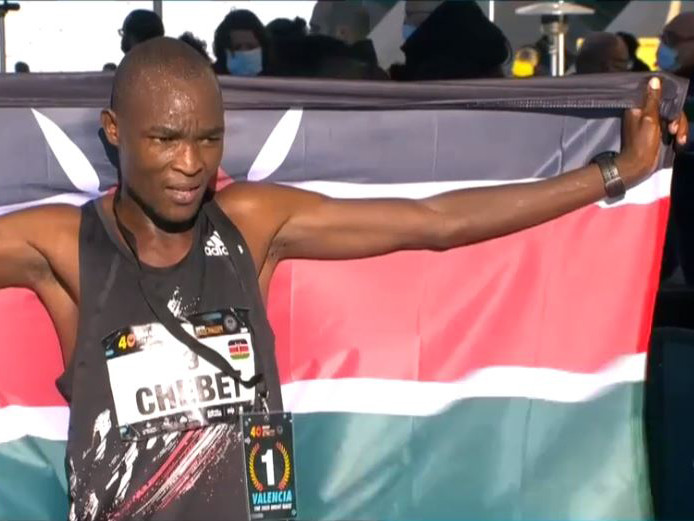
“I look forward to competing for my country at the Olympics Games after a good break and my prayer is that Athletics Kenya names the team early," said a jubilant Chebet. He said his biggest worry in Valencia was Legese but he is happy he shook him off.
Amos Kipruto, who has dominated in many marathons across the world, was named alongside Eliud Kipchoge and Lawrence Cherono in the Olympic Games marathon team.
“I managed to run my personal best because that was my target and I still believe I will be joining Team Kenya to the Tokyo show. The team that ran in Valencia was the best and we hope the federation will take note,” said Kipruto.
In 2019, Kandie 42:39 edged Kiplimo (43:00) in the San Silvestre Road Race in Brazil. Other entrants in men's category include Alexander Mutiso Munyao, Ethiopian Mosinet Geremew, Japan-based Bedan Karoki and Stephen Kiprop, winner of the 2019 edition.
Geremew won the Dubai Marathon in 2018 and came second in the London Marathon in 2019 with a time of 2.02.55, clocking the 4th fastest time ever in that distance.
Meanwhile, Mutiso recently placed 4th in Valencia in 57.59 and was runner-up in the men’s 2020 Ras Al Khaimah Half Marathon in 59:16.
In the women's category, World Half Marathon champion Peres Jepchirchir will battle against World marathon record holder Brigid Kosgei and 2019 World marathon champion Ruth Chepngetich.
Jepchirchir has fond memories of the Ras Al Khaimah Half Marathon, where she set her personal best time of 1:05.06 in 2017 on her way to victory. Chepngetich recently clocked a remarkable time of 1.05.06 at the New Delhi Half Marathon.
At the 20th Dubai Marathon in 2019, she won in a course record breaking time of 2.17.08, securing the world’s 4th best marathon time ever. Ethiopia's Ababel Yeshaneh will also be in contention.
(12/18/2020) ⚡AMPby Emmanuel Sabuni
Tokyo 2020 Olympic Games
Fifty-six years after having organized the Olympic Games, the Japanese capital will be hosting a Summer edition for the second time, originally scheduled from July 24 to August 9, 2020, the games were postponed due to coronavirus outbreak, the postponed Tokyo Olympics will be held from July 23 to August 8 in 2021, according to the International Olympic Committee decision. ...
more...World Half Marathon record holder Kandie Kibiwott and world defending champion Jacob Kiplimo of Uganda will face off at the Ras Al Khaimah Half Marathon in February next year
Kandie and Kiplimo to renew rivalry in Ras Al Khaimah Half Marathon.
The two are fast becoming rivals in the 21km race having faced off several times this year.
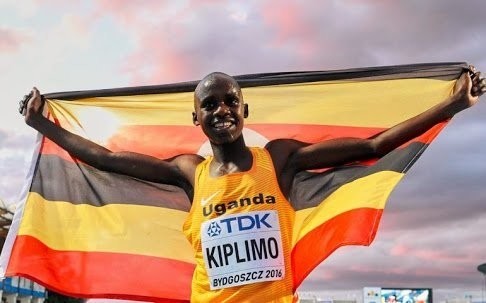
In their latest meet-up on December 6, the Kenyan emerged top after clocking a world record 57:32 to finish ahead of Kiplimo at the Valencia Marathon.
Kandie's win was revenge for his loss at the hands of the Ugandan at October's World Half marathon Championships in Gydnia, Poland where the latter crossed the finish line in in 58:49 — five seconds ahead of Kandie.

In 2019, Kandie 42:39 edged Kiplimo (43:00) in the San Silvestre Road Race in Brazil. Other entrants in men's category include Alexander Mutiso Munyao, Ethiopian Mosinet Geremew, Japan-based Bedan Karoki and Stephen Kiprop, winner of the 2019 edition.
Geremew won the Dubai Marathon in 2018 and came second in the London Marathon in 2019 with a time of 2.02.55, clocking the 4th fastest time ever in that distance.
Meanwhile, Mutiso recently placed 4th in Valencia in 57.59 and was runner-up in the men’s 2020 Ras Al Khaimah Half Marathon in 59:16.
In the women's category, World Half Marathon champion Peres Jepchirchir will battle against World marathon record holder Brigid Kosgei and 2019 World marathon champion Ruth Chepngetich.
Jepchirchir has fond memories of the Ras Al Khaimah Half Marathon, where she set her personal best time of 1:05.06 in 2017 on her way to victory. Chepngetich recently clocked a remarkable time of 1.05.06 at the New Delhi Half Marathon.
At the 20th Dubai Marathon in 2019, she won in a course record breaking time of 2.17.08, securing the world’s 4th best marathon time ever. Ethiopia's Ababel Yeshaneh will also be in contention.
(12/18/2020) ⚡AMPby William Njuguna
Rak Half Marathon
The Ras Al Khaimah Half Marathon is the 'world's fastest half marathon' because if you take the top 10 fastest times recorded in RAK for men (and the same for women) and find the average (for each) and then do the same with the top ten fastest recorded times across all races (you can reference the IAAF for this), the...
more...The Marathon Project is an elite only marathon being held Sunday Dec 20 in Chandler Arizona
When COVID-19 postponed or canceled all of the year’s major marathons in the U.S., two running industry insiders—Ben Rosario, the coach of NAZ Elite in Flagstaff, and Josh Cox, an agent to many marathoners, including several on the NAZ team—brainstormed a way for some of the country’s fastest athletes to race.
The result is The Marathon Project, an elite-only 26.2 that takes place at 10 a.m. ET on Sunday, December 20, on the Gila River Indian Reservation in Chandler, Arizona.
The course is on a flat, two-mile stretch of road with roundabouts at each end. Runners go up one side of the road and back down the other for a 4.2-mile loop that they’ll do parts of six times. The course is built for fast times, not for variety.
The race will be broadcast live on USATF.tv, and a 90-minute replay of the race will be available on NBCSN at 7:30 p.m. ET on Sunday evening. The broadcast will include veteran commentator Paul Swangard as well as Des Linden and Bernard Lagat, two experienced marathoners who should bring some insightful analysis.
Who is racing?
The race brings together 53 men and 44 women, plus 14 male pacers. Several were top-10 finishers at the Olympic Marathon Trials in February, the last chance these runners had a chance to race a major marathon on U.S. soil.
The top women include Sara Hall, who finished second in 2:22:01 at the London Marathon in October, and Keira D’Amato, who recently set a women’s-only 10-mile American record.
Stephanie Bruce, Emma Bates, Kellyn Taylor, and Julia Kohnen (who were sixth, seventh, eighth, and 10th, respectively at the Trials) also figure to be in the mix.
On the men’s side, Americans Scott Fauble and 2016 Olympian Jared Ward are among the top contenders. Four top-10 finishers from the Trials—Marty Hehir (sixth), CJ Albertson (seventh), Colin Bennie (ninth), and Matt McDonald (10th)—will also line up.
The men’s race also brings several international entrants. Amanuel Mesel Tikue of Eritrea boasts a PR of 2:08:17, although it dates back to 2013. Jose Antonio Uribe Marino of Mexico hopes to hit the Olympic standard of 2:11:30 to qualify for the Games, and Cam Levins of Canada also is looking for a strong performance to put him on the Canadian Olympic team.
Will Sara Hall set the American record?
Hall, 37, has been on a tear lately. After dropping out of the Trials at mile 22, she redeemed herself with a PR in a solo half marathon in Oregon and that runner-up finish in London, which she earned by way of a furious finishing kick in the race’s final meters.
The American record for the marathon, Deena Kastor’s 2:19:36, has stood since 2006. Hall has asked for a pacer to take her through the halfway point in 69:40, faster than Kastor’s record.
But in a prerace press conference, Hall was reluctant to call it a record attempt. “I want to go into this race with the mindset of trying to run as fast as possible,” she said on the Zoom call. “I can be all or nothing, and I don’t want to be in a scenario where I’m running really well and if I’m just off the American record pace, it feels like I’m failing. I think that would still be a big success, a big PR. That’s my main focus, just running as fast as I can.”
Hall added that she has done a lot of training faster than record pace. “I think [the record is] definitely possible based on my training,” she said.
In addition to Hall’s requested pace for a 2:19:20 marathon, the women’s race will have three other pace groups: 2:23, 2:26, and 2:29:30, which is the Olympic qualifying standard. The men will have two pace groups: 2:09 and 2:11:30.
What’s in it for the runners?
Rosario announced a modest prize purse: $5,000 for each winner, $2,000 for second, and $1,000 for third.
Otherwise, athletes are racing for sponsor bonuses—shoe companies often pay their athletes extra money for breaking certain times, although the terms of these deals aren’t publicly known.
Then, of course, there’s the joy of racing, when events have been hard to come by for the past 10 months.
“Every opportunity we have to be on a starting line is a gift in 2020,” Bruce said.
What safety measures are in place?
The race is following safety guidelines set out by USA Track and Field, World Athletics, and the state of Arizona. Participants must take two COVID-19 tests, separated by 24 hours, within the seven days before the race—which, of course, must both be negative. Most participants are staying in a race hotel near the course, creating a bubble environment of sorts.
But runners are traveling from all over to get to the race. Hehir, who is finishing up his final year of medical school, is traveling to the race from Philadelphia, where he has spent the past two weeks working in an ICU filled with COVID-19 patients.
“It’s just as scary as it’s hyped up to be,” Hehir said of Covid. “Yes, not everyone ends up in the ICU, but when you end up there, you are incredibly sick. It’s definitely a bleak place to be.”
He said he gave some “extra thought” into committing to the race, but he praised the precautions the race had put in place. “These opportunities are far and few between,” he said, “and as long as we feel like it’s being done in a safe way, a lot of us are going to jump on it.”
(12/17/2020) ⚡AMPby Sarah Lorge Butler (Runner's World)
Usain Bolt says that he weighs up the possibility of technical role as fatherhood teaches him patience
World’s fastest man Usain Bolt says that he has not ruled out the possibility of becoming a coach in the near future.
Bolt was speaking on Thursday at the Digicel Business Masterclass Series, a virtual event aimed at giving an inside look at the experiences of business leaders on the island, imparting their knowledge and lessons learnt along their road to success.

Three years after his retirement from athletics, Bolt has pursued other business interests but when asked if coaching was something that he would consider doing, he said that he was wary of the prospect because of his lack of patience. However, he says that the lessons he has learnt in raising his first child, Olympia, has helped him to develop that quality and is not closing the door completely on the option.
PATIENCE NEEDED

“You have to have the patience to deal with athletes, and for me, I don’t have that patience,” Bolt said. “But now that I have a little one, I’m learning to have patience. So maybe in the near future I might get to the point where I can say maybe [I could be] a coach. But before Olympia, no.”
For the majority of his career, Bolt trained under Racers Track Club founder and head coach Glen Mills. The partnership yielded eight Olympic titles, 11 World Championship gold medals, and the world records in both the 100m and 200m.
Bolt says that he recognises the qualities that coaches must have in developing talent and appreciates the challenges that Mills had to deal with during their training sessions.
“As a coach, you have to be very patient,” he said. “You will get athletes and you will have to tell them the same things over and over and over again. I wasn’t one of those athletes, but it’s hard for a coach. I’m not going to say that I made it easy for my coach. He had to shout at me at times.”
Additionally, he spoke about the respect and trust that he had in Mills during his career and how that respect was important to his reaching the highest level of athletics.
“I always say to people, ‘If coach [Mills] tells me tomorrow you are going to wake up and run eight seconds, I’ll believe him’,” he said. “That’s how much I believe in my coach because he has proven himself to me.”
(12/17/2020) ⚡AMPby Daniel Wheeler
Haile Gebrselassie prepares for the 20th edition of the Great Ethiopian Run will go ahead next month with many COVID-19 precautions in place
Two-time Olympic champion Haile Gebrselassie announced on Tuesday that he and the Great Ethiopian Run (GER) organizers plan on going ahead with their race in a month’s time on January 10.
This will be the 20th edition of the 10K race in the Ethiopian capital of Addis Ababa, an event that Gebrselassie founded in 2000 after he won his second Olympic 10,000m gold medal at the Sydney Games. Gebrselassie says he and his organizing team are expecting 12,500 participants to toe the line at the January race, and they have a number of COVID-19 precautions in place to make the event as safe as possible for everyone involved.
The GER was originally scheduled for November, but organizers decided to postpone the event for a couple of months. As explained on the event website, the GER team has used this extra time to consult with the Ethiopian Ministry of Health to create COVID-19 guidelines that will be enforced on race day. The biggest change for the upcoming run is the race capacity, which has been reduced to about a quarter of its normal size. The expected field of 12,500 is close to 30,000 fewer runners than the GER saw in 2019. This is by no means a small field, especially during a pandemic, but it is substantially smaller than organizers have seen in years past.
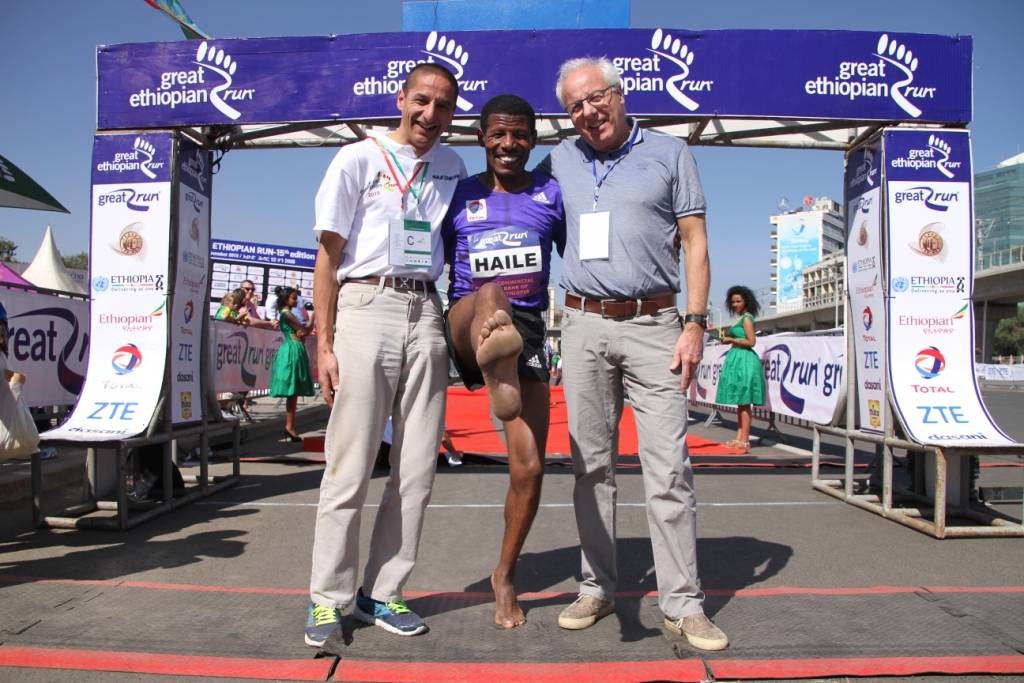
The week before the run, all participants will receive their race shirts along with masks, which will be mandatory on race day. Only when on the race course will athletes be permitted to remove their masks. On the day, all participants will undergo temperature checks, and organizers have asked anyone who feels unwell or is experiencing COVID-19 symptoms to skip the race. A wave start will be implemented, with groups leaving in 15-minute intervals, and runners will have to carry their own water on the course, as there will be no hydration stations on the route. Finally, an “exit flow operation” will be organized to avoid crowds at the finish line.
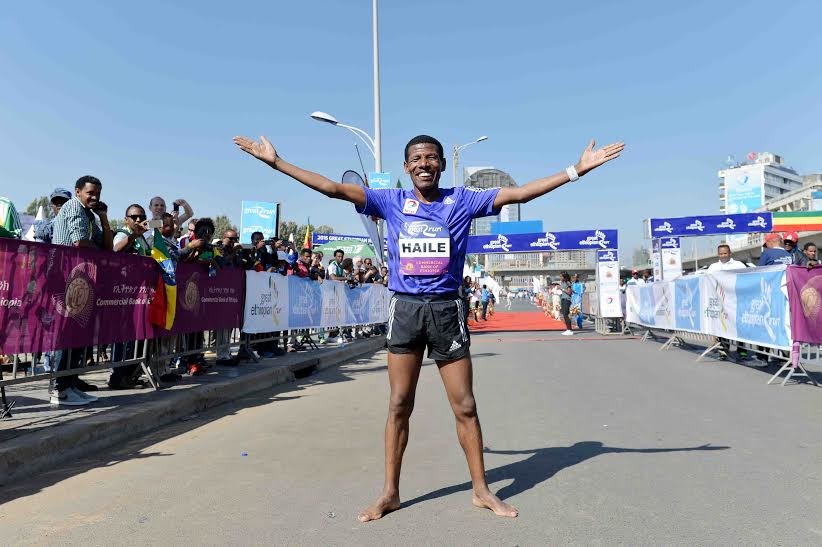
While Gebrselassie’s announcement was welcome news to some, many people have been critical of the call to hold the race while COVID-19 persists around the world. This has been a popular topic of debate in recent months, as more and more races have made comebacks or announced plans to return to racing during the pandemic.
(12/17/2020) ⚡AMPby Ben Snider-McGrath
the Great ethiopian 10k run
The Great Ethiopian Run is an annual 10-kilometerroad runningevent which takes place inAddis Ababa,Ethiopia. The competition was first envisioned by neighbors Ethiopian runnerHaile Gebrselassie, Peter Middlebrook and Abi Masefield in late October 2000, following Haile's return from the2000 Summer Olympics. The 10,000 entries for the first edition quickly sold out and other people unofficially joined in the race without...
more...World champions Ruth Chepngetich and Peres Jepchirchir added to Ras Al Khaimah Half Marathon line-up
The fields for the Ras Al Khamimah Half Marathon continue to go from strength to strength with world champions Peres Jepchirchir and Ruth Chepngetich being added to the line-up for the World Athletics Gold Label road race on 19 February 2021.
World marathon champion Chepngetich, who recently set a half marathon PB of 1:05:06, will be making her Ras Al Khaimah debut. Jepchirchir, who won the world half marathon title in October in a women-only world record of 1:05:16, will return to the scene of her 2017 triumph when she set a world record of 1:05:06.
But the Kenyan will be up against the three fastest women in history when she lines up in Ras Al Khaimah. World record-holder Ababel Yeshaneh, Ethiopia’s Yalemzerf Yehualaw and marathon world record-holder Brigid Kosgei will also be returning to the United Arab Emirates in February.
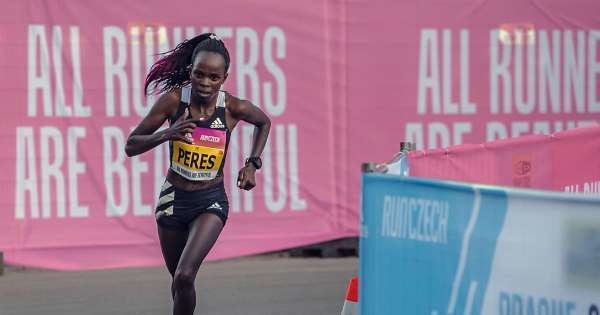
Yeshaneh and Kosgei have clashed twice to date, both races resulting in world records. Their first duel came at the 2019 Chicago Marathon, which Kosgei won in a world record of 2:14:04 while Yeshaneh placed second in 2:20:51. Just four months later, Yeshaneh levelled the score by winning in Ras Al Khaimah in a world record of 1:04:31. Kosgei was runner-up in 1:04:49, the second-fastest time in history.
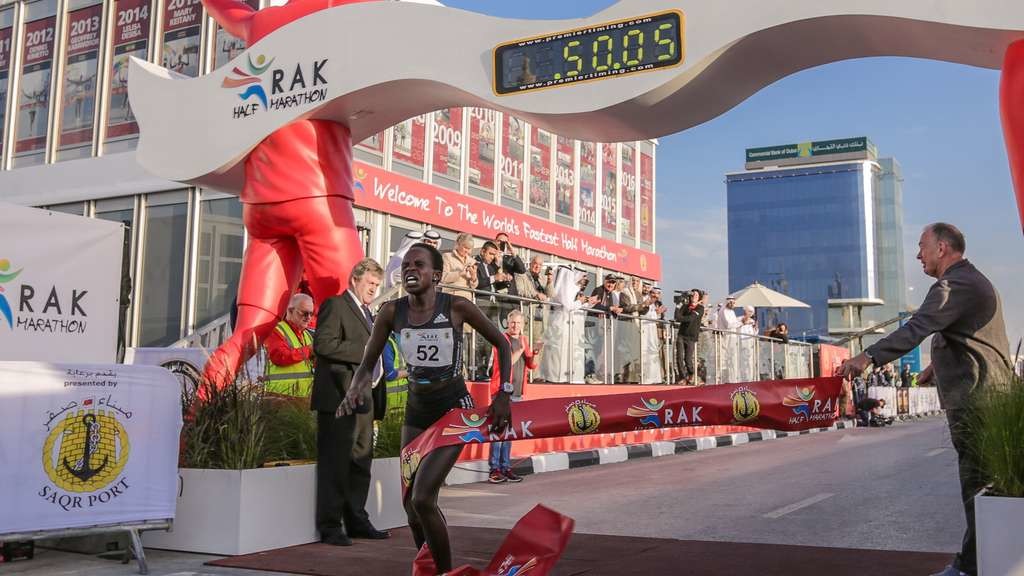
Yehualaw, meanwhile, finished third at the recent World Athletics Half Marathon Championships in Gdynia, just a few seconds behind Jepchirchir. Six weeks later, she won the New Delhi Half Marathon in 1:04:46, the second-fastest time in history.
USA’s Sara Hall, who placed second at this year’s London Marathon, finishing between Kosgei and Chepngetich, is also in the field.
Three former winners – including the joint course record-holders – have been added to the men’s line-up. 2019 champion Stephen Kiprop and two-time winner Bedan Karoki, who jointly hold the course record at 58:42, will return to Ras Al Khaimah alongside 2015 winner Mosinet Geremew.
They will take on the previously announced defending champion Kibiwott Kandie, who recently set a world half marathon record of 57:32 in Valencia, and world half marathon champion Jacob Kiplimo of Uganda. Kiplimo reduced his PB to 57:37 in Valencia earlier this month, making him the second-fastest man in history for the distance.
Alexander Mutiso, who ran 57:59 in Valencia to move to fourth on the world all-time list, will also be in action in Ras Al Khaimah.
Switzerland’s Julien Wanders and Norway’s Sondre Nordstadt Moen complete the line-up.
(12/17/2020) ⚡AMPby World Athletics
Rak Half Marathon
The Ras Al Khaimah Half Marathon is the 'world's fastest half marathon' because if you take the top 10 fastest times recorded in RAK for men (and the same for women) and find the average (for each) and then do the same with the top ten fastest recorded times across all races (you can reference the IAAF for this), the...
more...Three-Time World Half Marathon Champion Geoffrey Kamworor Shares Seven Treadmill Training Tips
Three-time world half marathon champion and two-time world cross country gold medalist Geoffrey Kamworor is among the finest endurance runners of his generation. During lockdown the Kenyan star began using a treadmill at home and has continued to do so as part of his rehabilitation from a recent injury he suffered after a motorbike knocked him to the ground during an early morning run in June. Here the two-time New York Marathon winner offers his seven top treadmill training tips.
Take time to practice:
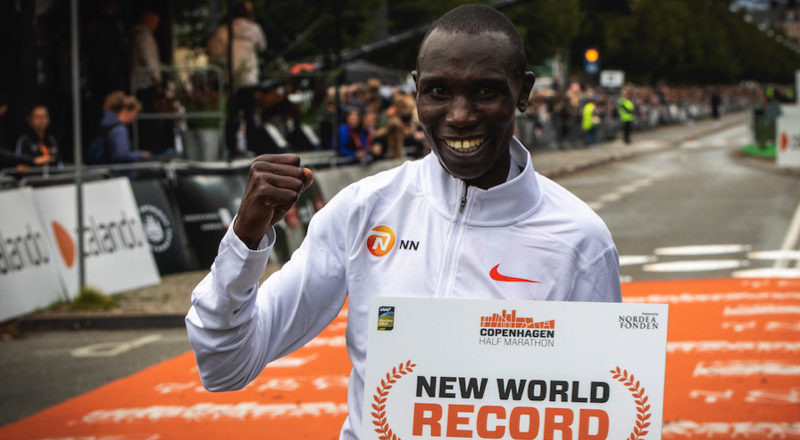
Kamworor urges novice treadmill runners to be patient in order to become accustomed to running on the machine before engaging in any intense sessions.
“It takes take time for people to adjust and learn how to run on a treadmill,” he explains. “I learned pretty quickly how to do so, but for others it can take a little longer.”

Warm up properly:
When jumping on the treadmill it should be treated no differently to running outside in that it requires a thorough warm up.
“Run slowly at first,” he says. “The good thing with a treadmill you can easily set the pace. Maybe start at a walking pace, then slowly increasing the speed to running pace.”
Embrace its versatility:
Kamworor believes the treadmill can be used for many different types of sessions, from tempo runs to fartlek and even speed sessions. A favourite fartlek session of his is three minutes of fast running at a speed of between 20-22kmph followed by one minute of jogging at 10kmph, then repeated.
“I set the calculations into the machine so 10 seconds before I’m scheduled to run at full speed again this allows the machine to gradually adjust to full speed.”
Speed sessions:
While acknowledging it is a little trickier to replicate track speed sessions on the treadmill he insists it is far from impossible.
“It is not something easy because it requires a lot of calculations but this is something you can learn over time, and, for me, it works perfectly. Normally, I would train on the track in a group but the treadmill allows me to do the speed session alone if necessary.”
Flat gradient:
Some treadmill users emphasise the importance of always running at a slight gradient but as many of Kamworor’s quicker sessions are run on the flat he prefers to replicate this with a 0.0 % gradient during many of his treadmill sessions.
“The option is there, though, to run on a slight incline or decline if you want to,” he adds.
Visualize a route:
Kamworor personally prefers not to listen to music when treadmill running, because he likes to stay fully concentrated. He does, however, suggest to any treadmill runners to visualize a running route when on the treadmill.
“Whether you are on a speed session or tempo run it is importance to visualize, even if you are visualizing a competition. It is important to think positively about running.”
Cool down:
Like on any run, Geoffrey says it is important not to neglect the cool down on the treadmill. “It is important to reduce the speed to 10kmph or less,” he says. “Twenty minutes is a nice cool down time.”
(12/17/2020) ⚡AMPby World Athletics
Olympic Marathon Trials Winner Shogo Nakamura Plans to Run Lake Biwa Mainichi Marathon
On Dec. 15, Olympic marathon trials winner Shogo Nakamura (28, Fujitsu) sat for an online interview from his training base in Tokunoshima, Kagoshima, revealing that he plans to run the Feb. 28 Lake Biwa Mainichi Marathon.
Reporting that his training has been progressing steadily, Nakamura enthusiastically said, "The goal is to win in Lake Biwa to build up some momentum for the Olympics. Time is important too, but the main goal is to win."
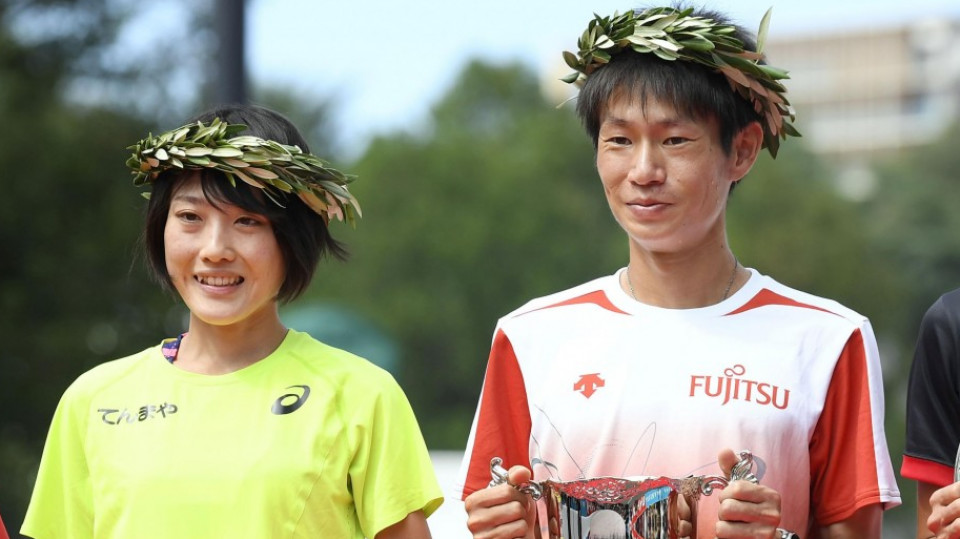
Lake Biwa will be a year and a half since Nakamura's last marathon, the Sept., 2019 MGC Race Olympic trials.

Since his victory there everything about the Olympic marathon has changed, with the venue forcibly relocated to Sapporo and the Olympics themselves postponed for a year. But through it all he has remained true to his path without wavering.
Nakamura ran his debut marathon at Lake Biwa in 2018, and it is no accident that he is returning there for his final marathon before the Olympics. "I was the top Japanese finisher in 2018 and got my place at the MGC Race there," he said. "
But instead of just going back to where it all started, I want to go into the Olympics with a fresh new mindset. I want to win this time, not just be the top Japanese man."
Before that, Nakamura will kick off his Olympic year early at the Jan. 1 New Year Ekiden national corporate men's championships. He expects to be put on either the critically important Fourth or Fifth Stage, but whichever it ends up being, he said, "I want to win my stage and help my team succeed."
(12/16/2020) ⚡AMPby Brett Larner
Osaka Marathon
In 2022 the Lake Biwa Mainichi Marathon and Osaka Marathon were held together. For 2023 the name of the marathon will be Osaka and both men and women can run the race. The original male-only competition was first held in 1946 and, having taken place every year since then, it is Japan's oldest annual marathon race. The early editions of...
more...Sebastian Coe says that he is not sure Russian doping issue can be resolved in near future
World Athletics President, Sebastian Coe said on Friday, that he wants the suspended Russia to return as an “accountable and responsible” member federation but he is not sure of resolving the Russian doping issue in the near future.
Russia was suspended in 2015 after World Anti-doping Agency (WADA) found evidence of mass doping among Russian track and field athletes. “I hope it in the foreseeable future, I am not sure, I will use the word ‘near’. I cannot quantify that (future) but that has to be our ambition,” Coe answered when asked if he is hopeful of resolving the Russian doping issue in the near future.
“It’s not a good thing to have a country like Russia sitting outside our sport. I want Russia to be back as a fully functioning member federation with accountability and responsibility, that every other member federation accepts,” Coe said during an interaction with PTI.

The Russian federation paid a multi-million dollar fine in August to avoid expulsion from World Athletics. “I am optimistic, we are moving in right direction. There is a new president of the federation elected recently (Pyotr Ivanov) and the (WA) Task Force thinks at last, there is a federation president who is seized of the importance of driving a change,” Coe said.
World Athletics in September gave Russia a six-month extension to finalise it’s reinstatement plan, before it decides on it’s potential fresh sanctions or even expulsion. ” Our task force chaired by Rune Andersen gave an update report to the (WA) Council last week. We had two days of council meeting and he (Andersen) said ”he is more optimistic about the process that we are in,” the 64-year old said.

“The re-instatement roadmap is going to be with us datelined beginning March. Hoping it might be a little bit earlier. It then allows us to look at the status of authorised neutral athletes (ANA). But there is another (trail) of complexities in that because the WADA is still waiting the outcome of an appeal (by Russian athletes) to the Court of Arbitration of Sports,” the double Olympic medalist added.
Coe was asked how difficult it was to conduct dope tests of athletes during the COVID-19 pandemic. “We are continuing (testing of athletes) though it is challenging. There are travel restrictions… logistic challenges getting to the athletes. But we have continued our testing processes. Right at the beginning of the pandemic, I had advised the athletes very strongly not to conclude that they are going to be in a test free zone,” he answered.
“The nature of testing has changed, now it is intelligence-led, it is incremental and sequential. We know who, how and where the challenges are. Most of the athletes are very happy that we are taking that approach,” he added.
(12/16/2020) ⚡AMPby FS Desk
Athletics Kenya celebrating 70th anniversary
Athletics legend celebrated the 70th anniversary since the advent of sport in the country Tuesday with advice to the government and Athletics Kenya (AK) to develop the game across the board and deal with doping menace firmly.
Some of the legends, who numbered 70, expressed concerns that Kenyan athletes, especially women, were not lasting either on track and road running for long, and called on AK to get to the bottom of it.
The first Kenyan women at the Olympics (1968 Mexico) Lydia Stephens (100m/200m) and Tecla Sang (400m), who spoke passionately on how they competed for fun and enjoyment rather than money, want deliberate efforts made to develop sprints in the country.
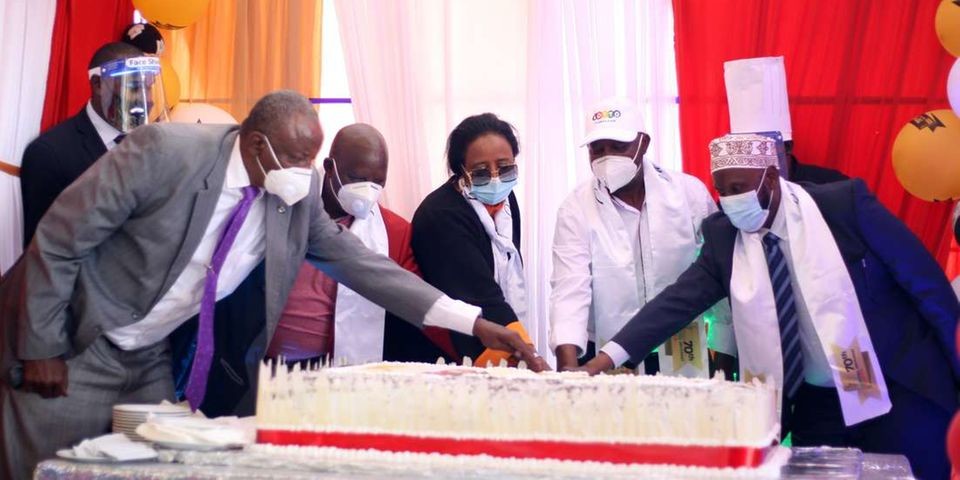
The 1988 Olympics gold medallists Julius Kariuki (3,000m steeplechase), John Ngugi (5,000m) and legendary sprinter Rose Tat-Muya said the government and AK must fight doping for the sport to continue existing well.
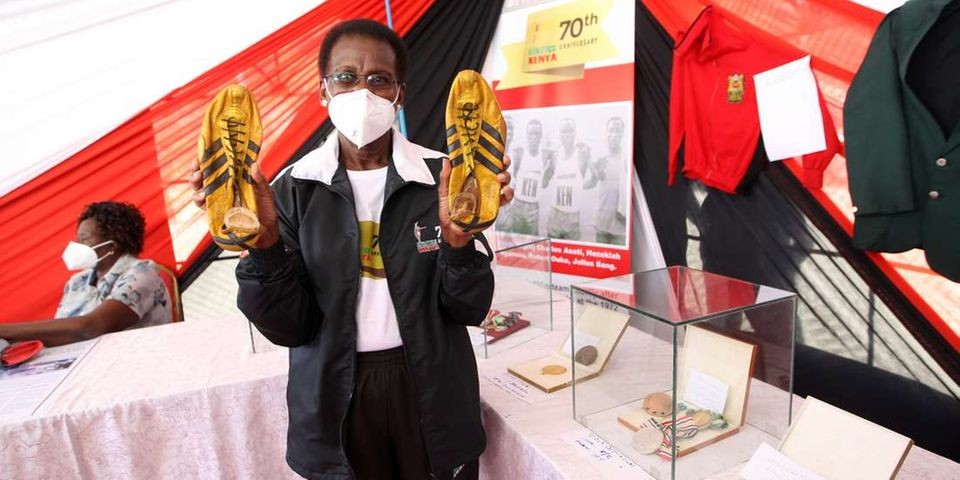
The first Kenyan to win steeplechase title at the Olympics, Amos Biwott, who achieved the feat at the 1968 Summer Games and the Fatwel Kimaiyo, who still holds the 110m hurdles national record set at 1974 Commonwealth Games, also voiced the same concerns.
They advised athletes to use traditional and natural food rather than supplements as Wilson Kiprugut Chumo, the first Kenyan to ever win an Olympic medal during the 1964 Tokyo Summer Games, urged athletes to train hard and put God first.
“We need to start the children off at an early age. I started athletics at the age of five when I was at kindergarten in Mombasa,” said the 75-year-old Stephens, adding that she would not have gotten the chance to compete for Kenya if she had not left Mombasa to school elsewhere.
“That is why I want to urge AK and coaches to cast their nets wider. We can produce great sprinters if we are to develop the talent that is rich across the country,” said Stephens.
“We concentrate only in rift valley where there are distance running athletes. The place too has great runners for instance Julius Sang.”
Tata-Muya, the youngest ever Kenyan to compete at the Commonwealth Games (1974), said they never used supplements or went to the gym, but performed well setting national records that are yet to be broken.
“We consumed natural foods, trained well and respected our coaches,” said Tata-Muya, who still holds the 400m hurdles national record.
(12/16/2020) ⚡AMPby Ayumba Ayodi
Japan's former Olympic marathon champion Naoko Takahashi has donated her winning bib at the 2000 Sydney Olympics to the World Athletics Heritage Collection
Naoko Takahashi, the first woman to run a marathon in under two hours 20 minutes, has become the latest athletics star to generously donate a competition item from their career to the World Athletics Heritage Collection.
Takahashi clocked an Olympic marathon record of 2:23:14 on 24 September 2000 to win at the Sydney Olympic Games. It was the first Olympic victory at the marathon by a Japanese woman and her Games record was not broken until 2012.

Takahashi moved to the front of the race at the 20-kilometre point along with her compatriot Ari Ichihashi and Romania’s Lidia Simon. Ichihashi dropped off the pace five kilometres later, leaving Takahashi and Simon to battle for the title. The two ran together until 35 kilometres when Takahashi broke away, quickly establishing a 30-metre lead. She extended it over the next five kilometres and although Simon narrowed it slightly over the waning two kilometres, Takahashi, wearing bib number 2338, went on to a comfortable victory.
It is that bib which she has very kindly donated today.
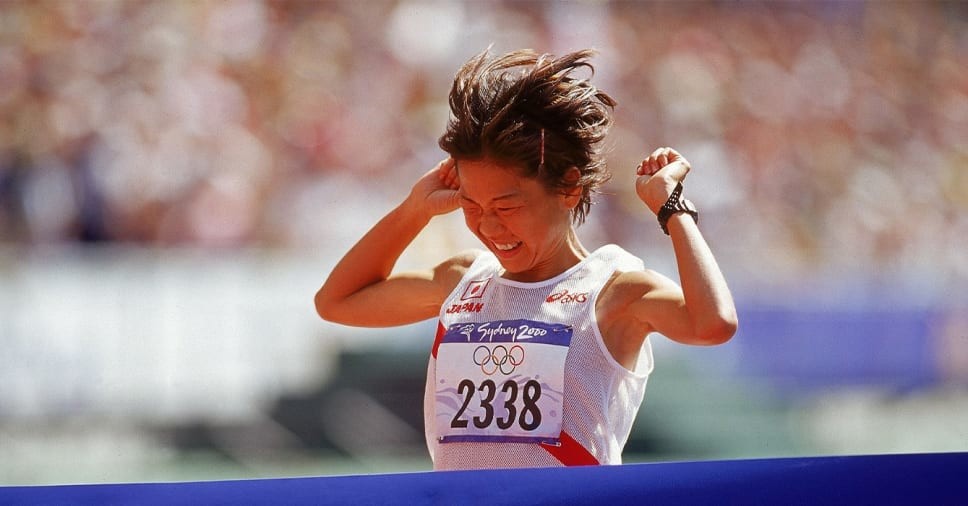
“I am happy to see my Sydney bib join the Heritage collection,” said Takahashi. “I would like the bib’s donation to help increase interest in the marathon, and the challenge and beauty of distance running. It might also help motivate more people to take up running for fitness and fun, or perhaps even competitively, picturing themselves in my shoes.”
Daughter Of The Wind
There was no underestimating Takahashi’s national popularity and fame after her Olympic triumph. She was the subject of a comic strip entitled "Kazekko," or "Daughter of the Wind". Launched in May 2001, the strip told Takahashi’s life story and at its height attracted 700,000 readers weekly.
Takahashi’s career was inspired by the legend of Ethiopia’s two-time Olympic marathon champion Abebe Bikila. As she developed as a runner, Takahashi was also impressed by the running of Japan’s Yuko Arimori, who raced to Olympic silver in 1992 and bronze in 1996.
Yet it was only when her training partner Hiromi Suzuki won the 1997 world title in the marathon that Takahashi, who had debuted with a seventh place finish in 2:31:32 in Osaka in January of that year, truly believed that her future lay in the marathon.
Audience Of 55 Million
Takahashi, who was coached by the late Yoshio Koide who last year was posthumously awarded the World Athletics Plaque, won the first of her two Berlin Marathon titles in September 2001 with a landmark 2:19:46 performance, a world best and the first time in history that a woman had broken 2:20 for the distance.
Estimates vary but it is believed that 55 million Japanese, nearly half of the country’s population, watched Takahashi’s Berlin race on television.
“I am really happy about the (Berlin TV audience),” Takahashi told The Japan Times in 2003. “It’s an honour that people still remember me, and you can tell that people’s awareness of the sport is big.”
“There are so many different sports these days and the level of viewership is a tribute to the people who came before me and built the marathon up and made it as popular as it is now. Being a part of that is amazing and I am grateful.”
(12/16/2020) ⚡AMPby World Athletics
Diamond League meets were postponed due to the pandemic and all 14 meets are set to return in 2021
The 2021 Diamond League program is officially set, and all 14 meets are scheduled to return after many were forced toward cancellation this year due to COVID-19. The season will kick off on May 23 in Rabat, Morocco, and it will continue in full force until September 8 and 9 at the Diamond League Final in Zurich.
While it will be exciting to see any and all events next year after so few meets in 2020, one that many track fans will be looking forward to will be the Prefontaine Classic in Eugene, Ore., which will be the first major international meet held at the University of Oregon’s newly renovated Hayward Field.
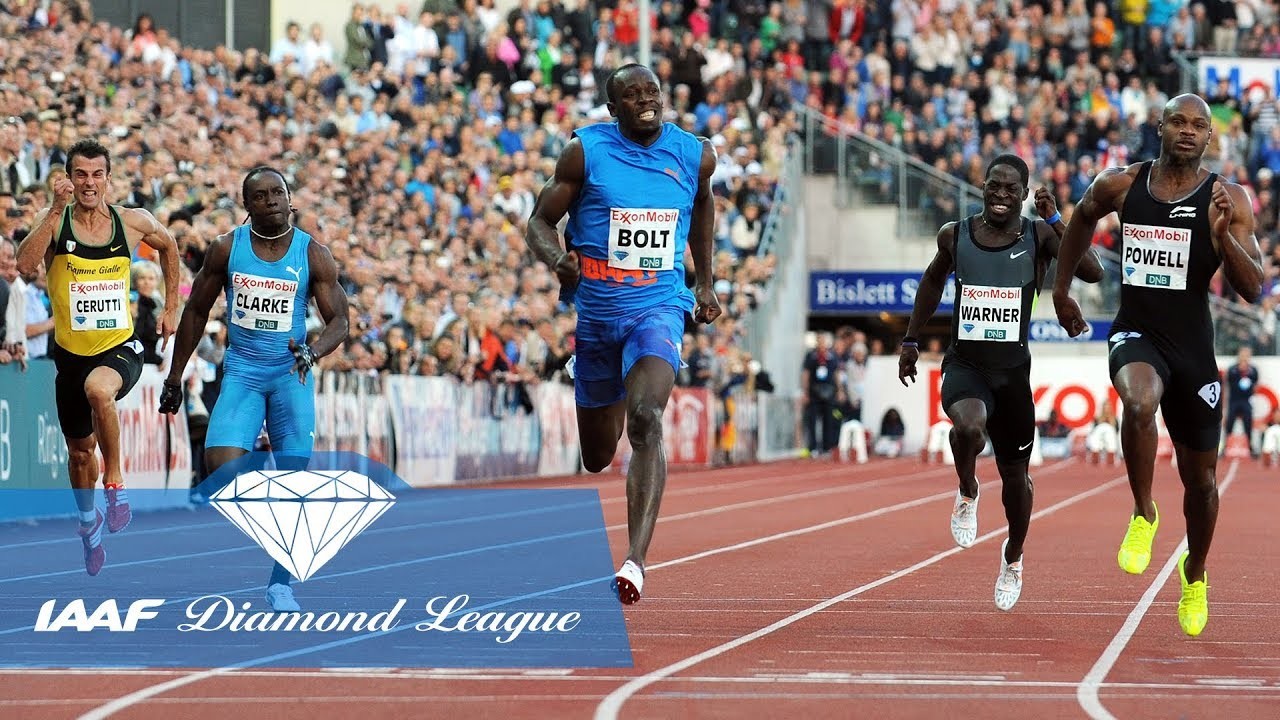
2021 event programs
After cutting the 200m and any event longer than 3,000m from many 2020 Diamond League events (including the final), World Athletics recently announced they will be reversing this decision in 2021. There are now 32 disciplines (16 for men and 16 for women) that will be held at the various Diamond League events.
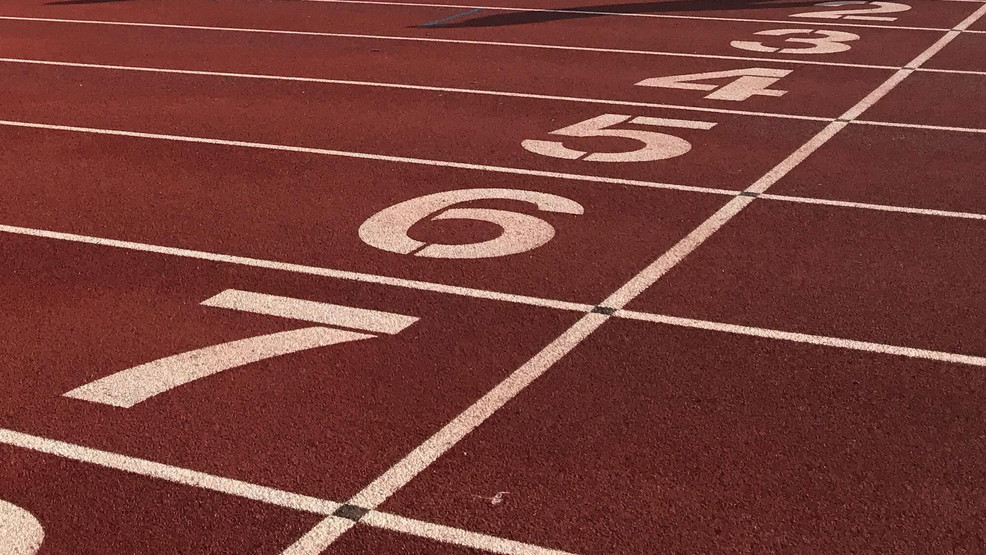
As it stands now, there will be either 3,000m or 5,000m races (which are counted on the Diamond League schedule as one discipline) at all but two Diamond League events next year. Only the Stockholm and Monaco will not feature these longer runs.
As for the 3,000m steeplechase, the Oslo, London and Lausanne meets are the only three that will not include this event. The 200m will be held at every meet other than the two separate events in China. The two-day Diamond League Final in Zurich will see all 32 disciplines contested.
Hayward field was prepared for competition this year, but events were, of course, unable to run as planned due to the pandemic. Everything is ready to go for 2021, though, and there are two meets scheduled to be held at Hayward before the Prefontaine Classic: the NCAA Outdoor Track and Field Championships and the U.S. Olympic Team Trials.
Both of these meets are set for June, and while they’re certainly major events, they don’t compare to the Pre Classic, which will attract top athletes from all over the world. The Pre is a one-day affair slated for August 21, and it will feature a number of exciting events. For running fans, the main competitions to look forward to at Hayward will be the men’s and women’s 100m and 200m races and the men’s and women’s 1,500m.
(12/15/2020) ⚡AMPby Ben Snider-McGrath
The importance of exercise to stay healthy, energetic and independent as you get older
Many adults aged 65 and over spend, on average, 10 hours or more each day sitting or lying down, making them the most sedentary age group.
They're paying a high price for their inactivity, with higher rates of falls, obesity, heart disease and early death compared with the general population.

As you get older, it becomes even more important to remain active if you want to stay healthy and maintain your independence.

If you do not stay active, all the things you've always enjoyed doing and taken for granted may start to become that little bit harder.
You may struggle to pursue simple pleasures, such as playing with the grandchildren, walking to the shops, leisure activities and meeting up with friends.
You might start to get aches and pains you never had before and have less energy to go out. You may also be more vulnerable to falling.
This can all lead to being less able to look after yourself and do the things you enjoy.
Strong evidence
There's strong evidence that people who are active have a lower risk of heart disease, stroke, type 2 diabetes, some cancers, depression and dementia.
If you want to stay pain-free, reduce your risk of mental illness, and be able to go out and stay independent well into old age, you're advised to keep moving.
Recent evidence suggests that regular exercise can reduce the risk of falling in older adults.
It's that simple. There are lots of ways you can get active, and it's not just about exercising.
"As people get older and their bodies decline in function, physical activity helps to slow that decline," says Dr Nick Cavill, a health-promotion consultant.
"It's important they remain active or even increase their activity as they get older."
Most people as they get older want to stay in touch with society – their community, friends and neighbours – and being active can ensure they keep doing that.
What is physical activity?
Physical activity is anything that gets your body moving. It includes anything from walking and gardening to recreational sport.
Aim for at least 150 minutes of moderate activity every week.
Ideally, you should try to do something every day, preferably in bouts of 10 minutes of activity or more.
One way of achieving 150 minutes of activity is to do 30 minutes on at least 5 days a week.
(12/15/2020) ⚡AMPby NHS
President of the UAE Athletics Federation Ahmad Al Kamali has been suspended for six months upholding corruption charges
President of the UAE Athletics Federation Ahmad Al Kamali has been suspended for six months and fined 5,000 euros ($6,080) for gifting watches to delegates in an attempt to win votes, the World Athletics ethics board said on Tuesday.
The Athletics Integrity Unit had provisionally suspended Al Kamali from any athletics-related activities last October, preventing him from standing in election for the vice president’s role at World Athletics, formerly known as the International Association of Athletics Federations (IAAF).
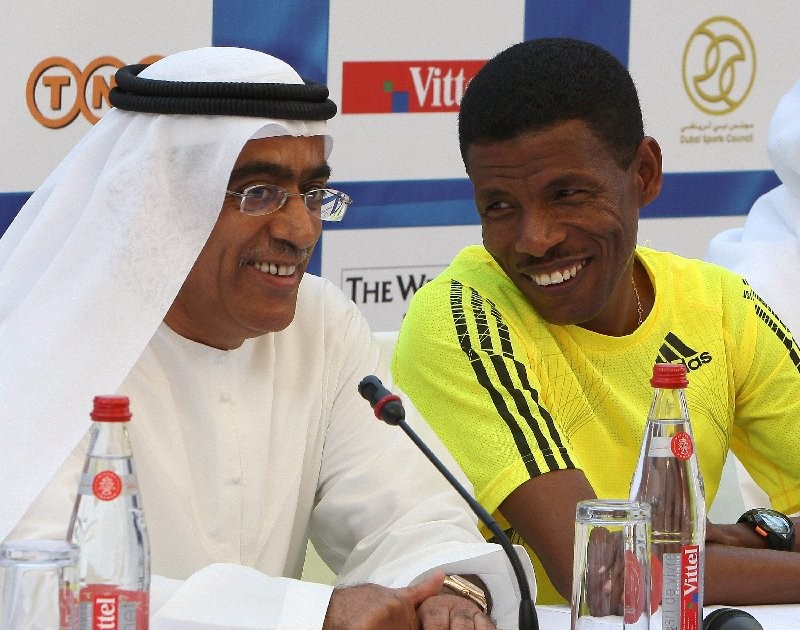
World Athletics said in a statement that Al Kamali was alleged to have gifted Rolex and/or UAE branded Continental watches to delegates at the Confederation of African Athletics Congress in 2015 while he was a member of the IAAF Council.
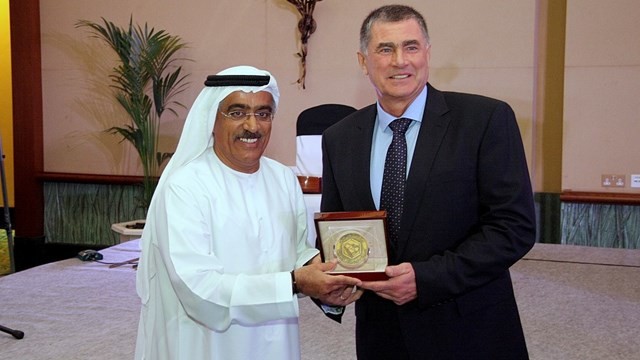
Al Kamali admitted giving watches to the delegates but said the retail value of the gifts did not exceed $40 to $50.
“Mr Al Kamali has been found to have violated the Code of Ethics by his conduct... in giving gifts of more than nominal value and failing to act with dignity and respect for his opponents as a candidate for IAAF office,” World Athletics said in a statement.
“The purpose of the prohibition on giving valuable gifts is to maintain the integrity and impartiality of IAAF officials and of the IAAF as an institution...
“Accordingly, the Panel considers it appropriate to impose a 6 month ban upon Mr Al Kamali from taking part in any athletics-related activity including holding any relevant office in athletics (whether at national, regional or world level).”
(12/15/2020) ⚡AMPby Reuters
Tokyo's governor can see, no circumstances under which the virus-postponed 2020 Olympics will be cancelled, despite rising coronavirus infections in Japan and continued public scepticism
In an interview with AFP, Yuriko Koike warned Tuesday that the fate of the Tokyo Games would impact future Olympic events, including the 2022 Winter Games in Beijing and the 2024 Summer Games in Paris.
She acknowledged that a majority of the Japanese public now opposes hosting the Games next year, but said she was convinced those concerns could be overcome.
"The Japanese public and Tokyo residents are looking at the current conditions," Koike said.
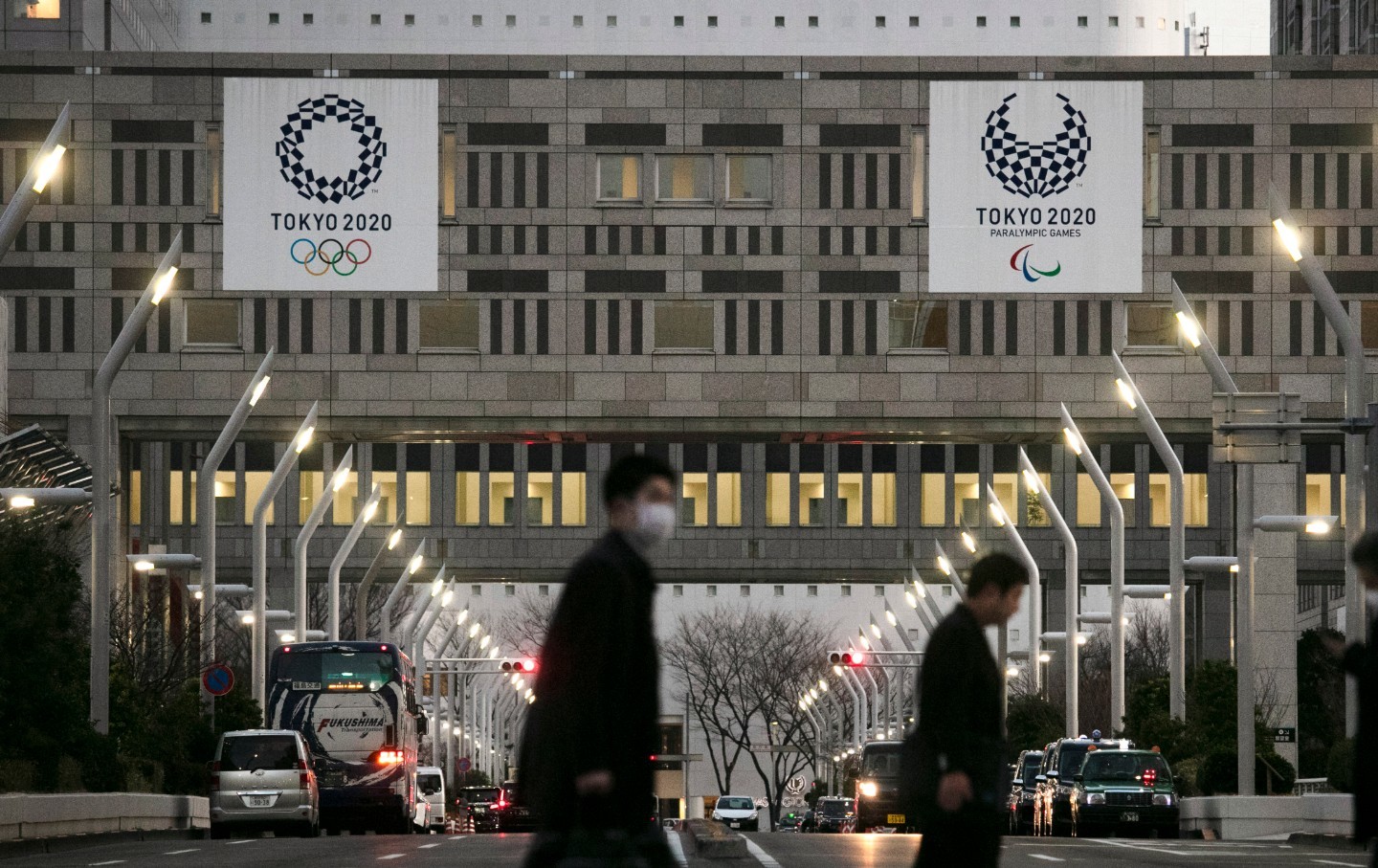
"We are preparing for the future."
The 2020 Games are the first in history to be postponed during peacetime, and organizers and officials have been at pains to insist that they can still be pulled off next year.
A further postponement has been ruled out by Olympic and Japanese officials and Koike said "there are no circumstances" under which she could envisage the Games being cancelled.
"Citizens of the world are seeing the Tokyo Games as a symbol that humanity will have defeated the coronavirus, that will lead to the Beijing Winter Games and then the Paris Games after that," she said.
"Unless Tokyo takes full efforts against the coronavirus, then what will happen to Paris four years from now?" she said.
"I think we have to make Tokyo a success first, otherwise it will leave a serious impact on Paris."
But domestic opinion appears at odds with the confident tones sounded by Japanese officials and organizers.
A poll released Tuesday by national broadcaster NHK found just 27 percent of respondents support holding the Games next year, with 32 percent backing cancellation and 31 percent favoring a further postponement.
Koike said she believed that would change, pointing to the extensive virus countermeasures that have been drafted by the government, Tokyo and Olympic organizers.
"I am convinced that people will come to see hope again, once coronavirus measures are firmly implemented," she said.
(12/15/2020) ⚡AMPby AFP
Tokyo 2020 Olympic Games
Fifty-six years after having organized the Olympic Games, the Japanese capital will be hosting a Summer edition for the second time, originally scheduled from July 24 to August 9, 2020, the games were postponed due to coronavirus outbreak, the postponed Tokyo Olympics will be held from July 23 to August 8 in 2021, according to the International Olympic Committee decision. ...
more...Seb Coe says that athletes must take their place in the queue for the COVID-19 vaccine
Healthy Athletes should take their place in the COVID-19 vaccine queue behind people with more pressing needs despite events such as next year’s Olympics looking set to be highly dependent on competitors arriving free from the virus, the head of world athletics Seb Coe said on Friday.
Most athletes in their 20s and 30s, across all sports, would be just about last in line in most countries when it comes to handing out the vaccine but the pressure to create a COVID-safe environment at sporting events has raised the question of whether they should be treated as a special case.

Coe trod a careful line when asked about the issue at a media conference on Friday. “We have to be sensitive here - there are many claims on that priority,” he said.
“Most of us are dependent on our front line workers and our emergency services and we also recognize that there are vulnerable people in the community and we want to make sure that we look after them as much as possible.
“I’m not sure that it is for sport to be pressing the case for fit young people. I would like, on the other hand, that when the vaccine does become available and that the athletes have the opportunity to make use of it that they do.
“I’m not mandating it and I don’t think it’s my job to tell people what they should or shouldn’t do in that area - I think that has to be a very personal and individualistic view.
“I hope they do avail themselves of it, I certainly would if I had the opportunity in the lead up to a Games like that, but it’s very much a personal decision.”
Coe, who won double Olympic gold over 1,500 meters and was the driving force behind Britain’s hosting of the 2012 Games, was confident next year’s Tokyo event, postponed from 2020, would go ahead, and said that if any country could respond to the challenge of a re-arranged Olympics it was Japan.
“I think the Games will go ahead. I was in Tokyo a week ago and spent 48 very intensive hours talking to the organizing committee and the government,” he said.
(12/14/2020) ⚡AMPby Mitch Phillips
Tokyo 2020 Olympic Games
Fifty-six years after having organized the Olympic Games, the Japanese capital will be hosting a Summer edition for the second time, originally scheduled from July 24 to August 9, 2020, the games were postponed due to coronavirus outbreak, the postponed Tokyo Olympics will be held from July 23 to August 8 in 2021, according to the International Olympic Committee decision. ...
more...With the 50K race walk dropped from the Paris 2024 program, World Athletics has the opportunity to suggest a new event format to Olympic organizers
The 50K was cut as part of the IOC’s goal of hosting a completely gender-equal event in 2024, with a 50-50 split between male and female athletes, and WA has now been tasked with creating a mixed-gender event. WA officials have said they plan on organizing a mixed-gender race-walk relay, and with so much still up in the air, it’s fun to think up different options for a new Olympic athletics event.
With that in mind, here are a few race formats we’d love to see in future Summer Games (even though they probably won’t ever be included).
Canadian Olympic race walker Evan Dunfee took to Twitter following the news of the 50K being cut to suggest a few alternatives for WA to consider. For one format, he said athletes could be tasked with walking 1K repeats until they can no longer hit a certain pace. For the men, this could be four-minute per-kilometre pace and for women it could be 4:30. The winners of the men’s and women’s 20K race walk events at the Rio Games averaged sub-four-minute and sub-4:30 paces, respectively, en route to their victories, so this event could go on for a while. It would be held on a track, and the last athletes standing would take home the gold.
The elimination mile is so much fun to watch, and we really think it should be raced more often. Athletes line up to start the race as they normally would, but they have to be prepared to sprint at the end of each lap, rather than saving their legs for a kick at the end of the mile-long race. The last-place runner at the end of each lap is eliminated, slowly cutting the field down until the final lap, when it’s a battle to see who can hold on for the win. This makes for entertaining and drama-filled racing, as every 400m, fans get to see athletes sprint to survive.

We know it’s highly unlikely that the IOC would OK an ultramarathon, but a last runner standing event would be really cool to see in the Olympics. Just like Big’s Backyard or the Quarantine Backyard Ultra, this race would see athletes run 6.7K every hour until only one runner remained. This is similar to Dunfee’s idea for the race walk, but longer, and the race format sees athletes run until they either drop out or fail to complete a 6.7K lap within the one-hour time limit. This would also work out well in terms of keeping the Games gender-equal, as this ultra format pits men against women.
Don’t get lapped
Another one of Dunfee’s ideas was a race in which an athlete’s only aim is to not get lapped. This could work for race walkers or runners, and it would probably be a lot like the elimination mile. Like Dunfee’s 1K repeat suggestion, this format could go on for a long time, but it would certainly be entertaining to watch the top athletes chase down their competitors.
Beer mile
Again, we understand that the IOC will probably never accept the beer mile as an Olympic event, but we can dream. The beer mile is always a fun race to watch, and seeing it on the Olympic stage would make it all the more exciting. It also helps that a lot of Canadians are good at the beer mile, so this would boost our national medal standings.
(12/14/2020) ⚡AMPby Ben Snider-McGrath
Paris 2024 Olympic Games
For this historic event, the City of Light is thinking big! Visitors will be able to watch events at top sporting venues in Paris and the Paris region, as well as at emblematic monuments in the capital visited by several millions of tourists each year. The promise of exceptional moments to experience in an exceptional setting! A great way to...
more...Genetics could be a poor predictor of athletic talent according to a new research
When describing the best runners in the world, a lot of people might say the top athletes are simply built for the sport or that they have the right genes for running. It’s a fair assumption that an athlete’s prowess is mostly due to winning the genetic lottery, but new research out of the Human Kinetics Journal suggests otherwise.
Through case studies of five elite athletes, researchers found that genetic testing couldn’t distinguish between an elite athlete and a non-elite participant.
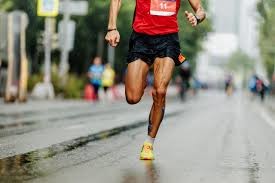
The study looked at five elite track runners (including one Olympic champion) and compared their scores to 503 non-athletes. Each runner’s genotype score (essentially an assessment of DNA) was observed and used as the basis of comparison. The results were surprising, indicating that genotype has very little to do with predicting international medallists.

Researchers found that elite speed-power athletes scored higher than endurance athletes when looking at the speed-power genotype score. This makes sense.
What doesn’t make sense is that using this same score, 68 non-athletic participants scored higher than the elite athletes. That’s 14 per cent of the non-athletic population in the study who, based on their speed-power genotype alone, should be better athletes than the elite participants. Another surprising finding was that when the endurance genotype was assessed, the speed-power athletes scored higher than the endurance runners.
Study authors noted that there is “considerable interest in understanding whether [genetic] information can be utilized to identify future elite athletes.” From what they found in their research, it would be incredibly difficult to predict who would grow up to become an elite athlete based on genetics alone. It can’t be denied that genetics play a role in an individual’s success in sport. If that were all that mattered, though, those 68 non-athlete participants who scored higher than the five elite athletes in this study would likely be elite athletes themselves.
With all this in mind, the next time someone suggests that an athlete won the genetic lottery, kindly point to this study and note that genetics may not be entirely responsible for one’s success. There are many more factors that make an athlete, and this sample strongly suggests that it takes much more to become a world-class runner than just a good pair of lungs and some fast-twitch muscle fibres.
(12/14/2020) ⚡AMPby Canadian Running
Tulsi Gabbard Introduces Bill That Would Ban Trans Women and Girls from Female Sports
Democratic Hawaii Rep. and former 2020 Presidential candidate Tulsi Gabbard introduced a bill into the U.S. House of Representatives on Thursday that would dictate Title IX protections for female athletes be based on biological sex—a term often used to refer to gender assigned to a person at birth—thats advocate have decried as inherently transphobic.
Title IX prohibits discrimination on the basis of sex in any educational program or activity that receives federal funding, and is well known for its requirement that women’s sports programming receive equal support to men’s programming.

Gabbard, who declined to run for re-election in 2020 and is in the final days of her Congressional term, introduced the bill, titled the “Protect Women’s Sports Act,” with Republican Oklahoma Rep. Markwayne Mullin. Republican Georgia Sen. Kelly Loeffler introduced a similar bill, titled “the Protection of Women and Girls in Sports Act,” into the Senate in September. (Loeffler’s bill has not been taken up for a vote.)
“Title IX is being weakened by some states who are misinterpreting [it], creating uncertainty, undue hardship and lost opportunities for female athletes,” Rep. Gabbard said in a statement. “Our legislation protects Title IX’s original intent which was based on the general biological distinction between men and women athletes based on sex.”
“Title IX was designed to give women and girls an equal chance to succeed, including in sports,” said Rep. Mullin in a statement of his own. “Allowing biological males to compete in women’s sports diminishes that equality and takes away from the original intent of Title IX.”
If implemented into law, the bill would deny federal funding to schools that “permit a person whose biological sex at birth is male to participate in an athletic program or activity that is designated for women or girls.” It was immediately decried by LGBTQ+ advocates.
“It’s shameful that one of Rep. Gabbard’s last acts in Congress is to attack trans youth,” said Chase Strangio, deputy director for Trans Justice with the ACLU LGBT & HIV Project in a statement provided to TIME. “While this bill will not advance, it has already sent a dangerous message to trans youth and is spreading the same lies that are fueling attacks on trans youth in state legislatures.”
“Rep. Gabbard’s harmful and unnecessary bill is not about protecting girls and women’s sports. There’s no evidence in the 18 states with policies that allow transgender athletes to participate on teams consistent with their gender identity that inclusion negatively impacts athletic programs,” added GLAAD’s Alex Schmider, Associate Director Transgender Representation. “This is more about opportunistic people like Rep. Gabbard who, under false pretense, claim to be protecting girl’s sports to justify discrimination.”
Mara Keisling, executive director of the National Center for Transgender Equality, concurred, describing Gabbard’s “play for attention” as “embarrassing” in a statement. “She should be ashamed of trying to burnish her right-wing credentials with attacks on transgender student athletes,” Keisling’s statement continued. “It’s just a hurtful attempt to get on TV without any regard to the damage such rhetoric does to transgender kids.”
Gabbard did not immediately respond to TIME’s request for comment on the backlash.
Gabbard’s record on LGBTQ+ rights received increased scrutiny during her 2020 presidential campaign. In the early 2000s, she worked for her father, Hawaii state Senator Mike Gabbard, and his anti-gay organization The Alliance for Traditional Marriage, that campaigned against the legalization of same-sex marriage in Hawaii. She has since publicly reversed her position and signed an amicus brief challenging the Defense of Marriage Act in 2013.
“In my past I said and believed things that were wrong, and worse, they were very hurtful to people in the LGBTQ community and to their loved ones,” Gabbard said in a video apology posted shortly after she announced her presidential candidacy. “My views have changed significantly since then and my record in Congress over the last six years reflects what is in my heart: a strong and ongoing commitment to fighting for LGBTQ rights.”
Yet advocates argue the introduction of “Protect Women’s Sports Act” goes directly against those commitments.
A number of state legislatures have tried to pass legislation over the past year aimed at prohibiting trans women and girls from participating in female sports teams. Idaho Gov. Brad Little signed the “Fairness in Women’s Sports Act” into law in March, which said no female sports teams could be open to “students of the male sex” and a “dispute” could be resolved by presenting a signed physician’s statement on the student’s sex based on their “internal and external reproductive anatomy.” A federal judge struck down the law in March, writing that the state had not provided a “legitimate interest” the Act served “other than an invalid interest of excluding transgender women and girls from women’s sports entirely, regardless of their physiological characteristics.”
“This is a victory for all women and girls in Idaho,” the ACLU tweeted at the time. “Trans people belong in sports.”
(12/13/2020) ⚡AMPThe Middle of a Run Sometimes Feels Like the Hardest, Right? Here‘s How to Push Through
New research published in the journal Cortex found that in tasks that extend over time—such as a training run or race—people tend to put most of their effort into the start and finish, and much less into the middle.
While it’s human nature to do this, there are a few ways you can approach this lower point of effort, such as adding in sprints to the middle of your runs to mix things up or gradually building intensity over time.

Do you typically begin your runs like a racehorse coming out of the gate and end your runs with a recharged kick, but find the middle miles to be the most grueling part? Well, you’re definitely not alone.
It turns out that when doing tasks that extend over time—such as a training run or race—people tend to put most of their effort into the start and finish, and much less into the middle, according to a recent study published in the journal Cortex.
Researchers asked 18 people to play a simple computer game in which they controlled a spaceship that shot down asteroids. They were told that for each session, top performers would get an additional financial bonus, paid after the last session.
They found that participants tended to invest high levels of effort in the beginning and toward the end of a game, in a U-shaped pattern. This is consistent with previous research, which includes athletes in track races, swimming, rowing, and cycling, which all involved what they called a STIM pattern, short for “stuck in the middle” effect.
In terms of why this happens, it’s likely an unconscious belief in balancing cost and reward, according to study coauthor Nitzan Censor, Ph.D., a professor in the Sagol School of Neuroscience at Tel Aviv University in Israel.
“The STIM pattern reflects higher reward at the beginning and end, and the longer the task goes on, the more people tend to perceive that the middle part simply costs too much in terms of effort,” he told Runner’s World. “The result is that effort can decrease by quite a bit over the course of a task, especially if the beginning and end are seen as especially rewarding.”
For example, you might love the excitement of the start line and, honestly, who doesn’t embrace seeing the finish line during a race of any distance? But if you’re hooked on those two elements as your rewards, you might actually be decreasing the amount of effort you put in during the race itself.
f you’re someone who needs that extra motivation during the middle portion of your miles or your training cycle, there are a few possible ways to approach this point of lower effort, according to certified running coach Kourtney Thomas, C.S.C.S. The first is to simply acknowledge that this is what people naturally tend to do.
“Just knowing this is common, and that most people tend to exert less effort in the middle of training, can be helpful for giving yourself a break,” she told Runner’s World.
But if that mindset is sabotaging your training runs and races—by slowing you down, for example—then you can make tweaks based on modifying that “middle time” of your training. For example, you can start at an easier pace—as opposed to gunning it right out of the gate—and build intensity over time, said Thomas. That can help to shorten the period of less effort.
Another tweak to consider is having different goals for the middle of your run, she added. Getting started and reaching a certain goal—like time or distance—provide their own rewards, but for the rest, it helps to mix it up.
“Maybe this is where you introduce some sprints, for example,” said Thomas. “That creates mini goals in the midst of your longer run.”
(12/13/2020) ⚡AMPby Runner’s World
Halifax Road Hammers to run 14,000K for city's homeless
Thirty teams of four will each run 477K in the month of December for the club's #StridesForShelter initiative
Members of the Halifax Road Hammers, one of the biggest running clubs in Nova Scotia, have a busy few weeks ahead of them with their December-long initiative #StridesForShelter. This fundraising challenge will see 30 teams of four runners each running 477K. The campaign started on December 1, and the teams of Road Hammers have until the end of the month to hit that 477K goal, which represents the number of homeless people in Halifax. In total, the club will run a collective 14,310 kilometres by December 31 while raising funds and supporting an important cause along the way.

The CBC recently reported that Halifax had reached its current total of 477 people living homeless in the city. This number is more than double the 230 people who were reported homeless in October 2019. Within that group of 477 people exists a smaller population of 375 citizens who are considered chronically homeless, which means they haven’t lived in suitable housing for at least six months. Once again, this is more than double the results from the 2019 report, which said 140 people were chronically homeless.
Road Hammers head coach and founder Lee McCarron says he knows how difficult this year has been for everyone, including his athletes. “We have a group of incredible runners on our team,” he says. “This is a group of people who each have personal challenges and obstacles they have had to overcome during the pandemic, and yet they have found a way to stay focused and supportive of each other throughout. I wanted to package up that energy, grit and determination and offer it to a group of people who need our help.”
The #StridesForShelter initiative is an opportunity for the Road Hammers to team up (while still running apart) with one another and work toward a collective running goal while also giving them the chance to support a greater cause as well. “By focusing on our mindset, action and attitude we can take the best care of ourselves and do what we can to strengthen our community,” McCarron says. The proceeds from the club’s fundraiser will go straight to Shelter Nova Scotia, a nonprofit that operates six facilities in the province and supports more than 1,300 people each year.
Anyone interested in learning more about Shelter Nova Scotia or donating to the organization can click here. If you do donate, be sure to include that you’re supporting the #StridesForShelter fundraiser when asked “Who are you honouring?”
(12/13/2020) ⚡AMPby Running Magazine
IOC passes on cross-country, adds breakdancing to Paris 2024 program
The 2024 Games won't feature cross-country or 50K race walk events
In July, World Athletics (WA) said it would lobby to get cross-country included in the Paris 2024 Olympics. The International Olympic Committee (IOC) dashed any hopes of an Olympic cross-country race in Paris, though, as it was announced on Monday that breakdancing would make its Olympic debut instead. This decision comes as part of the IOC’s efforts to showcase more youth-focused events that are “inclusive, engaging and can be practised outside conventional arenas.” The IOC also noted that the 50K race walk has officially been cut from the 2024 program, and it will be replaced by a new (but so far undetermined) mixed-gender athletics event.
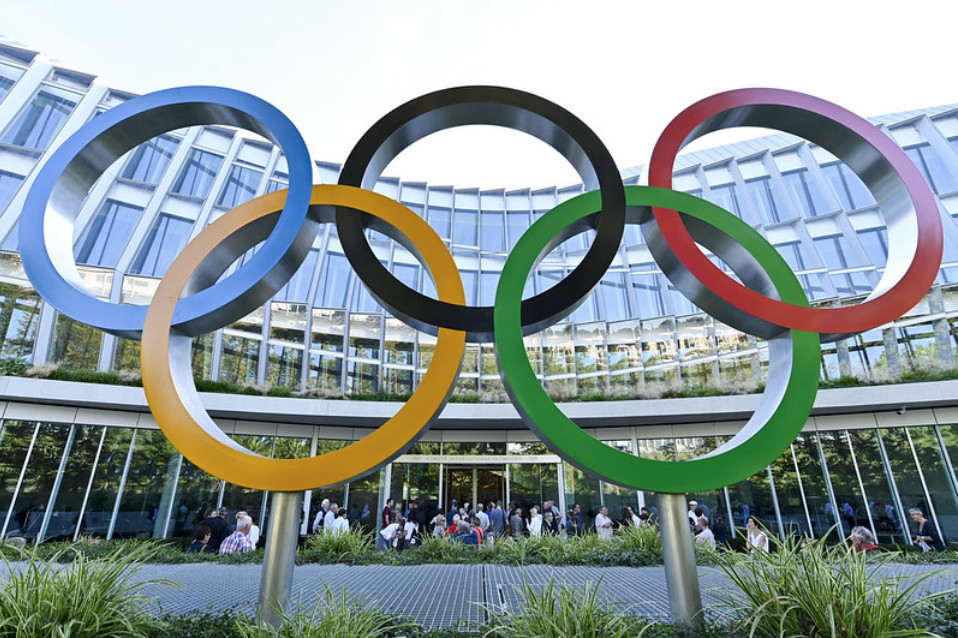
No XC in 2024
WA released a statement following news of the IOC’s decision to pass on cross-country for the 2024 Games. “Cross-country is an exciting and fast-growing sport around the world, so we are clearly disappointed it will not feature at the Paris 2024 Olympic Games,” the statement reads. “However, we have developed what we believe is a really exciting mixed relay product and have been encouraged by the commitment from the IOC that they will continue to work with us to realize our vision of seeing cross-country in a future Olympic Games.”
WA’s plan for the cross-country event, which was released in July, featured slots for 15 countries, each of which would have had a team of two men and two women. The race would have been a 20K relay in which each runner covered two laps of a 2.5K course. Had cross-country been approved for the 2024 program, it would have been the first time the sport was included in the Olympics since the 1924 Games, which were also held in Paris.
Replacing the 50K
Gender equality is the other main focus (in addition to youth) of the IOC heading toward 2024. The Tokyo Olympics are set to have females represent 48.8 per cent of all athletes competing at the Games next summer, but the IOC announced that it will be a 50-50 split in Paris with the same number of male and female athletes. Because of this, the 50K race walk was cut, as it has traditionally only been contested by men. The IOC has given WA until May 31, 2021, to propose a new mixed-gender event to replace the 50K race walk. In the WA response to the IOC’s news, it says officials are “only considering a mixed-gender race walk event” to replace the 50K.
(12/13/2020) ⚡AMPby Running Magazine
Tokyo 2020 Olympic Games
Fifty-six years after having organized the Olympic Games, the Japanese capital will be hosting a Summer edition for the second time, originally scheduled from July 24 to August 9, 2020, the games were postponed due to coronavirus outbreak, the postponed Tokyo Olympics will be held from July 23 to August 8 in 2021, according to the International Olympic Committee decision. ...
more...World records ratified: Gidey's 5000m and Cheptegei's 10,000m
The monumental performances of Ethiopia’s Letesenbet Gidey and Uganda’s Joshua Cheptegei, to break two of the sport’s most revered world records within one glorious hour, have been officially ratified.
Gidey’s 5000m mark of 14:06.62 and Cheptegei's 10,000m performance of 26:11.00 were both set at the aptly named NN Valencia World Record Day on 7 October.
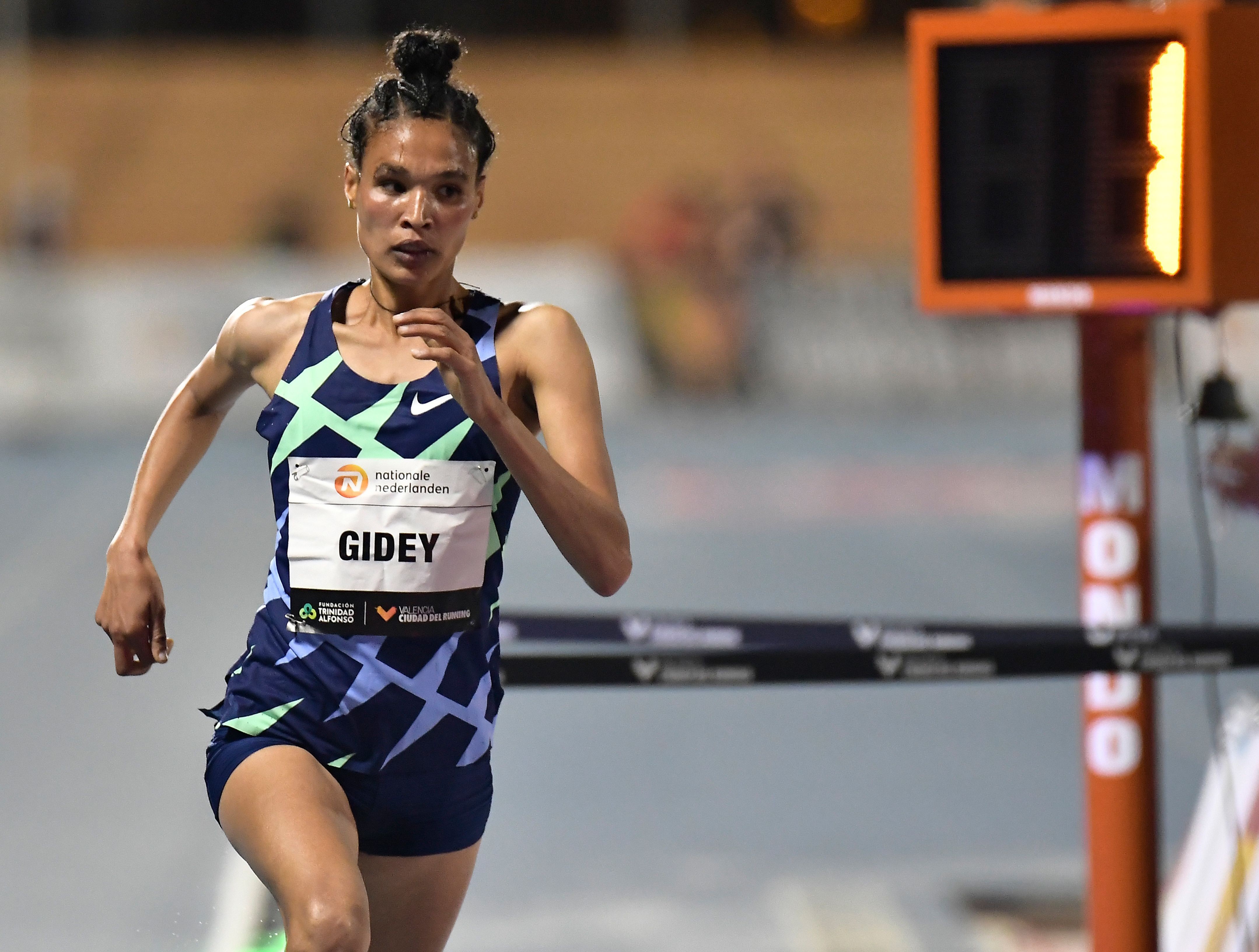
Gidey went first, producing a stunning run that clipped more than four seconds from the previous record set by Tirunesh Dibaba 12 years earlier. A few minutes after the 22-year-old crossed the line, Cheptegei took his turn, churning out 25 laps of the track in an average of less than 63 seconds apiece to better Kenenisa Bekele’s 15-year-old benchmark by more than six seconds. The records for those two events had never been broken on the same day.
The two-race meeting was held at the Spanish city’s intimate Turia Stadium before a crowd limited to less than 150 due to Covid-19 pandemic restrictions.
That scene was in stark contrast to those in Oslo, on 6 June 2008, when Dibaba took command of the world 5000m record with a 14:11.15 run and three years earlier, in Brussels on 26 August 2005, when Bekele clocked 26:17.53 to clip 2.57 seconds from his own year-old mark. The roar of capacity crowds at the events, both fixtures of the Golden League series, were crucial in those record assaults. In Brussels, the pulsating beat provided by an African expat drum orchestra added to the thunder produced by the crowd of 47,000 that packed the King Baudouin Stadium.
That was absent in Valencia, but it didn’t seem to matter to either Gidey or Cheptegei whose phenomenal form and singular focus landed both in the record books. For Cheptegei, whose performance came 54 days after he broke the world 5000m record in Monaco, where attendance was also restricted, the circumstances of the setting wasn’t anything new.
“I wanted to show the sports lovers of the world that the track is exciting," said the 24-year-old, who became the 10th man to hold the 5000m and 10,000m world record concurrently.
Pace setters brought Cheptegei through the first half in 13:07.73, before the Ugandan forged on alone over the final 12 laps. He slowed slightly over the sixth kilometre but then picked up the pace in the seventh to steadily build a gap on Bekele's legendary mark before sealing it with a 60-second final lap.
Alluding to the coronavirus pandemic, Cheptegei added, "In this difficult situation, I hope things like this can still give us joy and some hope for tomorrow."
Gidey, a cross country standout with two world U20 titles to her credit and a bronze medal finish at the World Cross Country Championships in Aarhus, Denmark, last year, arrived in Valencia with just one race on her CV this season, a solid 14:26.57 run in Monaco, but reportedly in form suggesting that she could run significantly faster.
Unlike Cheptegei, who made no secret about his planned assault on the record, Gidey opted for a more understated approach in the lead-in to the meeting, choosing to play down pre-race talk of her attack on Dibaba's mark. But her ambitions became evident when she passed the 3000-metre point nearly seven seconds ahead of world record pace. She closed the deal with back-to-back 67-second laps before crossing the finish.
“I have been dreaming about this (setting a world record) for six years,” said Gidey, who hadn't won a 5000m race since 2016. "I am very happy now."
(12/13/2020) ⚡AMP
by World Athletics


